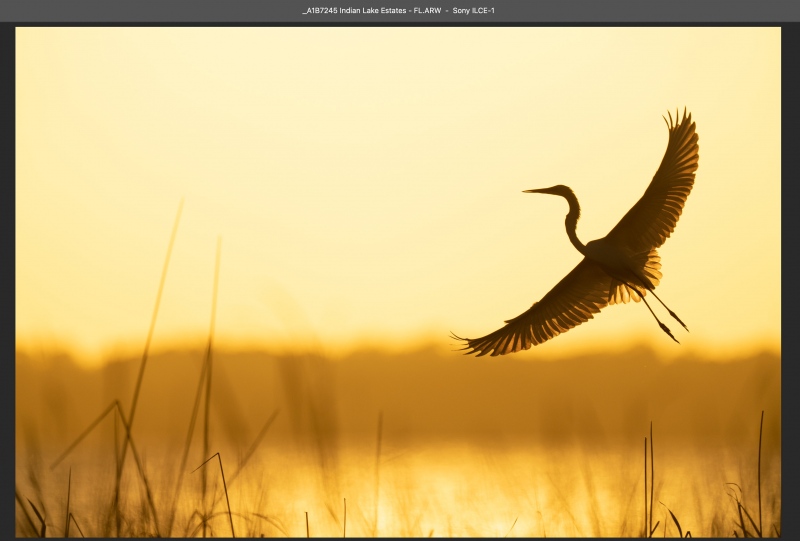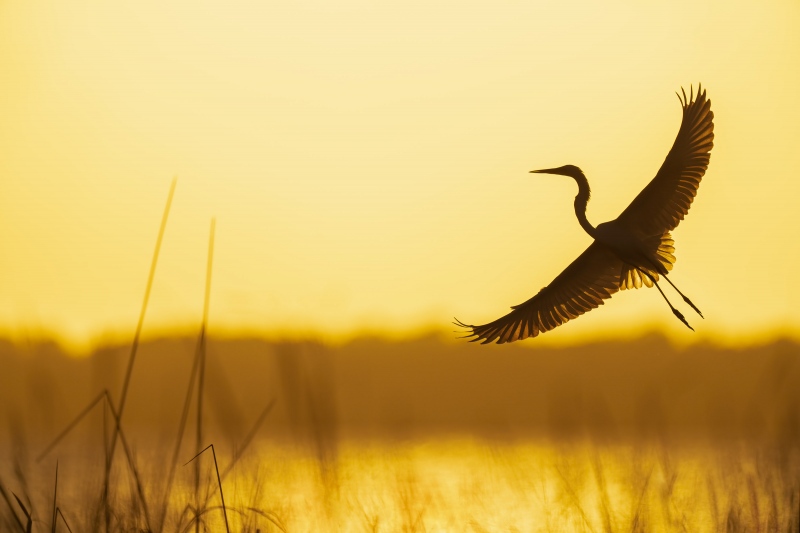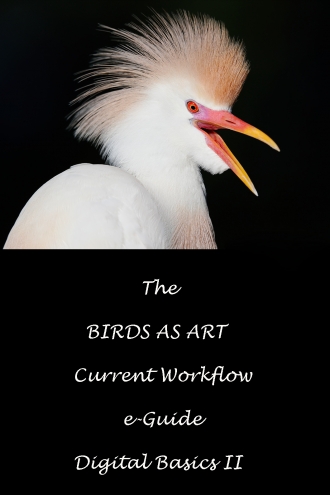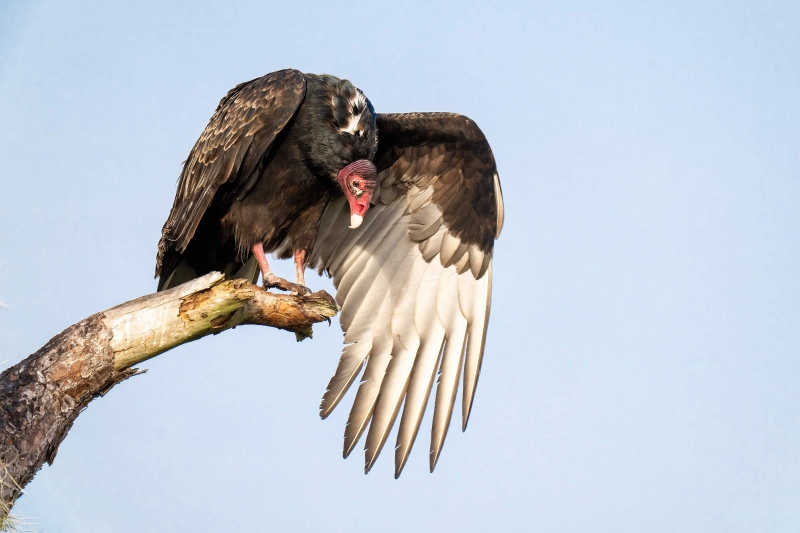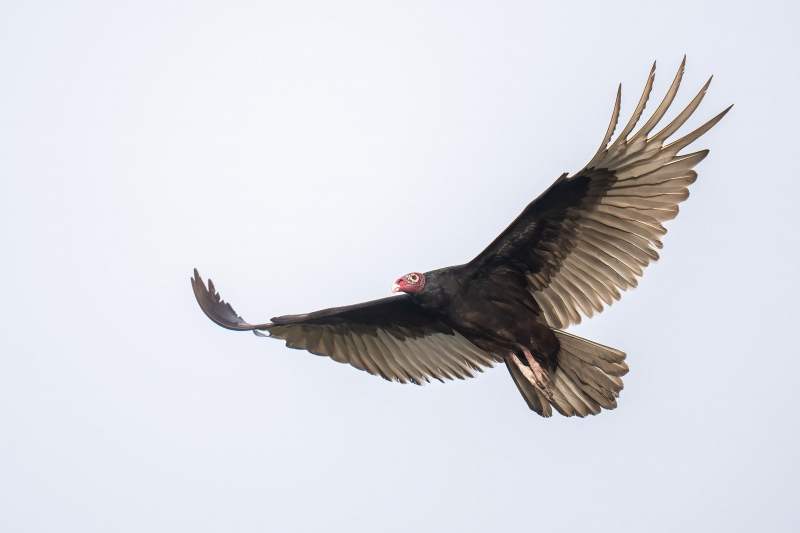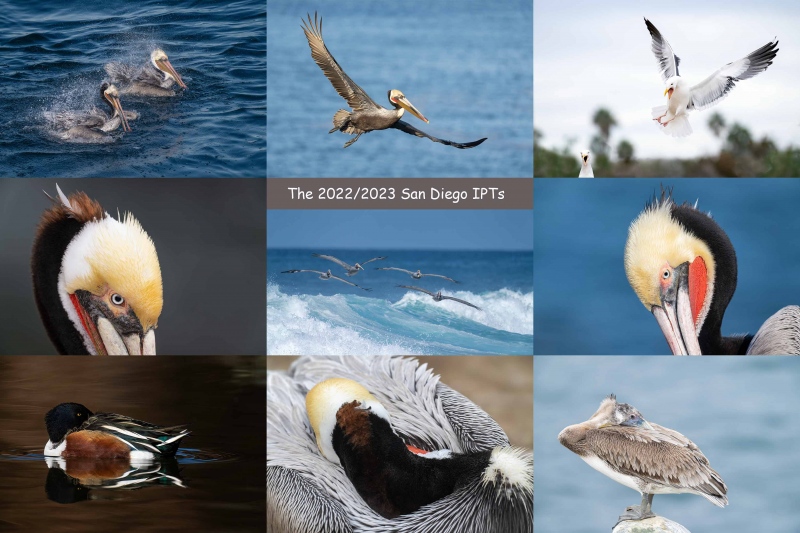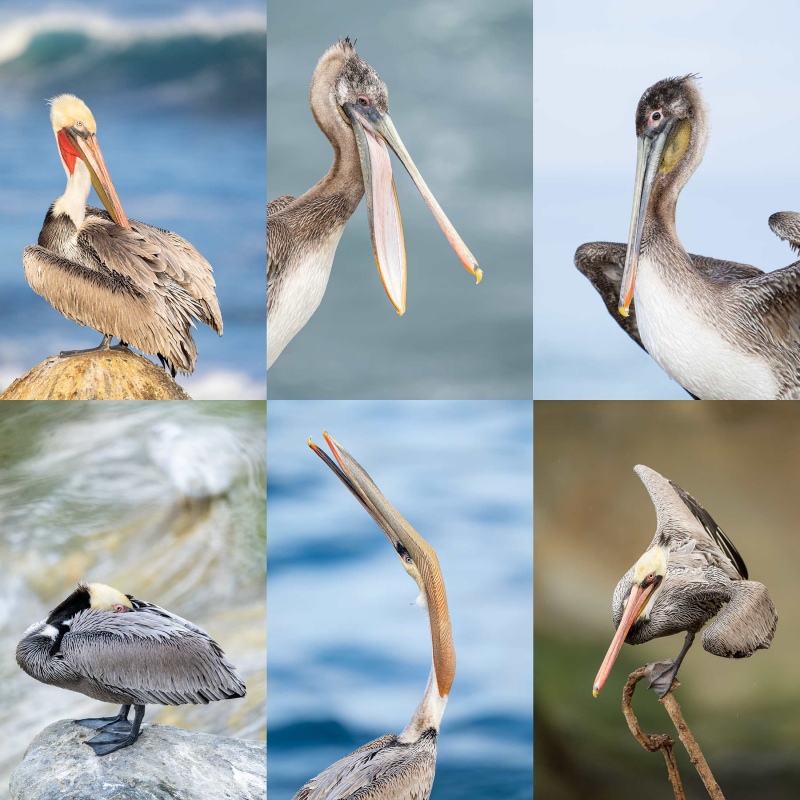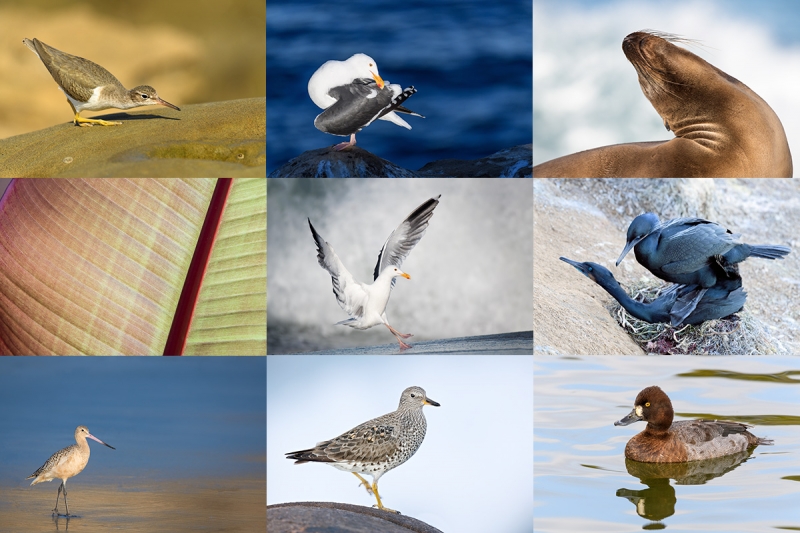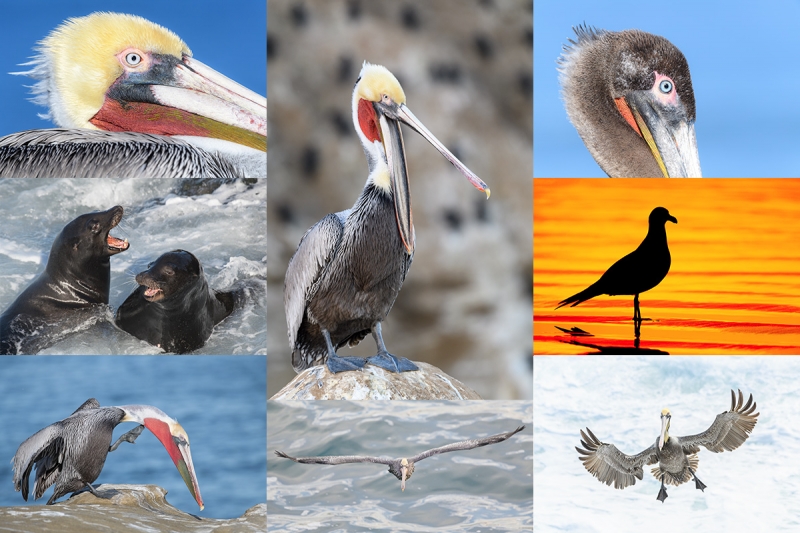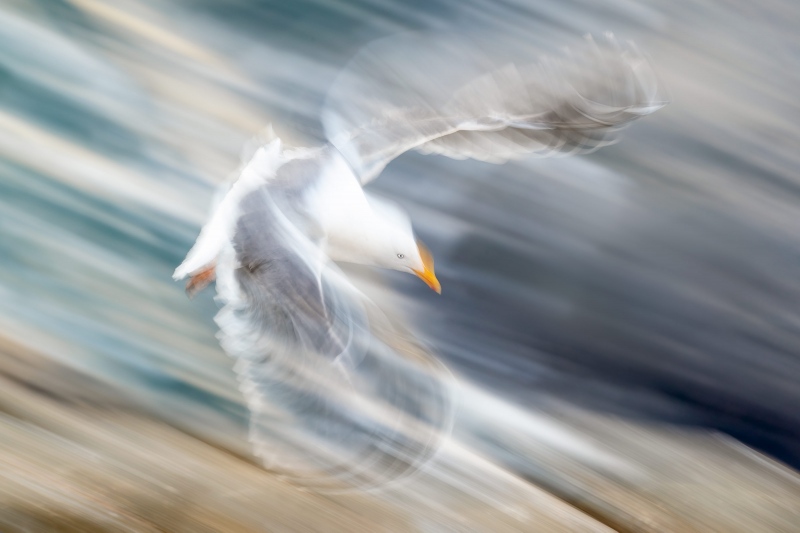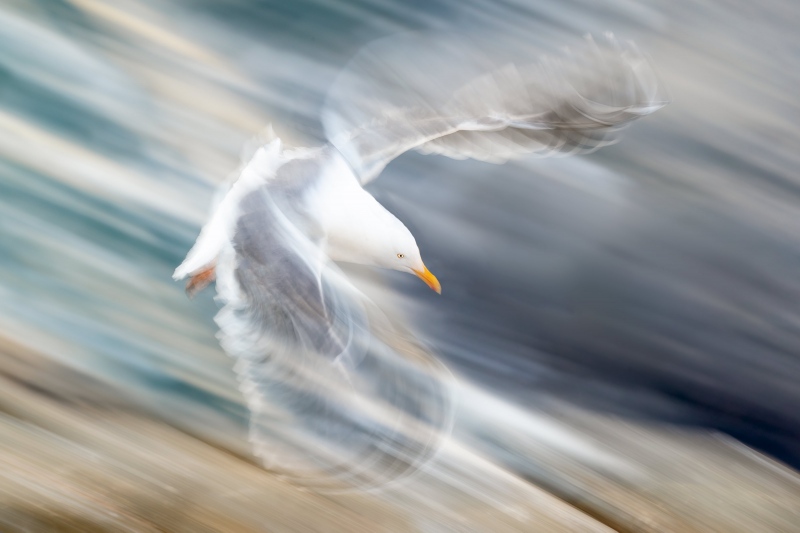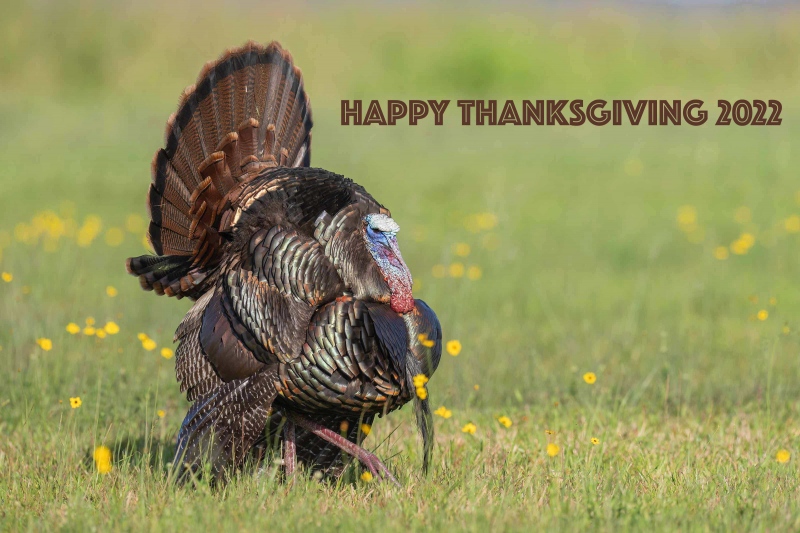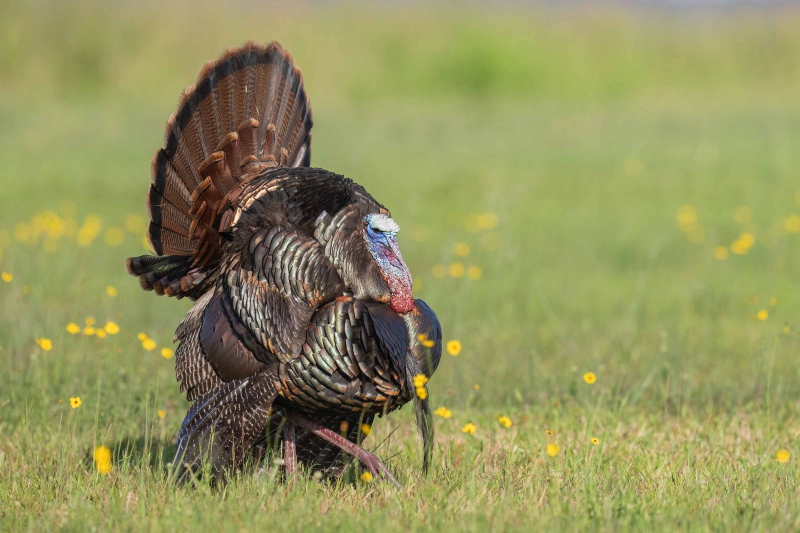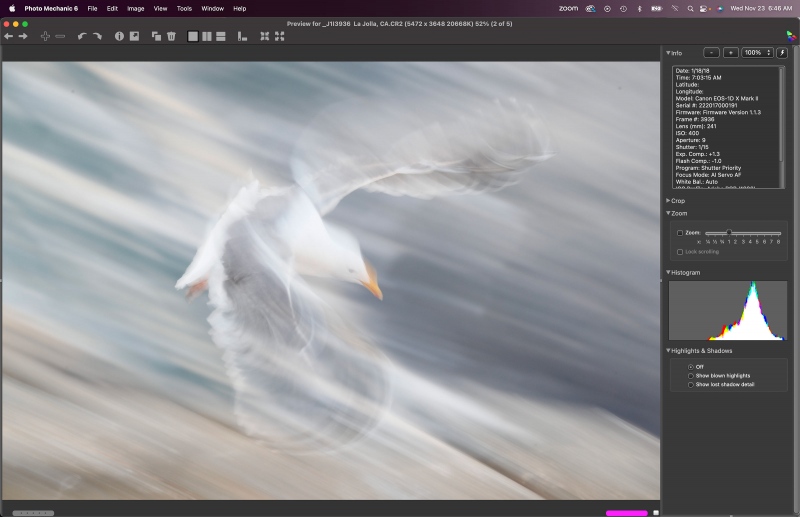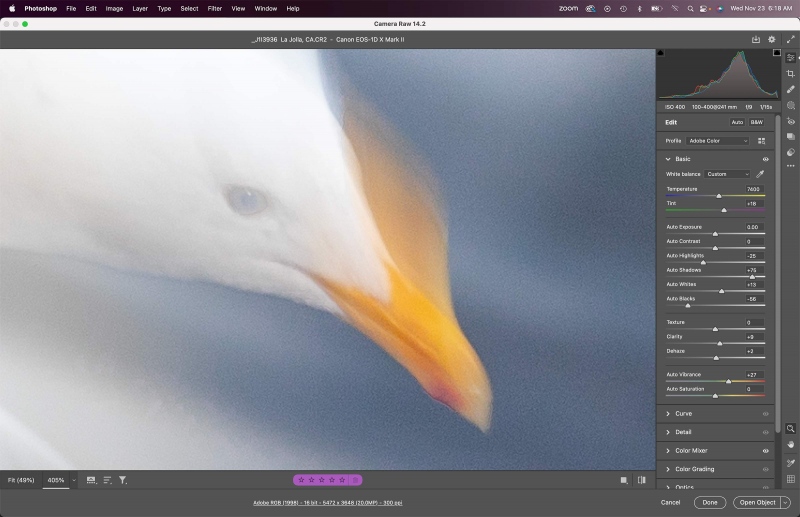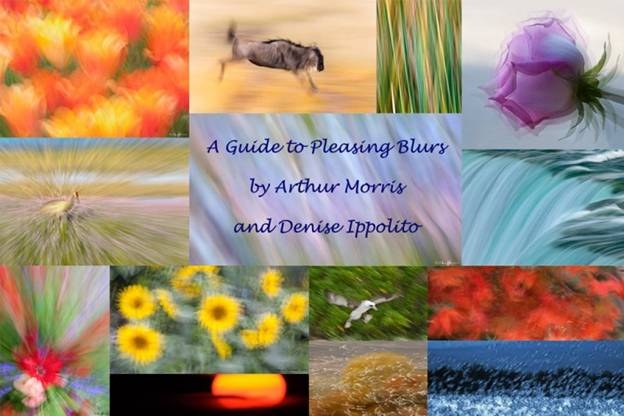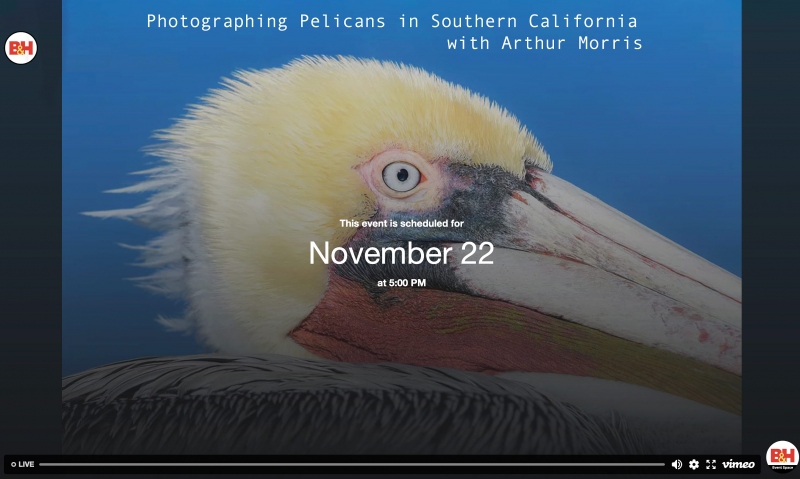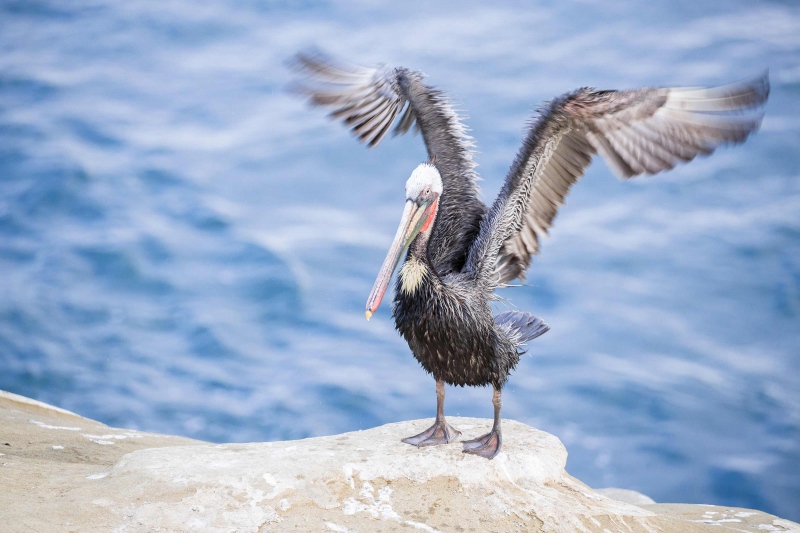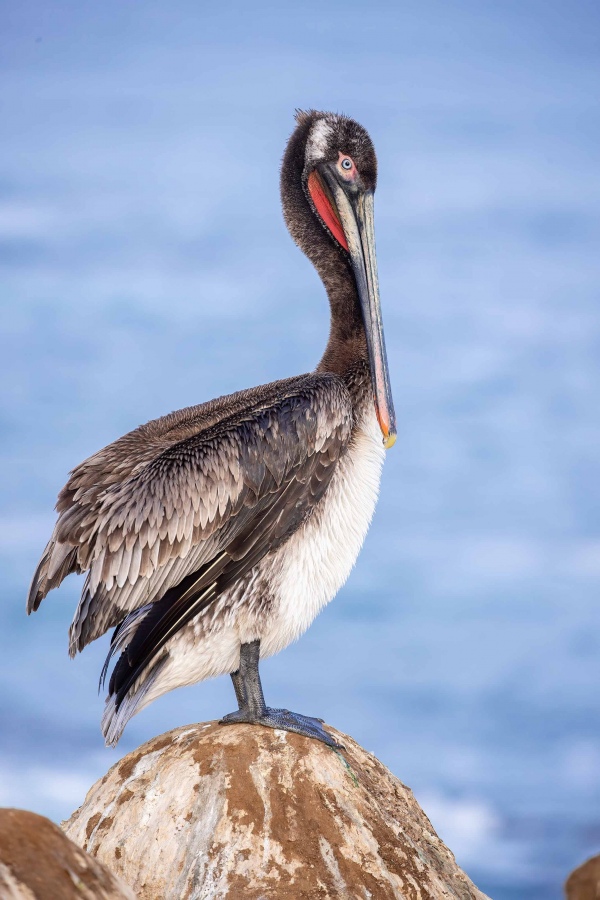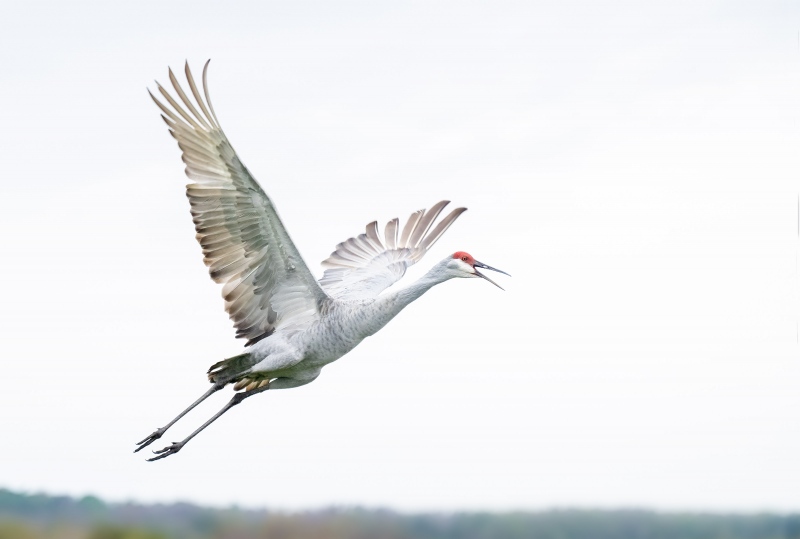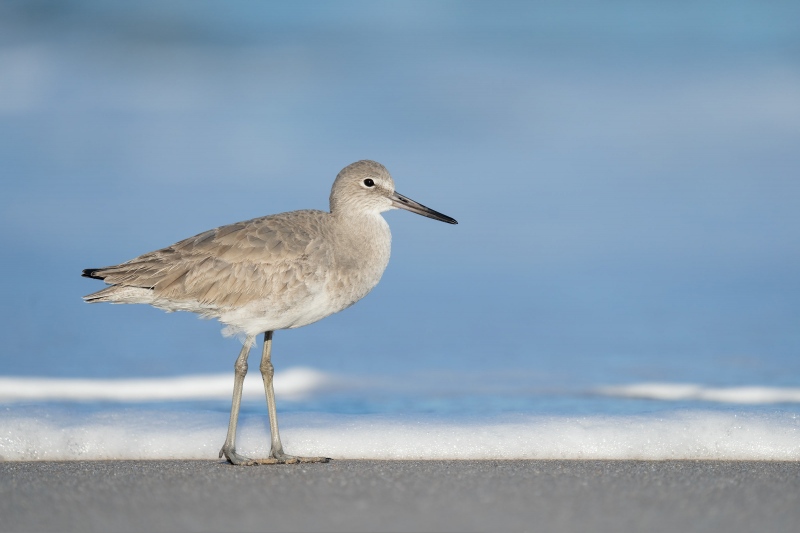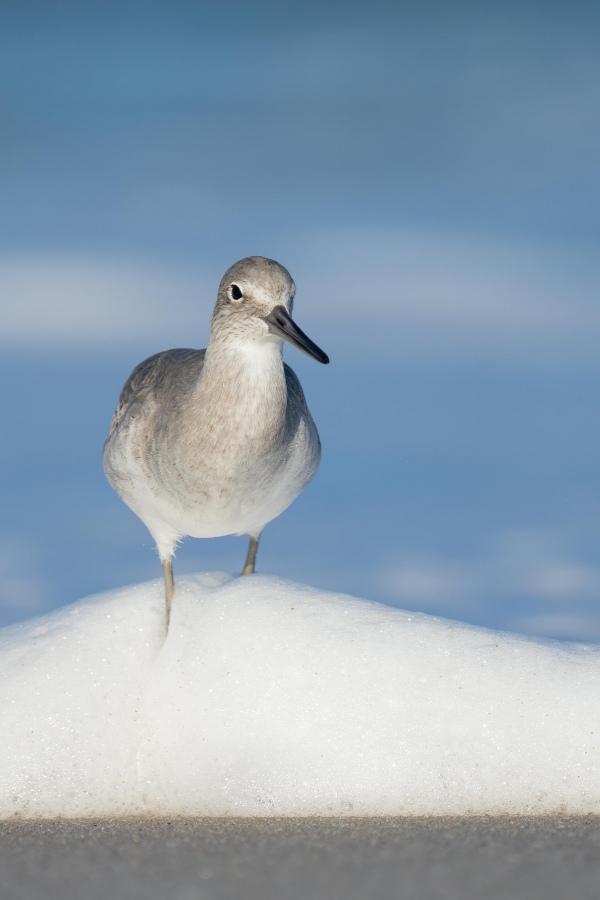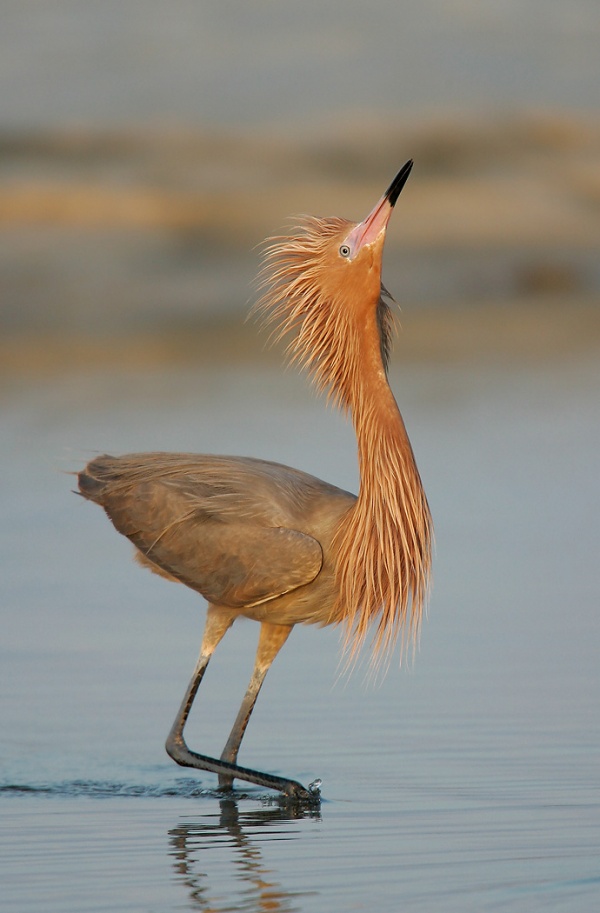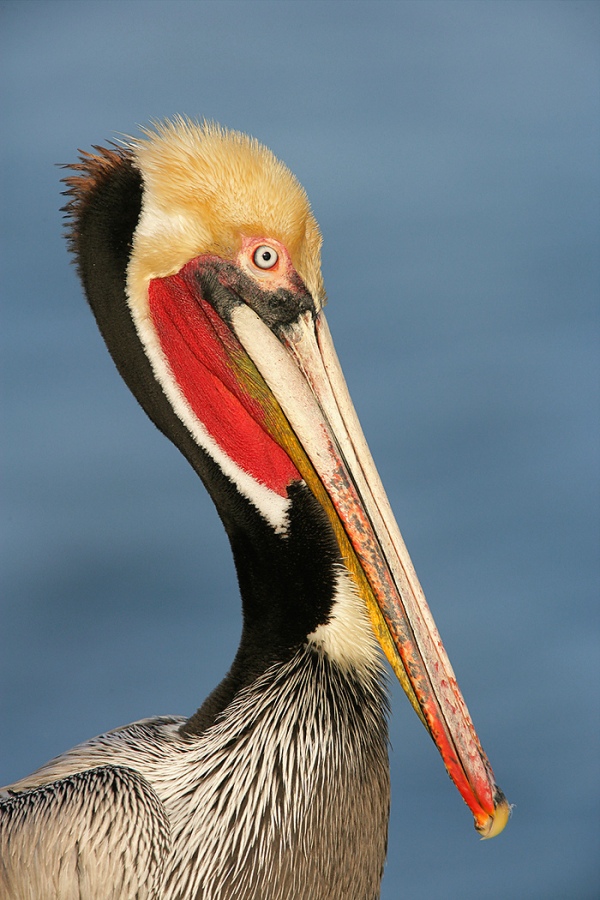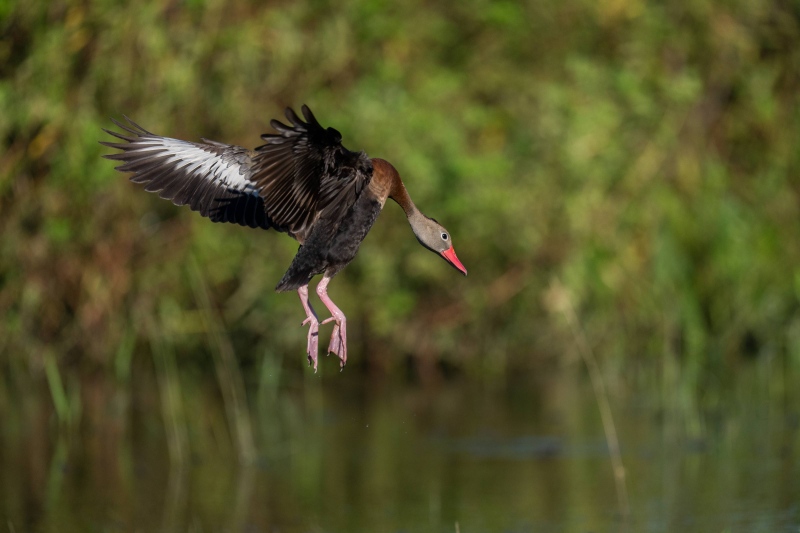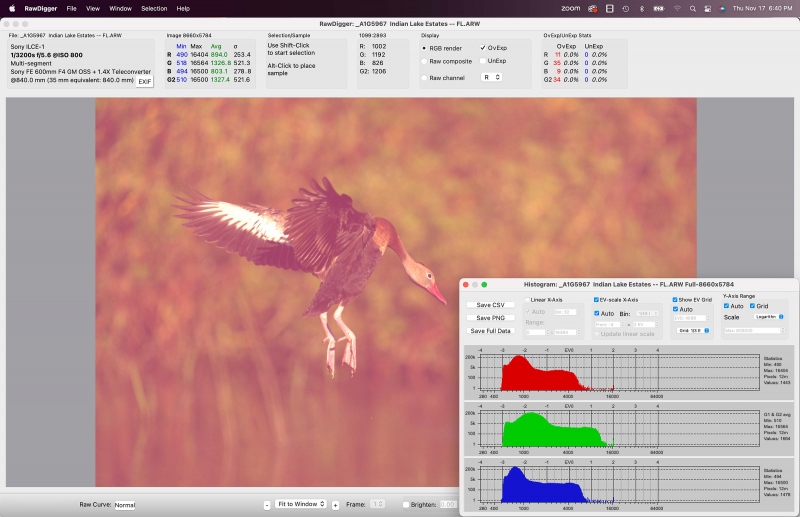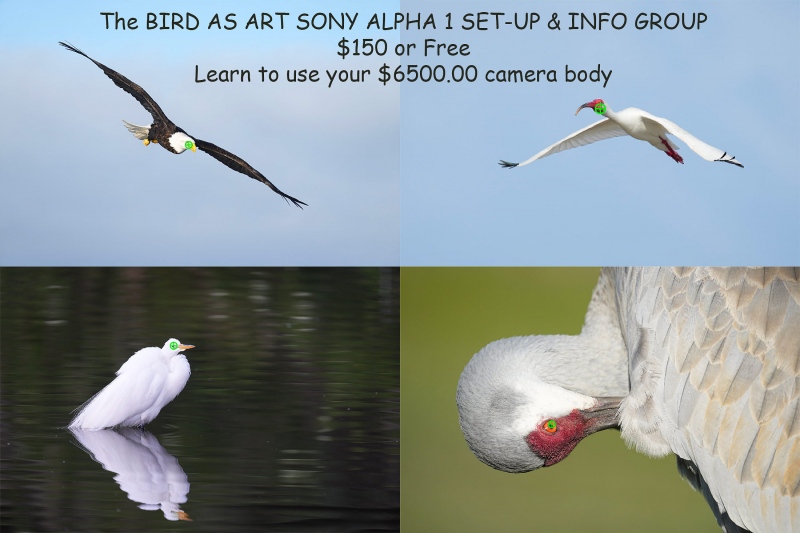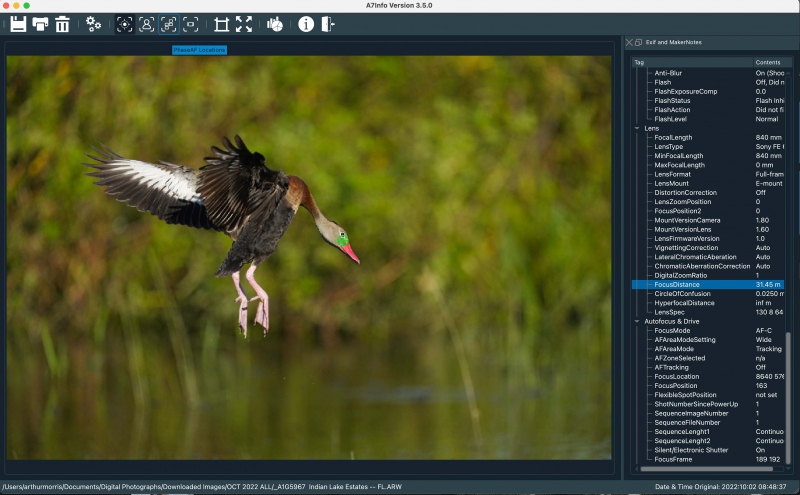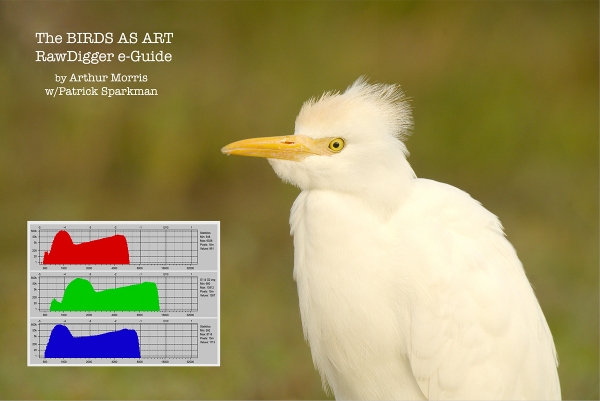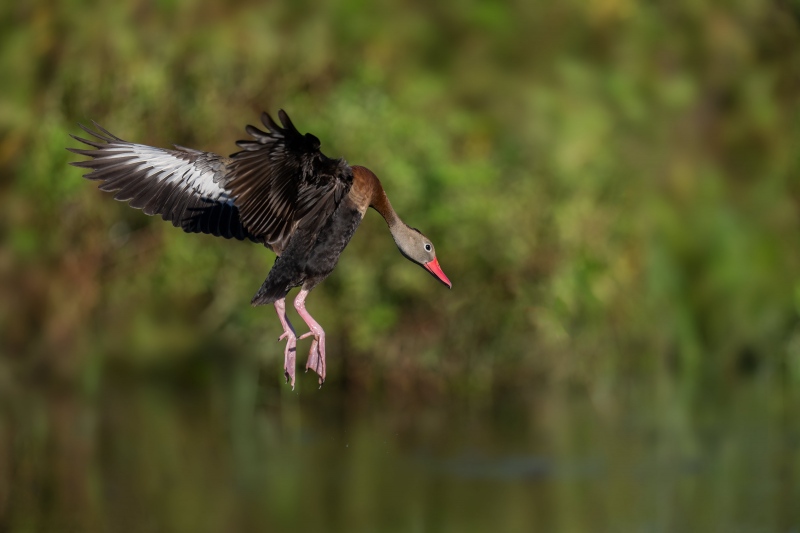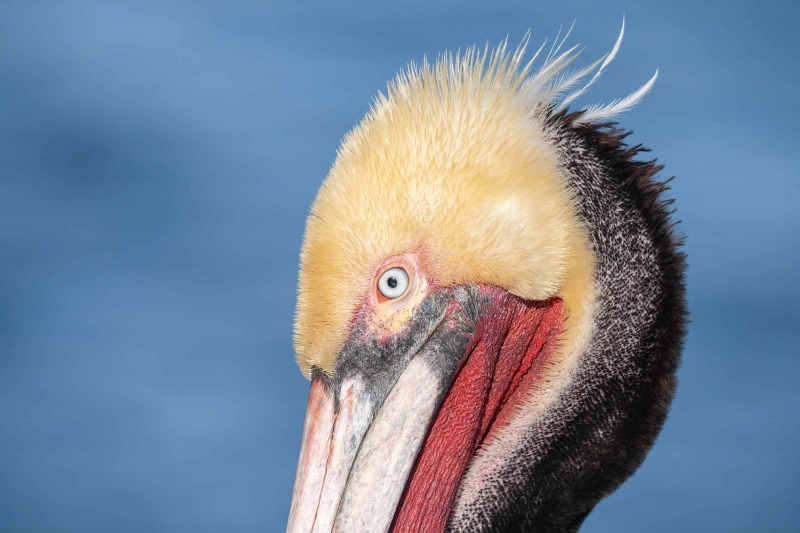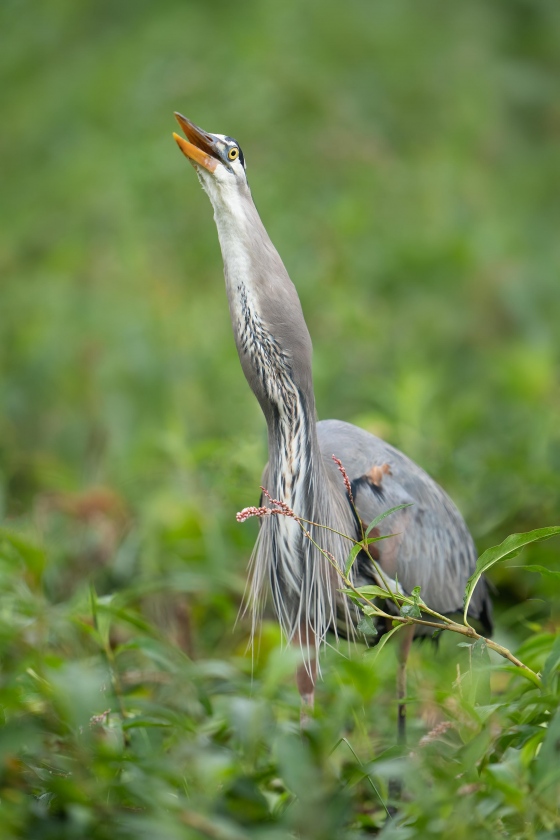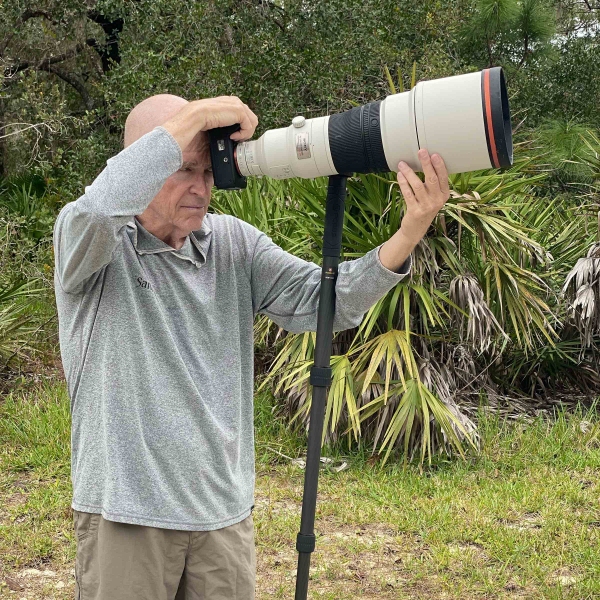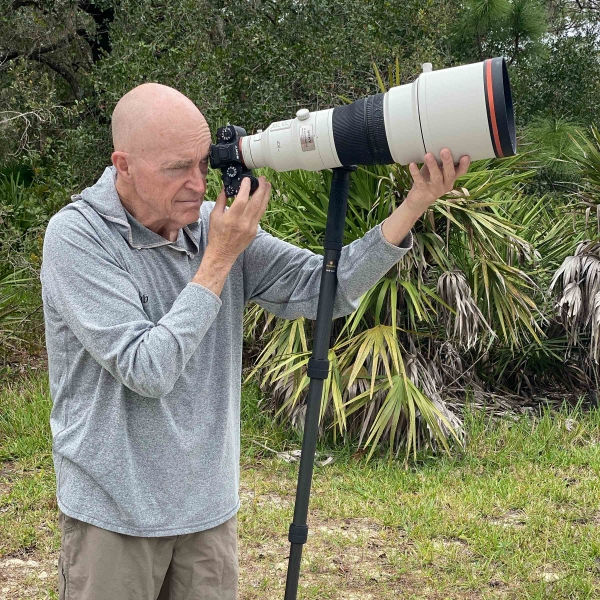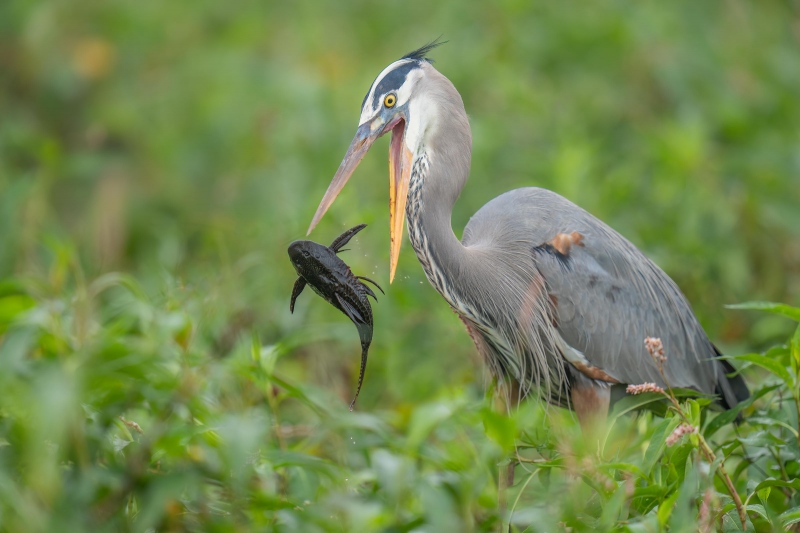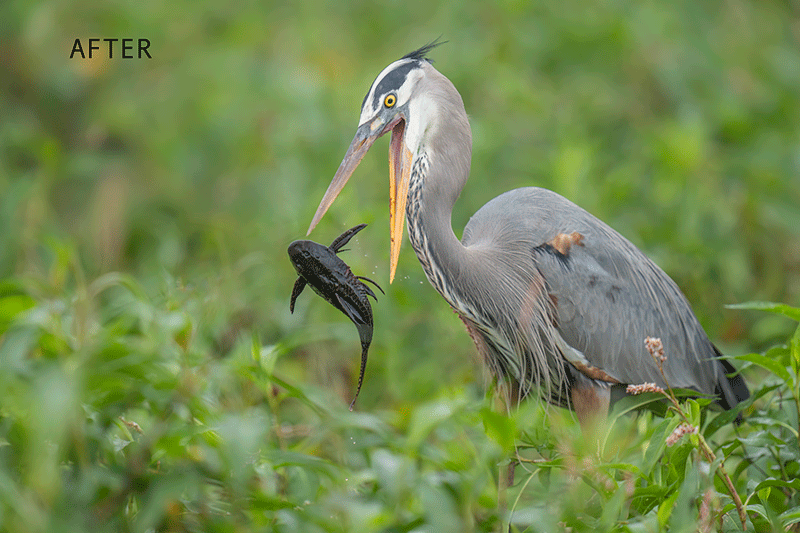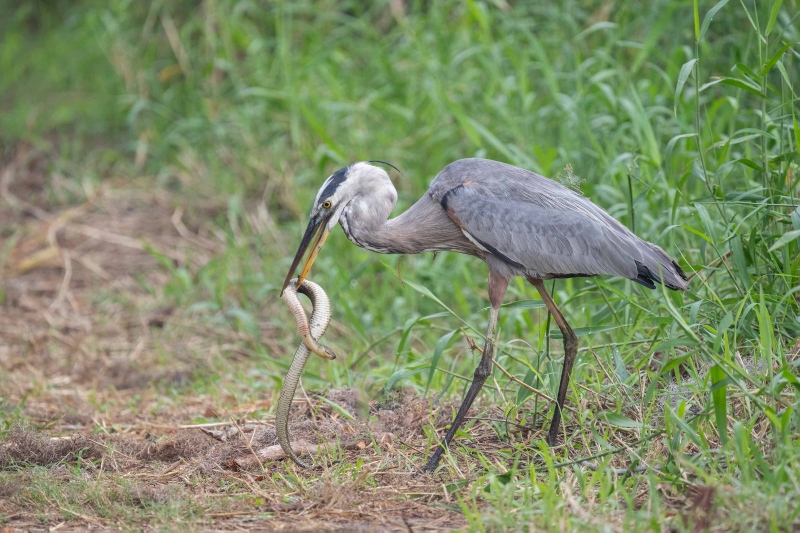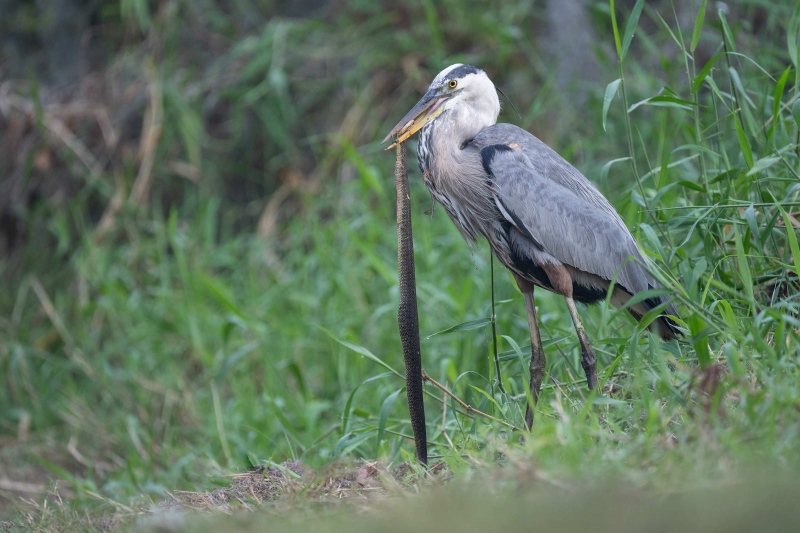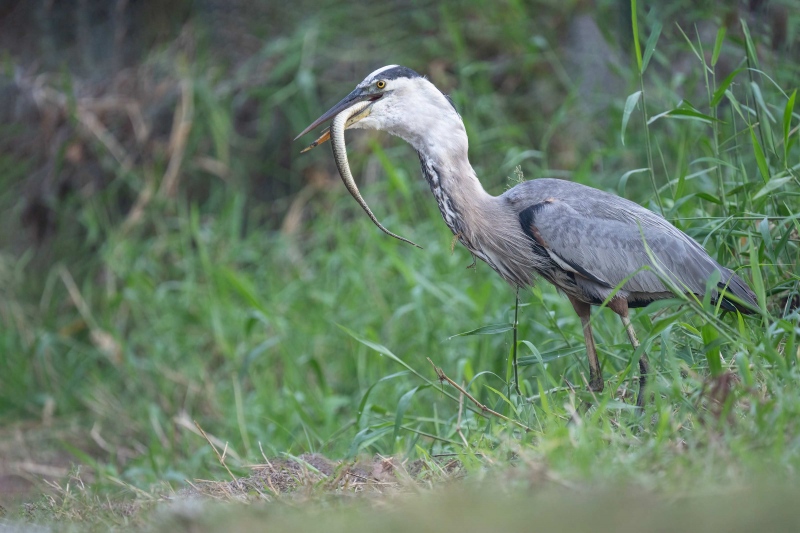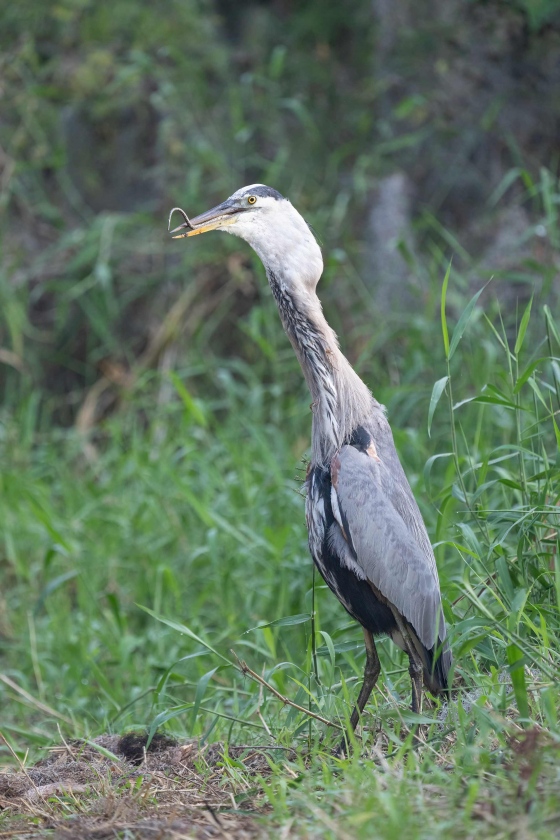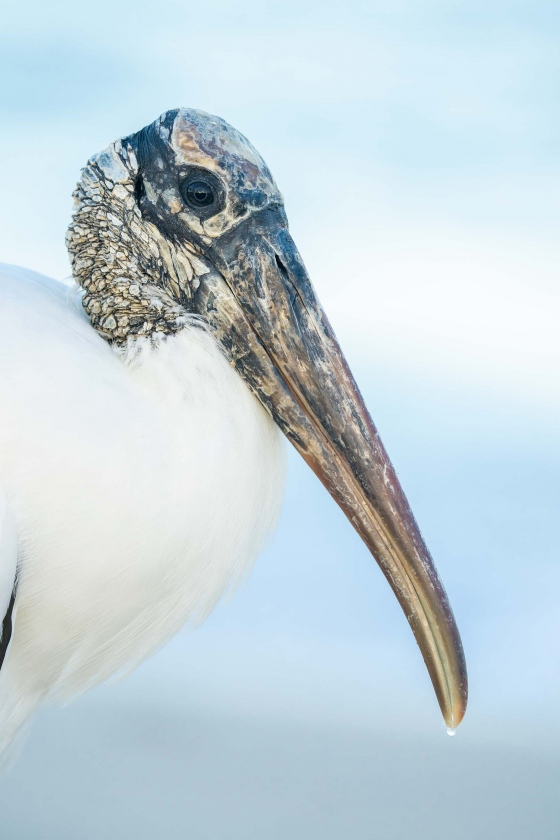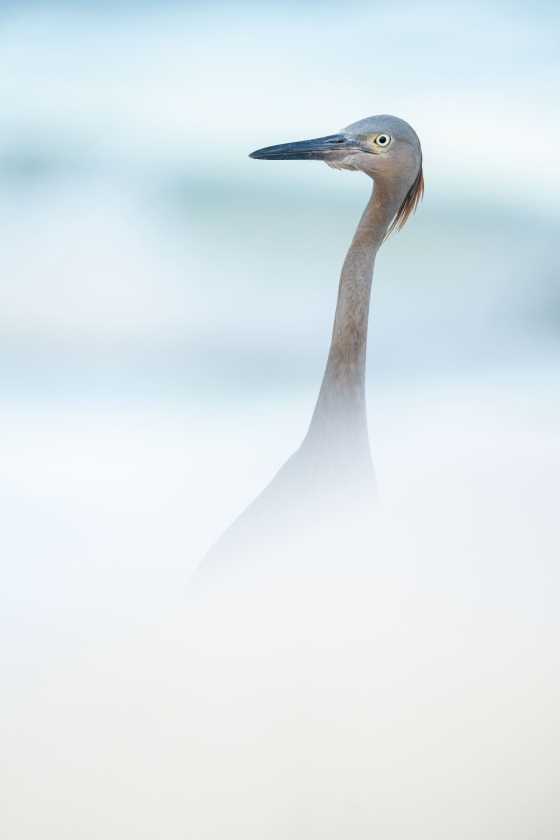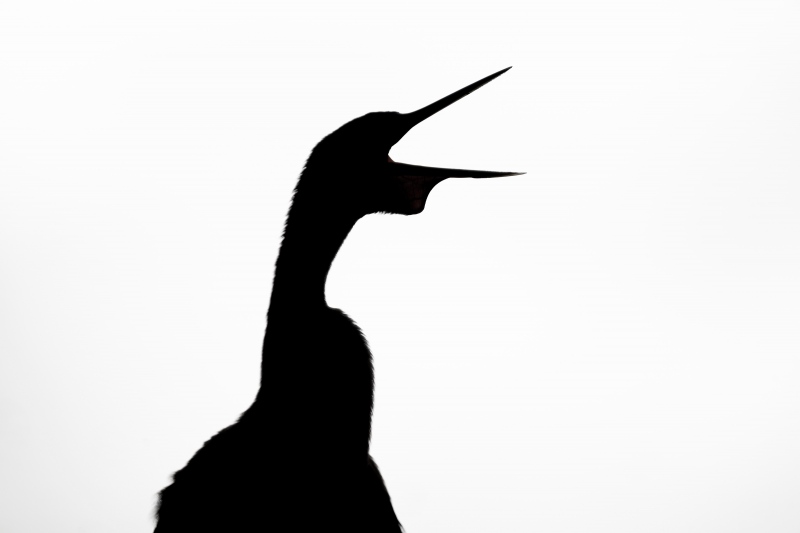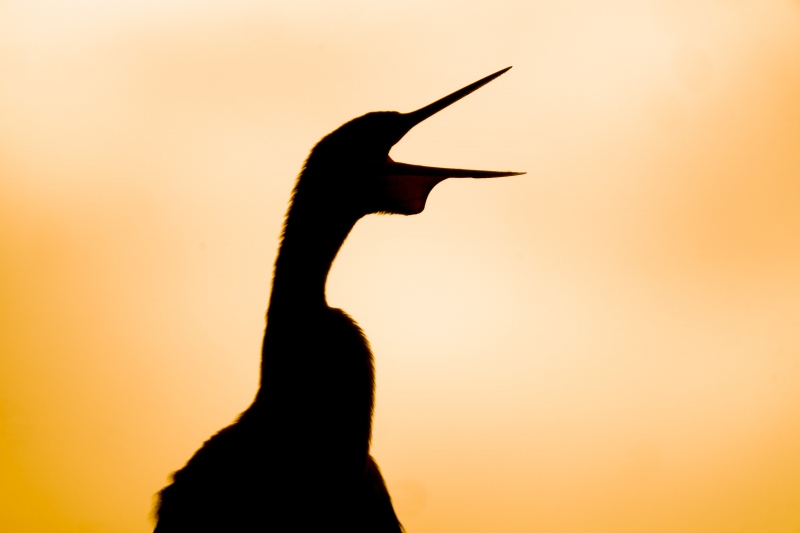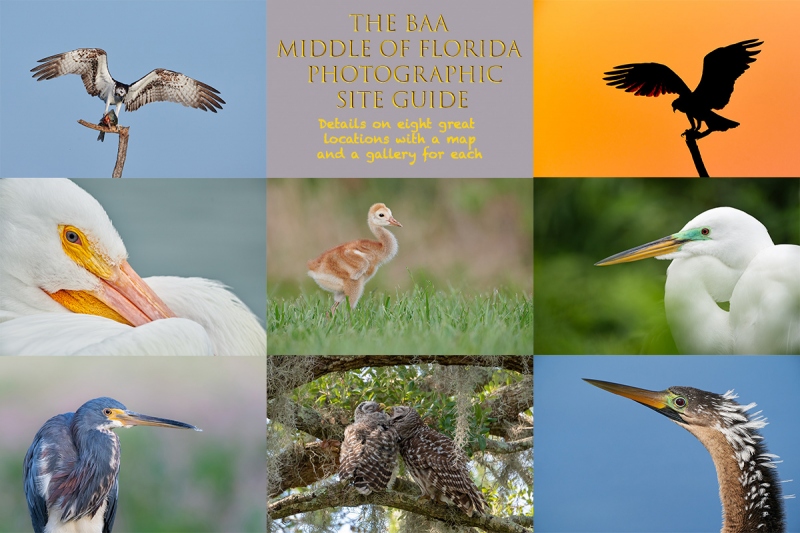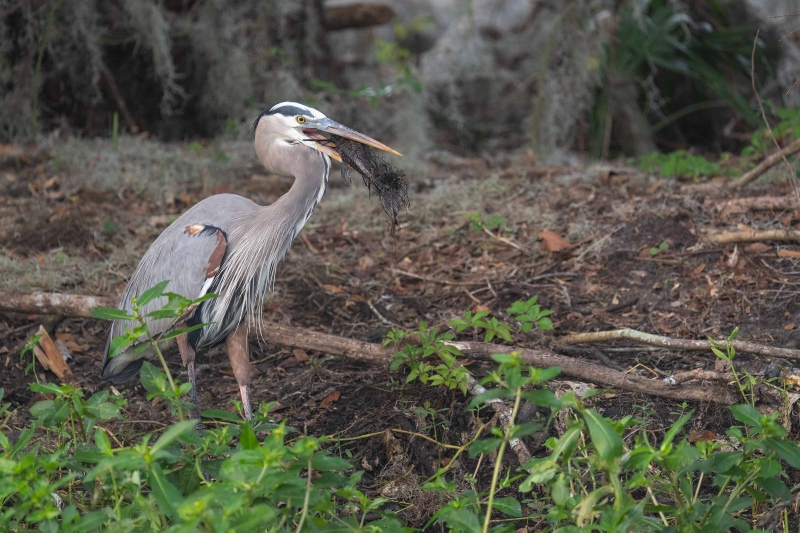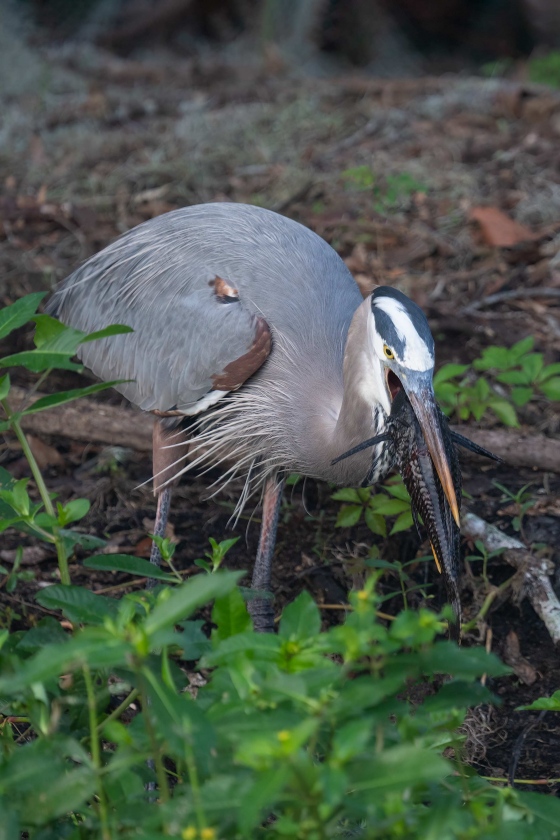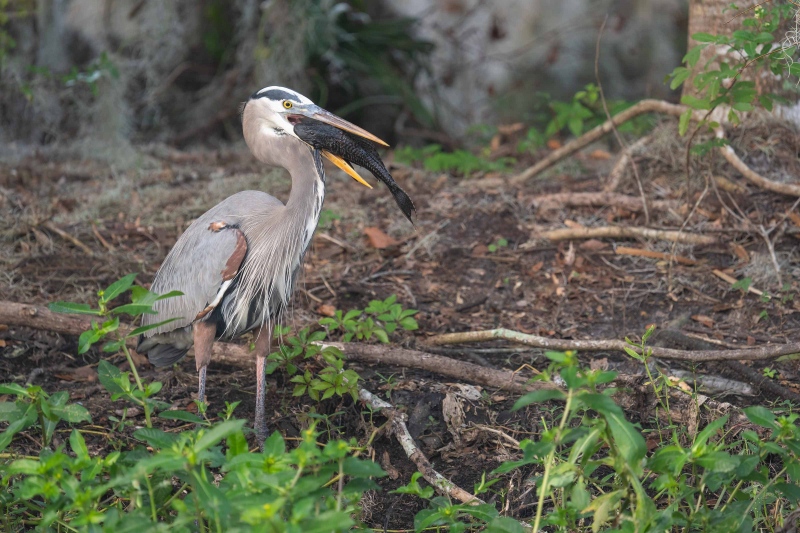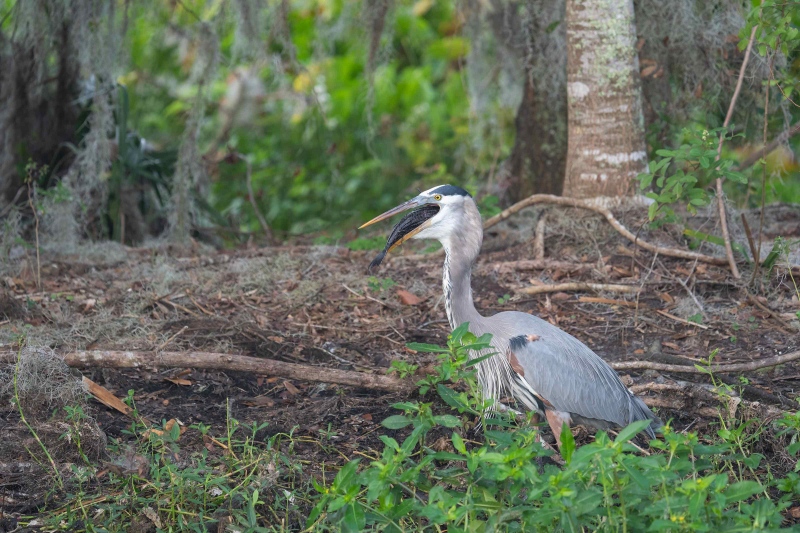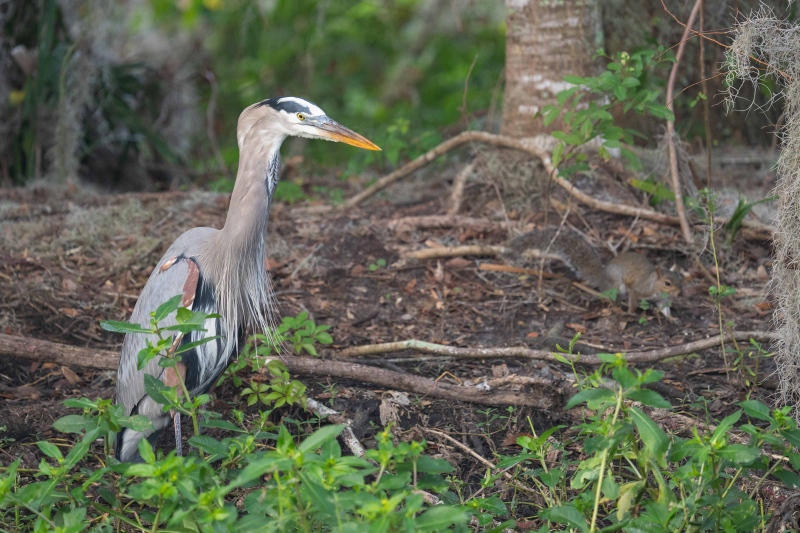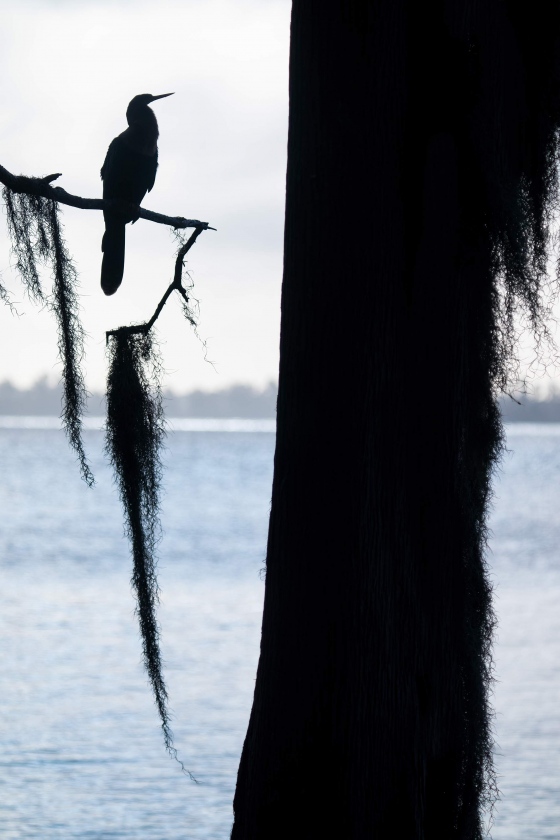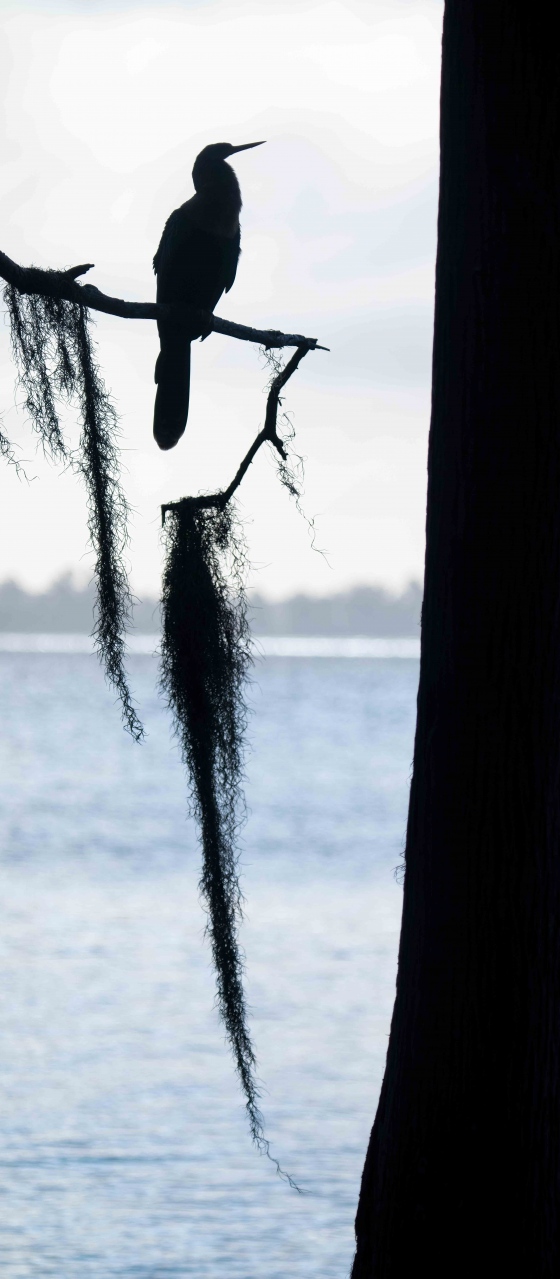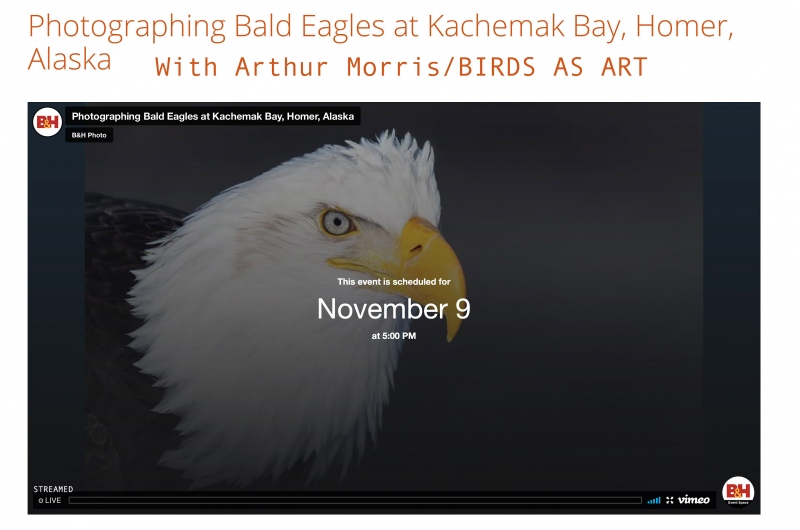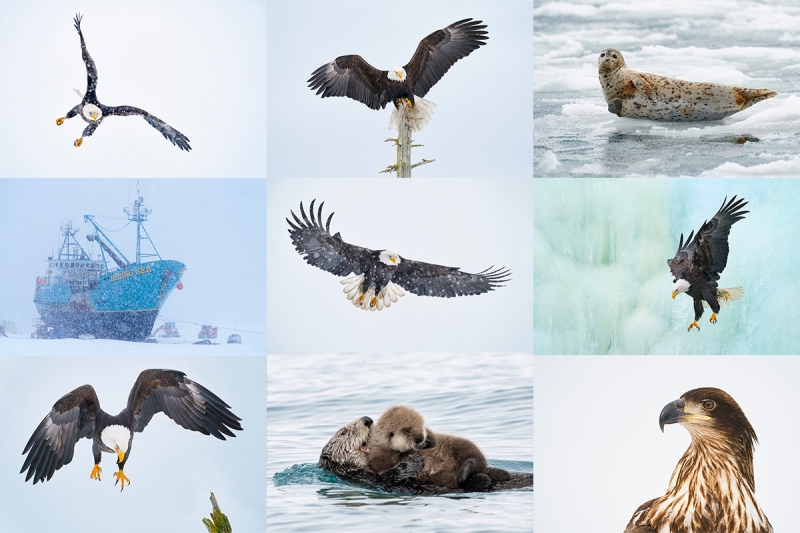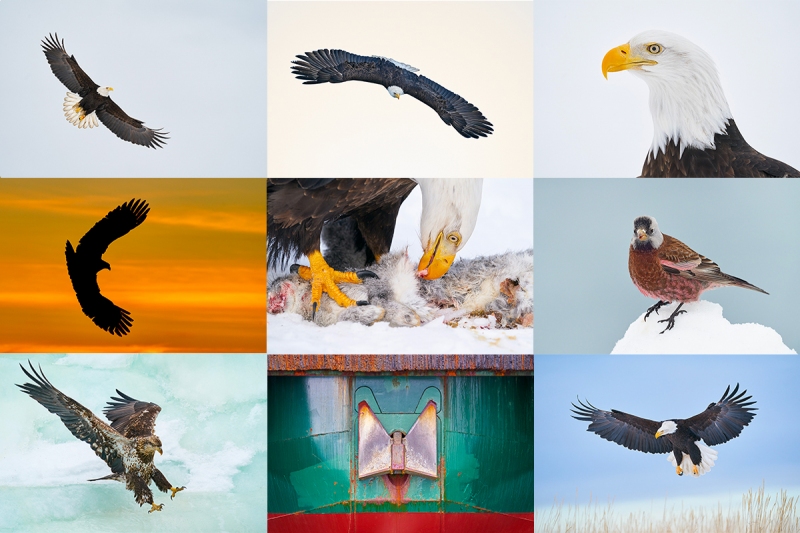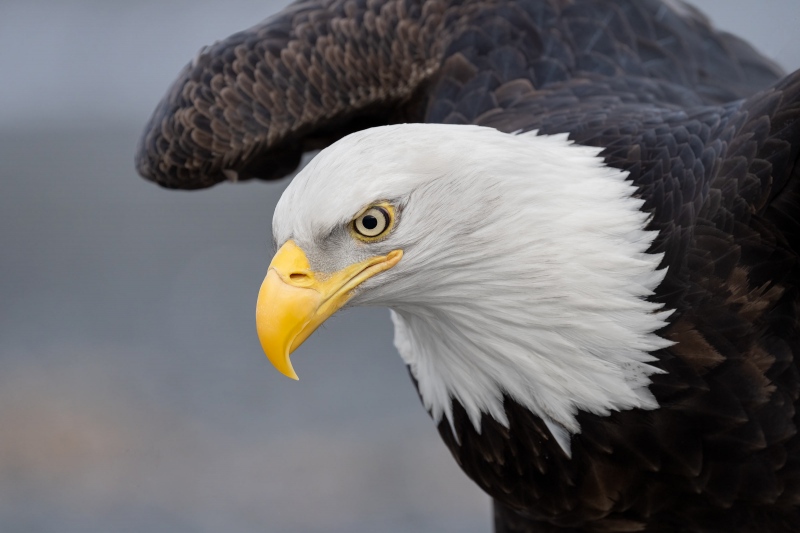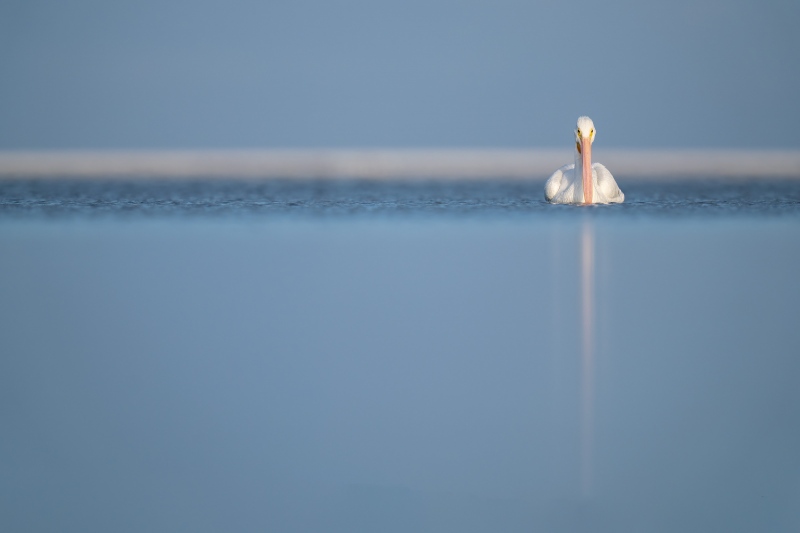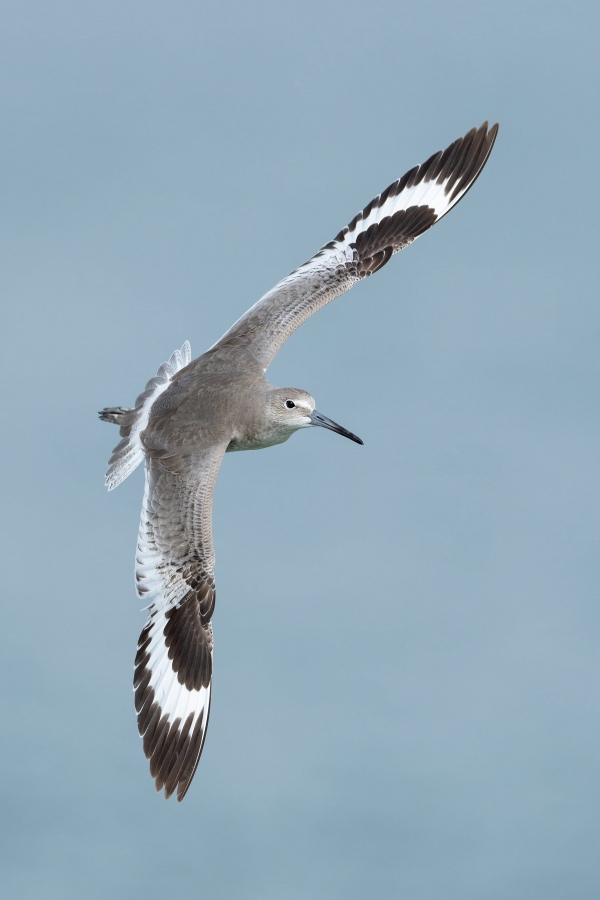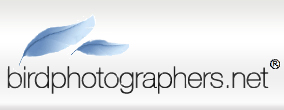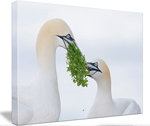November 27th, 2022 What’s Up?
I spent an hour down by the lake on a foggy Sunday morning. And photographed only vultures.
Today is Sunday 27 November 2022. As I have five tons of work to do, I may not have time to head down to the lake. This blog post took about 90 minutes to prepare and makes two hundred forty-five days in a row with a new, educational post just for you. Wherever you are and whatever you are doing, I hope that you too have a great day.
Please remember to use the B&H and Amazon links that are found on most blog pages and to use the BIRDSASART discount code at checkout when purchasing your new gear from Bedfords to get 3% back on your credit card and enjoy free second-day air FedEx. Please, also, consider joining a BAA IPT. You will be amazed at how much you will learn!
You can find some great photo accessories (and necessities, like surf booties!) on Amazon by clicking on the Stuff tab on the orange/yellow menu bar above. On a related note, it would be extremely helpful if blog-folks who, like me, spend too much money on Amazon, would get in the habit of clicking on the Amazon logo link on the right side of each blog post when they shop online. As you might expect, doing so will not cost you a single penny, but would be appreciated tremendously by yours truly. And doing so works seamlessly with your Amazon Prime account.
Please remember that if an item — a Delkin flash card, or a tripod head — for example, that is available from B&H and/or Bedfords, is also available in the BAA Online Store, it would be great, and greatly appreciated, if you would opt to purchase from us. We will match any price. Please remember also to use my B&H affiliate links or to earn 3% cash back at Bedfords by using the BIRDSASART discount code at checkout for your major gear purchases. Doing either often earns you free guides and/or discounts. And always earns my great appreciation.
Photoshop Ethics and Morality Discussion & Answers
What should you do or not do in Photoshop? As far as I am concerned, you can do whatever you like to create an image that makes you happy. You are the artist and there are no rules or laws governing what you do with your images. Period.
That’s about it for the discussion segment. Now I will address several of the comments in the Eliminating the Orange Bill Blur. And More Eye Doctor Work blog post here.
Bob Eastman/November 25, 2022 at 2:07pm
BE: While it is a nice improvement in my mind, I ask myself how in the world does one get to be sharp on the eye and face and the beak area and with the the rest of the bird all blurred out as shown without some sort of Photoshop skills.
AM/BAA: On rare occasion, really skilled folks can get the head and eye sharp with shutter speeds as slow as 1/15 second. I’ve done it on occasion. To accomplish that, you need to match the speed of the bird in flight with your panning speed. That done, you need a bit of luck. In the Western Gull flight blur, the eye was relatively sharp but the bill and the hind neck were blurred significantly. As there are no laws on the books that prohibit repairing such blurs, I opted to eliminate the orange blur above the bill and re-shape the back of the head. Not to mention re-crafting the eye skin and then adding back the color. Why did I go that route? Because the final image was much stronger and made me happy. Several folks agreed strongly that the final REDO was a big improvement. As you know, I would never enter this image in most of the major contests where such image clean-up is prohibited.
In addition, you do need some Photoshop skills to process your images. And that is equally true for those who consider themselves purists.
BE: It’s like a composite or doctored photo.
AM/BAA: It surely is a doctored image. But it is not a composite. You create a composite by adding a part of one image to another. And again, there are no laws that prohibit either doctoring and image of creating a composite. By the way, I prefer to use the work “optimizing” rather than “doctoring.”
BE: One could say that about every photo shot in raw in a way as you need to move the sliders to create what you saw in your mind and to please you. (All sic).
Still love ya Artie, Always with love b
AM/BAA: Remember that when creating raw files you want to expose well to the right and thus, many of your raw files will appear washed out. Thus, even purists need to move the sliders in order to create a decent looking image. The major contests all permit adjustments to brightness, contrast, and color as long as they are done globally (to the whole image) rather than selectively (to part or parts of the image). Personally, I think that the “global only” restrictions are ridiculous. Folks who truly understand exposure theory as detailed in the Art of Bird Photography would agree. They understand that WHITEs require one stop less light than Middle-tones and that BLACKs and Dark tones need 2/3- to 1-stop more light than Middle-tones (to be properly exposed).
Thanks as always for leaving a comment. See you in Anchorage!
with love, a
Jeff Walters/November 25, 2022 at 2:35pm
JW: I like your corrected version much better and now enjoy this blur.
AM/BAA: Thanks, Jeff. I agree.
JW: I totally agree with Bob’s observations about the blur shot and his overall comments. The “where do you draw the line?” Should we capture nature/life unaltered? How much technical stuff is fair game? And, who sets those rules or guidelines? To each his own, I suppose.
AM/BAA: You hit the nail on the head when you wrote, To each his own, I suppose.. As noted above there are no laws and there are no rules except when you enter a contest.
Here is a good spot for my comments on purists. Purist nature photographers state that they never change anything in their photographs, that they are depicting exactly what they saw in nature. Purists shooting properly exposed raw files that look good right out of the camera are usually under-exposing their images by 1/3 to two or more full stops. Purists shooting JPEGs, however, can achieve their goal.
But here is the rub: once you remove even a speck of a cigarette butt from your grand landscape you are no longer a purist. The line there is very sharp, once you remove anything you are on the slippery slope and I do not want to hear a peep from you. It’s like being pregnant, either you are or you aren’t.
Furthermore, when considering the blurred Western Gull image, I would say that the raw file depicts a pleasingly blurred image of a Western Gull in flight, and that the optimized image epicts a pleasingly blurred image of a Western Gull in flight. The optimized image is just that much prettier.
JW: I know Art you usually point out your touch ups, but I’d guess not always, as your are loving (and we are too) your pursuit of art in your pictures and cleaning up an image or background, etc., makes an image more visually appealing to us all.
AM/BAA: Thanks, Jef. And you are correct. When image clean-up is minimal I will rarely mention it.
JW: If I had all the tools and your technical skills I’m positive I’d be doing the same and probably wondering just how far I could move the pyramids to make a striking shot.
AM/BAA: Understood Jeff. As far as moving the pyramids, I am guessing you are referring to a long ago National Geographic cover. I my memory is correct, the magazine got in trouble for actually moving the pyramids in a film image so that the image design would work as a cover. Many decades ago I had a film image of Canada Geese and the Twin Towers with pink sunset skies that was being considered as NG cover art to accompany an article on nature in NYC. It was rejected because it did not work as a cover vertical. 🙁
JW: Your standards are appreciated and well noted by almost all of your admirers.
AM/BAA: Many thanks and much love, Jeff.
JW: Artie — Happy Day after Thanksgiving. May His Blessings never cease to be poured out over you and all of the BAA community. Much love from the Walters family.
AM/BAA: Thanks, Jeff, and back at you. a
|
|
|
This image was created on 8 January 2022 down by the lake near my home at Indian Lake Estates, FL. Standing at full height, I used the no-longer available Induro GIT 304L tripod/Levered-Clamp FlexShooter Pro-mounted Sony FE 600mm f/4 GM OSS lens, the Sony FE 2.0x Teleconverter, and The One, the Sony Alpha 1 Mirrorless Digital Camera). The exposure was determined via Zebra technology with Exposure Compensation on the thumb dial. Shutter Priority +1.7 stops. AUTO ISO set ISO 400: 1/2500 sec. at f/8 (wide open). When evaluated in RawDigger, the raw file exposure was determined to be dad-solid perfect. AWB at 5:28:11pm with a clear sunset.
Tracking: Zone AF-C with Bird Face/Eye detection enabled performed perfectly even at 1200mm. Be sure to click on the image to enjoy a high-res version.
Image #1: the Camera Raw screen capture at the default setting for the Great Egret silhouette flaring in flight image
|
The Original
Image #1 accurately represents the unprocessed raw file. Sony Tracking Zone AF is quite remarkable even at 1200mm — it allowed me to create the composition that I wanted with the bird perfectly placed in the right side of the frame headed to our left. And the bird is as sharp as the proverbial tack.
The few sharp reeds in the lower right were distracting to me because distinctly sharp elements drag the viewer’s eye from the subject. The reeds were accidentally sharp as they were right on the same plane as the subject and the fast shutter speed prevented them from being blurred. In addition, I did not like the too-bright areas in the lake in the center of the image above the lower frame edge.
|
|
|
This image was created on 8 January 2022 down by the lake near my home at Indian Lake Estates, FL. Standing at full height, I used the no-longer available Induro GIT 304L tripod/Levered-Clamp FlexShooter Pro-mounted Sony FE 600mm f/4 GM OSS lens, the Sony FE 2.0x Teleconverter, and The One, the Sony Alpha 1 Mirrorless Digital Camera). The exposure was determined via Zebra technology with Exposure Compensation on the thumb dial. Shutter Priority +1.7 stops. AUTO ISO set ISO 400: 1/2500 sec. at f/8 (wide open). When evaluated in RawDigger, the raw file exposure was determined to be dad-solid perfect. AWB at 5:28:11pm with a clear sunset.
Tracking: Zone AF-C with Bird Face/Eye detection enabled performed perfectly even at 1200mm. Be sure to click on the image to enjoy a high-res version.
Image #1A: Great Egret silhouette flaring in flight
|
The Optimized Image
The colors and tones in the optimized image are pretty much identical to the colors and tones of the original. I used both the Patch Tool and Content-Aware Fill to eliminate the sharp reeds and and all of the blurred reeds that I felt were distracting. I used Tim Grey Dodge and Burn to darken the bright areas of water in the middle of the frame.
As most if not all prestigious photography contests prohibit removing anything from the original frame, I would never even think of entering the the optimized image in one of those. Not to mention that I gave up entering such contests many years ago.
Summing up what I wrote above, the raw file depicts a Great Egret flaring in flight at sunset, and the optimized image depicts a Great Egret flaring in flight at sunset. In almost all cases, I strive to maintain the natural history of an image no matter how much clean-up was done. And when I don’t, I make sure to let everyone know.
|
|
The BIRDS AS ART Current Workflow e-Guide (Digital Basics II).
You can order your copy from the BAA Online Store here, by sending a PayPal for $40 here, or by calling Jim or Jennifer weekdays at 863-692-0906 with your credit card in hand. Be sure to specify Digital Basics II.
|
The BIRDS AS ART Current Workflow e-Guide (Digital Basics II)
The techniques mentioned above and tons more great Photoshop tips and techniques — along with my complete digital workflow, Digital Eye Doctor Techniques, and all my personalized Keyboard Shortcuts — are covered in detail in the BIRDS AS ART Current Workflow e-Guide (Digital Basics II), an instructional PDF that is sent via e-mail. Note: folks working on a PC and/or those who do not want to miss anything Photoshop may wish to purchase the original Digital Basics along with DB II while saving $15 by clicking here to buy the DB Bundle.
Folks who learn well by following along rather than by reading can check out the complete collection of MP 4 Photoshop Tutorial Videos by clicking here. Note: most of the videos are now priced at an amazingly low $5.00 each.
You can learn how and why I converted all of my Canon digital RAW files in DPP 4 in the DPP 4 RAW Conversion Guide here. More recently, I became proficient at converting my Nikon RAW (NEF) files in Adobe Camera Raw. About three years ago I began converting my Nikon and Sony RAW files in Capture One and did that for two years. You can learn more about Capture One in the Capture One Pro 12 Simplified MP4 Video here. The next step would be to get a copy of Arash Hazeghi’s “The Nikon Photographers’ Guide to Phase One Capture One Pro e-Guide” in the blog post here. Today, I convert my Sony raw files in Photoshop with Adobe Camera Raw.
You can learn advanced Quick Masking and advanced Layer Masking techniques in APTATS I & II. You can save $15 by purchasing the pair.
Typos
With all blog posts, feel free to e-mail or to leave a comment regarding any typos or errors.
November 26th, 2022 NANPA Tidbit of the Day
Yesterday, I sent this e-mail to the President and the Executive Director of NANPA:
Dear Madams,
I hope that you both enjoyed Thanksgiving Day with your families.
Please, at your earliest convenience, send the following documents:
1- A copy of the minutes for all 2022 Board Meetings.
2- A copy of the Letter of Intent.
3- A copy of the agreement between NANPA and ASMP signed by both parties.
Without all of the above documents, it is not possible for anyone to know what is really going on.
Thanks with love, artie
They did not answer yesterday, and the fact is that I do not expect to hear back from them.
What Can You Do?
NANPA members, prospective NANPA members — I have heard from many such folks, and anyone who simply cares about what’s right and wrong in the world can comment by clicking on this link. Again, you do not need to be a NANPA member to comment. Thanks to the many who have helped already.
What’s Up?
I got back down to the lake on Saturday morning. Though it was foggy early on, it was a lot brighter than it had been on the previous two days. I worked with the usual suspects, the Turkey and Black Vultures that roost in the trees on the right at the end of Banyan Drive.
Today is Saturday 26 November 2022. It is solidly foggy so I will be headed down to the lake at about 7:45am. This blog post took about 90 minutes to prepare and makes two hundred forty-four days in a row with a new, educational post just for you. Wherever you are and whatever you are doing, I hope that you too have a great day.
Please remember to use the B&H and Amazon links that are found on most blog pages and to use the BIRDSASART discount code at checkout when purchasing your new gear from Bedfords to get 3% back on your credit card and enjoy free second-day air FedEx. Please, also, consider joining a BAA IPT. You will be amazed at how much you will learn!
You can find some great photo accessories (and necessities, like surf booties!) on Amazon by clicking on the Stuff tab on the orange/yellow menu bar above. On a related note, it would be extremely helpful if blog-folks who, like me, spend too much money on Amazon, would get in the habit of clicking on the Amazon logo link on the right side of each blog post when they shop online. As you might expect, doing so will not cost you a single penny, but would be appreciated tremendously by yours truly. And doing so works seamlessly with your Amazon Prime account.
Please remember that if an item — a Delkin flash card, or a tripod head — for example, that is available from B&H and/or Bedfords, is also available in the BAA Online Store, it would be great, and greatly appreciated, if you would opt to purchase from us. We will match any price. Please remember also to use my B&H affiliate links or to earn 3% cash back at Bedfords by using the BIRDSASART discount code at checkout for your major gear purchases. Doing either often earns you free guides and/or discounts. And always earns my great appreciation.
Brand-New and As-Good-As-Ever Bedfords BAA Discount Policy
Folks who have fallen in love with Bedfords can now use the BIRDSASART coupon code at checkout to enjoy a post-purchase, 3% off-statement credit (excluding taxes and shipping charges) on orders paid with a credit card. The 3% credit will be refunded to the card you used for your purchase. Be sure, also, to check the box for free shipping to enjoy free Second Day Air Fed-Ex. This offer does not apply to purchases of Classes, Gift Cards, or to any prior purchases.
Money Saving Reminder
Many have learned that if you need a hot photo item that is out of stock at B&H and would like to enjoy getting 3% back on your credit card along with free 2nd Day Air Fed-Ex Air shipping, your best bet is to click here, place an order with Bedfords, and enter the coupon code BIRDSASART at checkout. If an item is out of stock, contact Steve Elkins via e-mail or on his cell phone at (479) 381-2592 (Central time). Be sure to mention the BIRDSASART coupon code and check the box for Free Shipping. That will automatically upgrade to free 2nd Day Air Fed-Ex. Steve has been great at getting folks the hot items that are out of stock at B&H and everywhere else. The waitlists at the big stores can be a year or longer for the hard-to-get items. Steve will surely get you your gear long before that. For the past year, he has been helping BAA Blog folks get their hands on items like the SONY a 1, the SONY 200-600 G OSS lens, the Canon EOS R5, the Canon RF 100-500mm lens, and the Nikon 500mm PF. Steve is personable, helpful, and eager to please.
Important Note
As an Amazon Associate, I earn a small percentage when you purchase from Amazon after using any of the Amazon links on the blog (including the logo-link on the right side of each blog post page). My affiliate link works fine with Amazon Prime and using it will not cost you a single cent. Huge thanks, BTW 🙂


Gear Questions and Advice
Too many folks attending BAA IPTs and dozens of photographers whom I see in the field and on BPN, are — out of ignorance — using the wrong gear, especially when it comes to tripods and more especially, tripod heads. And the same is true in spades when ordering new camera bodies or lenses. My advice will often save you some serious money and may help you avoid making a seriously bad choice. Please know that I am always glad to answer your gear questions via e-mail. If you are desperate, you can try me on my cell at 863-221-2372. Please leave a message and shoot me a text if I do not pick up.
When You Have a Tree Full of Vultures, Think Vulture Soup
More than a few friends and acquaintances have wondered why I spent so much time at the Vulture Trees on my morning photography outings via SUV. Understand that the vultures are rarely my first choice of subjects. I will always check The Perch in the North Marsh and the area around the pier. The latter includes the small hill to the north that abuts the parking circle. For some reason, there are often cranes atop that hill.
When there is not much going on, I will always head to the Vulture Trees. It is a rare day when there are no vultures to photograph. But what do I get out of photographing such ugly birds day after day after day when I am home? Here are a few:
1- I get to fine-tune my understanding of exposure in all lighting and weather conditions.
2- I get to experiment with the amazing AF system of the Sony A1.
3- I get to use the AF system to improve my image designs.
4- I can often come up with new techniques that improve sharpness when working from a vehicle. I figured the bit about turning off DMF when working off the BLUBB while doing perched vultures. More recently, I discovered the advantages of using a remote release for bird photography at this location. I had railed against that idea for well more than three decades.
5- I learn a ton about bird behavior.
6- At times, I get to photograph other, more attractive bird species. Not to mention wildflowers and orchids.
7- Once in a while, I make some really good images.
8- It’s fun.
And I am sure that I left a few out.
|
|
|
This image was created on 25 November 2022 down by the lake near my home. Working from the driver’s seat of my SUV with the window half-lowered, I used the BLUBB-supported Sony FE 600mm f/4 GM OSS lens with the Sony FE 1.4x Teleconverter, and The One, the Sony Alpha 1 Mirrorless Digital Camera.. ISO 800. The exposure was determined by Zebras with ISO on the rear wheel: 1/800 second at f/5.6 (wide open) in Manual mode. RawDigger showed that the exposure was perfect. AWB at 8:56:50am on then partly sunny morning.
Tracking: Spot S/AF-C with Bird-Eye/Face Detection performed perfectly. Click on the image to enjoy the high-res version.
Image #1: Turkey Vulture folding left wing after elegant stretch<
|
I Could’ve Been Famous!
I was photographing this bird on my very favorite Vulture Trees perch — hint: it is the lowest one. Anyhoo, I had just added the 1.4X TC for some 2/3-frame verticals when, without warning, the bird stretched its left wing; it would have made a perfect horizontal. In addition to the fact that I was shooting verticals, I had too much focal length. I needed to rotate the rig to vertical. Though that took only one second, I missed the elegant stretch, just catching the bird as it folded its far wing. Bummer. Heck, there’s another reason to keep going back.
|
|
|
This image was created on 25 November 2022 down by the lake near my home. Walking on the South Field, I used the handheld Sony FE 400mm f/2.8 GM OSS lens and The One, the Sony Alpha 1 Mirrorless Digital Camera). The exposure was determined via Zebra technology with ISO on the Thumb Dial. ISO 800. 1/3200 sec. at f/2.8 (wide open) in Manual mode. When evaluated in RawDigger, the raw file brightness was determined to be dead-solid perfect (ho hum). AWB at 9:09:16am with a bit of fog obscuring the sun.
Tracking: (center) Spot S AF-C with Bird Face/Eye detection enabled performed to perfection. Be sure to click on the image to enjoy a high-res version.
Image #2: Turkey Vulture — white sky flight
|
The 400 f/2.8 for Handheld Flight
As some of the bird flew off and circled at bit, I removed the a1 from my 600mm f/4, mounted it on the 400mm f/2.8 (yes, I am blessed), exited my vehicle, and got lucky as single Turkey Vulture that had taken off to the north circles back toward me. I experimented with Tracking: (center) Spot S AF-C with Bird Face/Eye detection enabled (rather than Tracking: Zone) and was totally blown away by the AF performance. Of the 15 or so frames that I kept, the system nailed the eye or the face on every single frame except for today’s featured image. Though the AF point for that frame was on the sky above and slightly to the right of the bird’s head, the image was acceptably sharp.
Typos
With all blog posts, feel free to e-mail or to leave a comment regarding any typos or errors.
November 25th, 2022
|
|
|
This all-new card includes images created on my JAN 2022 visit to San Diego. Click on the composite to enjoy a larger version.
|
The 2022/23 San Diego Brown Pelicans (and more!) IPTs
San Diego IPT #1. 3 1/2 DAYS: WED 21 DEC thru the morning session on Saturday 24 DEC 2022. $2099.00. Deposit: $699.00. Limit: 6 photographers/Openings: 5.
San Diego IPT #2. 4 1/2 DAYS: SAT 7 JAN thru the morning session on WED 11 JAN 2023: $2699.00. Deposit: $699.00. Limit: 6 photographers/Sold Out.
San Diego IPT #3: 4 1/2 DAYS: THURS 19 JAN thru the morning session on MON 23 JAN 2023: $2699.00. Deposit: $699.00. Limit: 6 photographers.
Please e-mail for information on personalized pre- and post-IPT and In-the-Field Sessions.
Join me in San Diego to photograph the spectacular breeding plumage Brown Pelicans with their fire-engine red and olive green bill pouches; Brandt’s (nesting) and Double-crested Cormorants; breeding plumage Wood and Ring-necked Ducks; other duck species possible including Lesser Scaup, Redhead, Northern Shoveler and Surf Scoter; a variety of gulls including Western, California, and the gorgeous Heermann’s, all in full breeding plumage; shorebirds including Marbled Godwit, Willet, Sanderling and Black-bellied Plover; many others are possible including Least, Western, and Spotted Sandpiper, Whimbrel, Black and Ruddy Turnstone, Semipalmated Plover, and Surfbird; Harbor Seals and California Sea Lions (both depending on the current regulations and restrictions). And as you can see by studying the IPT cards, there are some nice bird-scape and landscape opportunities as well. Not to mention a ton of excellent flight photography opportunities and instruction.
Please note: where permitted and on occasion, ducks and gulls may be attracted (or re-located) with offerings of grains or healthy bread.
|
|
|
San Diego offers a wealth of very attractive natural history subjects, including and especially the Pacific race of California Brown Pelican. With annual visits spanning more than four decades, I have lots of photographic experience there … Click on the composite to enjoy a larger version.
|
Learning Exposure, Whether You Like It Or Not
Whether you like it or not, we will be beating the subject of exposure like a dead horse. In every new situation, you will hear my thoughts on exposure along with my thoughts on both Nikon and Canon histograms and SONY Zebras. Whether you like it or not, you will learn to work in manual mode so that you can get the right exposure every time (as long as a bird gives you ten seconds with the light constant). Or two seconds with SONY zebras … And you will learn what to do when the light is changing constantly. What you learn about exposure will be one of the great takeaways on every IPT.
|
|
|
Though the pelicans will be the stars of the show on this IPT, there will be many other handsome and captivating subjects in wonderful settings. Click on the composite to enjoy a larger version.
|
It Ain’t Just Pelicans
With gorgeous subjects just sitting there waiting to have their pictures taken, photographing the pelicans on the cliffs is about as easy as nature photography gets. With the winds from the east almost every morning there is usually some excellent flight photography as well, often with 70-200mm lenses! And the pelicans are almost always doing something interesting: preening, scratching, bill pouch cleaning, or squabbling. And then there are those crazy head throws that are thought to be a form of intra-flock communication. You will be guided as to how to make the best of those opportunities. Depending on the weather, the local conditions, and the tides, there are a variety of other fabulous photo chances available in and around San Diego.
|

|
|
Did I mention that there are lots of great birds and natural history subjects in San Diego in winter? Click on the composite to enjoy a larger version.
|
The San Diego Details
These IPTs will include four or five 3-hour morning photo sessions, three or four 1 1/2-hour afternoon photo sessions, and three or four working brunches that will include image review and Photoshop sessions. On rare cloudy days, we may — at the leader’s discretion, stay out in the morning for a long session and skip that afternoon. To ensure early starts, breakfasts will be your responsibility. And so that we can get some sleep, dinners will be on your own as well. In the extremely unlikely event that Goldfish Point is closed due to local ordinance (or whimsy) — that has never happened in the past fifty years, I will of course do my very best to maximize our photographic opportunities.
|
|
|
San Diego offers a wealth of very attractive natural history subjects, including and especially the Pacific race of California Brown Pelican. With annual visits spanning more than four decades, I have lots of photographic experience there … Click on the composite to enjoy a larger version.
|
Deposit Info
A $699 deposit is required to hold your slot for one of the 2022/23 San Diego IPTs. You can send a check (made out to “BIRDS AS ART”) to us here: BIRDS AS ART, PO Box 7245, Indian Lake Estates, FL, 33855, or call Jim or Jennifer at the office with a credit card at 863-692-0906. Your balance, payable only by check, is due three months before the trip.
|

|
|
Variety is surely the spice of life in San Diego. Click on the composite to enjoy a larger version.
|
Getting Up Early and Staying Out Late
On all BIRDS AS ART IPTS including and especially the San Diego IPT, we get into the field early to take advantage of unique and often spectacular lighting conditions and we stay out late to maximize the chances of killer light and glorious sunset silhouette situations. We often arrive at the cliffs a full hour before anyone else shows up to check out the landscape and seascape opportunities.
What’s Up?
I got back down to the lake on a foggy Thursday morning, but for birds, it was not as good as Wednesday had been. I found and photographed two different species of wildflowers. Once in a flower mood, I photographed a perfectly gorgeous orchid blossom. The plant had been wired to a magnolia branch by the nice lady who lives in the in the “vulture house.” The vulture house is the last one on Banyan Drive, right before the canal. I had fun and made some very nice images.
The Giants put up a good fight in the first half but wound up as the Dallas Cowboys/ Thanksgiving Turkeys. Bummer, but the Cowboys are simply a much better team.
Today is Friday 25 November 2022. It is foggy again and I will be headed down to the lake at about 7:30am. This blog post took about an hour to prepare and makes two hundred forty-three days in a row with a new, educational post just for you. Wherever you are and whatever you are doing, I hope that you too have a great day.
Please remember to use the B&H and Amazon links that are found on most blog pages and to use the BIRDSASART discount code at checkout when purchasing your new gear from Bedfords to get 3% back on your credit card and enjoy free second-day air FedEx. Please, also, consider joining a BAA IPT. You will be amazed at how much you will learn!
You can find some great photo accessories (and necessities, like surf booties!) on Amazon by clicking on the Stuff tab on the orange/yellow menu bar above. On a related note, it would be extremely helpful if blog-folks who, like me, spend too much money on Amazon, would get in the habit of clicking on the Amazon logo link on the right side of each blog post when they shop online. As you might expect, doing so will not cost you a single penny, but would be appreciated tremendously by yours truly. And doing so works seamlessly with your Amazon Prime account.
Please remember that if an item — a Delkin flash card, or a tripod head — for example, that is available from B&H and/or Bedfords, is also available in the BAA Online Store, it would be great, and greatly appreciated, if you would opt to purchase from us. We will match any price. Please remember also to use my B&H affiliate links or to earn 3% cash back at Bedfords by using the BIRDSASART discount code at checkout for your major gear purchases. Doing either often earns you free guides and/or discounts. And always earns my great appreciation.
|
|
|
This image was created on 18 January 2018 on a San Diego IPT. I used the handheld Canon EF 100-400mm f/4.5-5.6L IS II USM lens (at 241mm) and the EOS-1DX Mark II. Shutter Priority +1.3 stops. AUTO ISO set ISO 400: 1/15 sec. at f/9 (stopped down 1 1/3 stops). AWB at 7:03:15am on a cloudy morning well before the sun came of the hill.
AF Method unknown. Click on the image to enjoy a high-res version.
Image #1 — the first optimized version of the Western Gull in-flight blur image
|
I Almost Deleted This One
In the Almost Deleted This One. And the Mother of Invention blog post here, I wrote:
What Bugged Me?
From the start, one thing bugged me about today’s image. It could have been eliminated during the post processing. If you think that you know what it is, please leave a comment.
The first to nail the answer:
Joel Eade/November 23, 2022 at 9:14 am
I think perhaps the thing that bugs you a bit is the yellow patch on top of the bird’s head created by the blurring of it’s bill.
Jim Amato and David Pugsley mentioned the dark area on the (secondary coverts) of the near wing, just in front of the gull’s feet.
The second and third folks to come up smelling roses:
Anthony Ardito/November 23, 2022 at 5:37pm
The bill blur above the bill bugged you. I think the image is beautiful!
Elinor Osborn/November 23, 2022 at 2:17 pm
I agree with Joel. Anyway that blur from the beak does bug me. Otherwise it’s a very beautiful image.
|
|
|
This image was created on 18 January 2018 on a San Diego IPT. I used the handheld Canon EF 100-400mm f/4.5-5.6L IS II USM lens (at 241mm) and the EOS-1DX Mark II. Shutter Priority +1.3 stops. AUTO ISO set ISO 400: 1/15 sec. at f/9 (stopped down 1 1/3 stops). AWB at 7:03:15am on a cloudy morning well before the sun came of the hill.
AF Method unknown. Click on the image to enjoy a high-res version.
Image #2: Western Gull in-flight blur REDO
|
The REDO
I had barely noticed the the dark area on the near wing; it was eliminated in two seconds using the Patch Tool. The orange blur above the bill was fixed with a large Quick Mask refined by a Regular Layer Mask. The edges were touched with the Clone Stamp Tool at 60% Opacity. That done, the white blur above the hind neck looked unnatural; that was eliminated in the same manner. Next came additional Eye Doctor — sharpening the eye selectively with Topaz Sharpen AI at reduced Opacity and restoring the red color of the eye skin. Working large, the eye skin was selected with the Quick Selection Tool and the color was restored with the Paint Bucket Tool. Last was some work on the dark streaks in front of the bird done with the Patch Tool, Content-Aware Fill, and smoothed a bit with a Gaussian Blur.
What do you think?
|
|
The BIRDS AS ART Current Workflow e-Guide (Digital Basics II).
You can order your copy from the BAA Online Store here, by sending a PayPal for $40 here, or by calling Jim or Jennifer weekdays at 863-692-0906 with your credit card in hand. Be sure to specify Digital Basics II.
|
The BIRDS AS ART Current Workflow e-Guide (Digital Basics II)
The techniques mentioned above and tons more great Photoshop tips and techniques — along with my complete digital workflow, Digital Eye Doctor Techniques, and all my personalized Keyboard Shortcuts — are covered in detail in the BIRDS AS ART Current Workflow e-Guide (Digital Basics II), an instructional PDF that is sent via e-mail. Note: folks working on a PC and/or those who do not want to miss anything Photoshop may wish to purchase the original Digital Basics along with DB II while saving $15 by clicking here to buy the DB Bundle.
Folks who learn well by following along rather than by reading can check out the complete collection of MP 4 Photoshop Tutorial Videos by clicking here. Note: most of the videos are now priced at an amazingly low $5.00 each.
You can learn how and why I converted all of my Canon digital RAW files in DPP 4 in the DPP 4 RAW Conversion Guide here. More recently, I became proficient at converting my Nikon RAW (NEF) files in Adobe Camera Raw. About three years ago I began converting my Nikon and Sony RAW files in Capture One and did that for two years. You can learn more about Capture One in the Capture One Pro 12 Simplified MP4 Video here. The next step would be to get a copy of Arash Hazeghi’s “The Nikon Photographers’ Guide to Phase One Capture One Pro e-Guide” in the blog post here. Today, I convert my Sony raw files in Photoshop with Adobe Camera Raw.
You can learn advanced Quick Masking and advanced Layer Masking techniques in APTATS I & II. You can save $15 by purchasing the pair.
Typos
With all blog posts, feel free to e-mail or to leave a comment regarding any typos or errors.
November 24th, 2022
|
|
Have a Great Day. And more.
|
What’s Up?
Today, Thursday 24 November 2022 is Thanksgiving Day. It is foggy here and I am headed down to the lake the moment that I hit Publish. This blog post took an hour to prepare and makes two hundred forty-two days in a row with a new, educational post just for you. Wherever you are and whatever you are doing, I hope that you too have a great Thanksgiving Day. a great week, a great month, a great year, and a great rest of your life. I am thankful for my family, my health, and the great life and career I have enjoyed. And, as I say often, I ain’t done yet.
Best and love, artie
ps: I am hoping that the NY Football Giants do not wind up as the Dallas Cowboys’ turkey today beginning at 4:30pm ET. But their chances are very slim.
|
|
|
This image was also created on 25 May 2022 at Indian Lake Estates, FL. Working from my SUV, I used the BLUBB-supported Sony FE 600mm f/4 GM OSS lens and The One, the Sony Alpha 1 Mirrorless digital camera. ISO 640. The exposure was determined via Zebras with ISO on the rear dial: 1/1600 sec. at f/5.6 (stopped down one stop). AWB at 8:17:49am on a sunny morning.
Tracking: Zone/AF-C was active at the moment of exposure and performed perfectly. Be sure to click on the image to enjoy the larger version.
Wild Turkey — displaying tom
|
Tom Turkey Lessons
1- If you own a lens that offers DMF (Direct Manual Focus) and you are working off a BLUBB, be sure to move the DMF switch to OFF. Then remember to move it back to ON for all other applications including hand holding and tripod-use. Then, on the rare occasions that the AF system is blind and does not focus, you can focus manually and get back in business very quickly.
2- The light blue top of a tom turkey’s head is a lot brighter than you think. For SONY users with Zebras set properly, shoot for a very, very few Zebras before pressing the shutter button. I had to delete several dozen excellent images because of over-exposure. This image, one of the better ones from that day, still showed 2,000 OvExp pixels on the top of the head.
3- Even with perfect exposures, you will need to restore the detail in the light blue on the top of the head. That begins during the raw conversion where you can move the White and the Highlight sliders to the left and continues in Photoshop with a Linear Burn.
4- Many birds have large eye ridges that put the eye in deep shade on sunny days. For today’s featured image, I used Tim Grey Dodge and Burn to lighten the eye and the shaded area around it. Tip: after applying the Linear Burn add a Regular Layer Mask and then paint away the effect incrementally as needed.
|
|
The BIRDS AS ART Current Workflow e-Guide (Digital Basics II).
You can order your copy from the BAA Online Store here, by sending a PayPal for $40 here, or by calling Jim or Jennifer weekdays at 863-692-0906 with your credit card in hand. Be sure to specify Digital Basics II.
|
The BIRDS AS ART Current Workflow e-Guide (Digital Basics II)
The techniques mentioned above and tons more great Photoshop tips and techniques — along with my complete digital workflow, Digital Eye Doctor Techniques, and all my personalized Keyboard Shortcuts — are covered in detail in the BIRDS AS ART Current Workflow e-Guide (Digital Basics II), an instructional PDF that is sent via e-mail. Note: folks working on a PC and/or those who do not want to miss anything Photoshop may wish to purchase the original Digital Basics along with DB II while saving $15 by clicking here to buy the DB Bundle.
Folks who learn well by following along rather than by reading can check out the complete collection of MP 4 Photoshop Tutorial Videos by clicking here. Note: most of the videos are now priced at an amazingly low $5.00 each.
You can learn how and why I converted all of my Canon digital RAW files in DPP 4 in the DPP 4 RAW Conversion Guide here. More recently, I became proficient at converting my Nikon RAW (NEF) files in Adobe Camera Raw. About three years ago I began converting my Nikon and Sony RAW files in Capture One and did that for two years. You can learn more about Capture One in the Capture One Pro 12 Simplified MP4 Video here. The next step would be to get a copy of Arash Hazeghi’s “The Nikon Photographers’ Guide to Phase One Capture One Pro e-Guide” in the blog post here. Today, I convert my Sony raw files in Photoshop with Adobe Camera Raw.
You can learn advanced Quick Masking and advanced Layer Masking techniques in APTATS I & II. You can save $15 by purchasing the pair.
Typos
With all blog posts, feel free to e-mail or to leave a comment regarding any typos or errors.
November 23rd, 2022
|
|
|
This all-new card includes images created on my JAN 2022 visit to San Diego. Click on the composite to enjoy a larger version.
|
The 2022/23 San Diego Brown Pelicans (and more!) IPTs
San Diego IPT #1. 3 1/2 DAYS: WED 21 DEC thru the morning session on Saturday 24 DEC 2022. $2099.00. Deposit: $699.00. Limit: 6 photographers/Openings: 5.
San Diego IPT #2. 4 1/2 DAYS: SAT 7 JAN thru the morning session on WED 11 JAN 2023: $2699.00. Deposit: $699.00. Limit: 6 photographers/Sold Out.
San Diego IPT #3: 4 1/2 DAYS: THURS 19 JAN thru the morning session on MON 23 JAN 2023: $2699.00. Deposit: $699.00. Limit: 6 photographers.
Please e-mail for information on personalized pre- and post-IPT and In-the-Field Sessions.
Join me in San Diego to photograph the spectacular breeding plumage Brown Pelicans with their fire-engine red and olive green bill pouches; Brandt’s (nesting) and Double-crested Cormorants; breeding plumage Wood and Ring-necked Ducks; other duck species possible including Lesser Scaup, Redhead, Northern Shoveler and Surf Scoter; a variety of gulls including Western, California, and the gorgeous Heermann’s, all in full breeding plumage; shorebirds including Marbled Godwit, Willet, Sanderling and Black-bellied Plover; many others are possible including Least, Western, and Spotted Sandpiper, Whimbrel, Black and Ruddy Turnstone, Semipalmated Plover, and Surfbird; Harbor Seals and California Sea Lions (both depending on the current regulations and restrictions). And as you can see by studying the IPT cards, there are some nice bird-scape and landscape opportunities as well. Not to mention a ton of excellent flight photography opportunities and instruction.
Please note: where permitted and on occasion, ducks and gulls may be attracted (or re-located) with offerings of grains or healthy bread.
|
|
|
San Diego offers a wealth of very attractive natural history subjects, including and especially the Pacific race of California Brown Pelican. With annual visits spanning more than four decades, I have lots of photographic experience there … Click on the composite to enjoy a larger version.
|
Learning Exposure, Whether You Like It Or Not
Whether you like it or not, we will be beating the subject of exposure like a dead horse. In every new situation, you will hear my thoughts on exposure along with my thoughts on both Nikon and Canon histograms and SONY Zebras. Whether you like it or not, you will learn to work in manual mode so that you can get the right exposure every time (as long as a bird gives you ten seconds with the light constant). Or two seconds with SONY zebras … And you will learn what to do when the light is changing constantly. What you learn about exposure will be one of the great takeaways on every IPT.
|
|
|
Though the pelicans will be the stars of the show on this IPT, there will be many other handsome and captivating subjects in wonderful settings. Click on the composite to enjoy a larger version.
|
It Ain’t Just Pelicans
With gorgeous subjects just sitting there waiting to have their pictures taken, photographing the pelicans on the cliffs is about as easy as nature photography gets. With the winds from the east almost every morning there is usually some excellent flight photography as well, often with 70-200mm lenses! And the pelicans are almost always doing something interesting: preening, scratching, bill pouch cleaning, or squabbling. And then there are those crazy head throws that are thought to be a form of intra-flock communication. You will be guided as to how to make the best of those opportunities. Depending on the weather, the local conditions, and the tides, there are a variety of other fabulous photo chances available in and around San Diego.
|

|
|
Did I mention that there are lots of great birds and natural history subjects in San Diego in winter? Click on the composite to enjoy a larger version.
|
The San Diego Details
These IPTs will include four or five 3-hour morning photo sessions, three or four 1 1/2-hour afternoon photo sessions, and three or four working brunches that will include image review and Photoshop sessions. On rare cloudy days, we may — at the leader’s discretion, stay out in the morning for a long session and skip that afternoon. To ensure early starts, breakfasts will be your responsibility. And so that we can get some sleep, dinners will be on your own as well. In the extremely unlikely event that Goldfish Point is closed due to local ordinance (or whimsy) — that has never happened in the past fifty years, I will of course do my very best to maximize our photographic opportunities.
|
|
|
San Diego offers a wealth of very attractive natural history subjects, including and especially the Pacific race of California Brown Pelican. With annual visits spanning more than four decades, I have lots of photographic experience there … Click on the composite to enjoy a larger version.
|
Deposit Info
A $699 deposit is required to hold your slot for one of the 2022/23 San Diego IPTs. You can send a check (made out to “BIRDS AS ART”) to us here: BIRDS AS ART, PO Box 7245, Indian Lake Estates, FL, 33855, or call Jim or Jennifer at the office with a credit card at 863-692-0906. Your balance, payable only by check, is due three months before the trip.
|

|
|
Variety is surely the spice of life in San Diego. Click on the composite to enjoy a larger version.
|
Getting Up Early and Staying Out Late
On all BIRDS AS ART IPTS including and especially the San Diego IPT, we get into the field early to take advantage of unique and often spectacular lighting conditions and we stay out late to maximize the chances of killer light and glorious sunset silhouette situations. We often arrive at the cliffs a full hour before anyone else shows up to check out the landscape and seascape opportunities.
What’s Up?
Despite spending several hours work on the alleged NANPA/ASMP merger, I finished the slide program for yesterday’s B&H Event Space program with plenty of time to spare. The program went off smoothly and I received several complimentary e-mails.
Today is Wednesday 23 November 2022. The forecast for ILE this morning is calling for cloudy with a north wind. It’s been that way for six days, but has been getting warmer. I had the heat on last weekend for the first time this season; last night I needed the AC. I will be heading down to the lake for a quick look. This blog post took about 90 minutes to prepare and makes two hundred forty-one days in a row with a new, educational post just for you. Wherever you are and whatever you are doing, I hope that you too have a great day.
Please remember to use the B&H and Amazon links that are found on most blog pages and to use the BIRDSASART discount code at checkout when purchasing your new gear from Bedfords to get 3% back on your credit card and enjoy free second-day air FedEx. Please, also, consider joining a BAA IPT. You will be amazed at how much you will learn!
You can find some great photo accessories (and necessities, like surf booties!) on Amazon by clicking on the Stuff tab on the orange/yellow menu bar above. On a related note, it would be extremely helpful if blog-folks who, like me, spend too much money on Amazon, would get in the habit of clicking on the Amazon logo link on the right side of each blog post when they shop online. As you might expect, doing so will not cost you a single penny, but would be appreciated tremendously by yours truly. And doing so works seamlessly with your Amazon Prime account.
Please remember that if an item — a Delkin flash card, or a tripod head — for example, that is available from B&H and/or Bedfords, is also available in the BAA Online Store, it would be great, and greatly appreciated, if you would opt to purchase from us. We will match any price. Please remember also to use my B&H affiliate links or to earn 3% cash back at Bedfords by using the BIRDSASART discount code at checkout for your major gear purchases. Doing either often earns you free guides and/or discounts. And always earns my great appreciation.
Almost Deleted This One
|
|
|
This image was created on 18 January 2018 on a San Diego IPT. I used the handheld Canon EF 100-400mm f/4.5-5.6L IS II USM lens (at 241mm) and the EOS-1DX Mark II. Shutter Priority +1.3 stops. AUTO ISO set ISO 400: 1/15 sec. at f/9 (stopped down 1 1/3 stops). AWB at 7:03:15am on a cloudy morning well before the sun came of the hill.
AF Method unknown. Click on the image to enjoy a high-res version.
a magnified look at the face of the bird in the Western Gull in-flight blur image
|
Looking for Good Ones
While reviewing San Diego image folders from previous years for the Event Space program, I found many wonderful images that had not been optimized. During that process, however, I deleted many sub-par images to create space on my laptop. When I viewed today’s featured image in Photo Mechanic, it looked rather blah and the bird was too centered. I liked the blurred background and the beautifully blurred wings. But the face and the eye looked too blurred. I was ready to hit the delete key when I decided to zoom in on the eye.
|
|
|
This image was created on 18 January 2018 on a San Diego IPT. I used the handheld Canon EF 100-400mm f/4.5-5.6L IS II USM lens (at 241mm) and the EOS-1DX Mark II. Shutter Priority +1.3 stops. AUTO ISO set ISO 400: 1/15 sec. at f/9 (stopped down 1 1/3 stops). AWB at 7:03:15am on a cloudy morning well before the sun came of the hill.
AF Method unknown. Click on the image to enjoy a high-res version.
Photoshop screen capture of a magnified look at the face of the bird in the Western Gull in-flight blur image
|
Why I Kept It
When I zoomed in on the eye, I was surprised to see that it was fairly sharp with very little motion- or pan-blurring. I thought that it might make a nice image with the colors juiced up, a small crop from the top and bottom left (to move the bird slightly forward in the frame), and a little Eye Doctor work.
So, I decided to keep and optimize the image. Note that you can see the slider settings that I used to convert the raw file with Adobe Camera Raw.
|
|
|
This image was created on 18 January 2018 on a San Diego IPT. I used the handheld Canon EF 100-400mm f/4.5-5.6L IS II USM lens (at 241mm) and the EOS-1DX Mark II. Shutter Priority +1.3 stops. AUTO ISO set ISO 400: 1/15 sec. at f/9 (stopped down 1 1/3 stops). AWB at 7:03:15am on a cloudy morning well before the sun came of the hill.
AF Method unknown. Click on the image to enjoy a high-res version.
Western Gull in-flight blur
|
The Optimized Image
I am glad that I did not delete this one. Had I pushed the shutter button a fraction of a second earlier, I would have enjoyed more of the aqua/blue/green streaks behind the bird. But I might not have loved the flight pose and the degree of blurring on the wings.
The Mother of Invention
As I mentioned in last night’s program, when the light levels get really low, necessity often becomes the mother of invention. If you want to create sharp images in ultra-low light, you will need to compromise on shutter speeds while still working with ridiculously high ISOs, perhaps 128,000 or 256,000. By opting to try to create some pleasing blurs, you are still in the game. Note 400 ISO for today’s image. The only other option is to not photograph. In the mornings, it would mean standing there doing nothing, and in the evenings, it would entail quitting and getting home early.
What Bugged Me?
From the start, one thing bugged me about today’s image. It could have been eliminated during the post processing. If you think that you know what it is, please leave a comment.
Your Call
Would you have kept this image or deleted it? Why or why not?
A Guide to Pleasing Blurs
Learn everything there is to know about creating pleasingly blurred images in A Guide to Pleasing Blurs by Denise Ippolito and yours truly. This 20,585-word, 271-page PDF is illustrated with 144 different, exciting, and artistic images. The guide covers the basics of creating pleasingly blurred images, the factors that influence the degree of blurring, the use of filters in creating pleasing blurs, and a great variety of both in-the-field and Photoshop techniques that can be used to create pleasingly blurred images.
Artie and Denise teach you many different ways to move your lens during the exposure to create a variety of pleasingly blurred images of flowers and trees and water and landscapes. They will teach you to recognize situations where subject movement can be used to your advantage to create pan blurs, wind blurs, and moving water blurs. They will teach you to create zoom-blurs both in the field and during post-processing. Artie shares the techniques that he has used and developed for making blurred images of flocks of geese in flight at his (formerly) beloved Bosque del Apache and Denise shares her flower blur magic as well as a variety of creative Photoshop techniques that she has developed.
With the advent of digital capture creating blurred images has become a great and inexpensive way to go out with your camera and have fun, especially when there is not much light. And while many folks think that making successful blurred images is the result of being a sloppy photographer, nothing could be further from the truth. In “A Guide to Pleasing Blurs” Artie and Denise will help you to unleash your creative self.
|
|
The BIRDS AS ART Current Workflow e-Guide (Digital Basics II).
You can order your copy from the BAA Online Store here, by sending a PayPal for $40 here, or by calling Jim or Jennifer weekdays at 863-692-0906 with your credit card in hand. Be sure to specify Digital Basics II.
|
The BIRDS AS ART Current Workflow e-Guide (Digital Basics II)
The techniques mentioned above and tons more great Photoshop tips and techniques — along with my complete digital workflow, Digital Eye Doctor Techniques, and all my personalized Keyboard Shortcuts — are covered in detail in the BIRDS AS ART Current Workflow e-Guide (Digital Basics II), an instructional PDF that is sent via e-mail. Note: folks working on a PC and/or those who do not want to miss anything Photoshop may wish to purchase the original Digital Basics along with DB II while saving $15 by clicking here to buy the DB Bundle.
Folks who learn well by following along rather than by reading can check out the complete collection of MP 4 Photoshop Tutorial Videos by clicking here. Note: most of the videos are now priced at an amazingly low $5.00 each.
You can learn how and why I converted all of my Canon digital RAW files in DPP 4 in the DPP 4 RAW Conversion Guide here. More recently, I became proficient at converting my Nikon RAW (NEF) files in Adobe Camera Raw. About three years ago I began converting my Nikon and Sony RAW files in Capture One and did that for two years. You can learn more about Capture One in the Capture One Pro 12 Simplified MP4 Video here. The next step would be to get a copy of Arash Hazeghi’s “The Nikon Photographers’ Guide to Phase One Capture One Pro e-Guide” in the blog post here. Today, I convert my Sony raw files in Photoshop with Adobe Camera Raw.
You can learn advanced Quick Masking and advanced Layer Masking techniques in APTATS I & II. You can save $15 by purchasing the pair.
Typos
With all blog posts, feel free to e-mail or to leave a comment regarding any typos or errors.
November 22nd, 2022
|
|
Photographing Pelicans in Southern California with Arthur Morris
|
A B&H Event Space Program
Photographing Pelicans in Southern California with Arthur Morris
Today, I will be presenting another B&H Event Space program. It will run from 5:00pm – 6:00pm ET.
Arthur Morris (hey, that’s me!), one of the world’s premier photographic educators, has been photographing the spectacular Brown Pelicans in San Diego, CA for more than three decades. The Pacific-race pelicans in La Jolla are much more colorful than their eastern relatives; they sport fire-engine red, olive-green bill pouches in winter. In addition to his favorite pelican images, Artie will share images of many of the other species that frequent Southern California each winter.
During this live-streamed presentation. Artie will share his thoughts on the best gear, on designing pleasing images, on capturing all types of pelican behaviors, on seeing and using the light, and on getting the right exposure in varying lighting conditions. He will share photos ranging from tight head portraits to small-in-the-frame bird-scapes. There will be lots of great flight photography tips as well.
Using Canon, Nikon, and Sony gear, photographing birds has been Artie’s passion for the past forty years.
Register for this free, online-only presentation here.
NANPA Merger Tidbit of the Day
Conveniently and mysteriously, the board meeting minutes disappeared from the NANPA website two months ago. As did the copy of the NANPA Bylaws that had previously resided there. I e-mailed the NANPA President twice a while back. She replied blaming “the new website” and said that she would let the Executive Director know so that the missing-in-action items would be added. Not surprisingly, that has not happened. Nor has the president responded to requests for various merger documents. The membership continues to operate in complete darkness while NANPA is singing the praises of the (alleged) merger that may very well be illegal.
What Can You Do?
NANPA members, prospective NANPA members — I have heard from many such folks, and anyone who simply cares about what’s right and wrong in the world can comment by clicking on this link. Again, you do not need to be a NANPA member to comment. Please help. Thanks to the NANPA non-members who submitted comments yesterday.
Canon EOS R6 Mirrorless Camera Body
BAA Record-low Price!
$100.00 Price Drop 11/21/22
Victor Banerjee is offering a Canon EOS R6 mirrorless camera body in near-mint condition for a BAA record-low $1798.00 (was $1898.00). The sale includes the original box, the front body cover, the original battery and charger, the strap, the manual, and insured ground shipping via major courier to lower-48 US addresses only.
Please contact Victor via e-mail.
The R6 is virtually identical to the R5 but for the 20 MP raw files and the smaller price tag. The Menu is easy to navigate. The Face Detection plus Tracking technology (though not perfect) is superb. The Custom shooting modes (C1-C3) allow the user to save many items including and especially Customize Buttons, Customize Dials, and Shutter Mode settings. That makes the Custom shooting modes a huge plus for users who do not need to waste time fiddling around with various settings. One of three different Mount Adapters EF-EOS R enable folks to use their Canon EF lenses seamlessly with all of the great R6 features maintained. AF performance with the adapters and EF lenses is superb. With an R6, a Standard Mount Adapter EF-EOS R, and the Canon EF 100-400mm f/4.5-5.6L IS II USM lens, you will have a great rig for bird and nature photography.
Purchase Victor’s body and enjoy a $20.00 discount on the R5/R6 Camera User’s Guide. artie
What’s Up?
I was so busy yesterday working to stop the alleged NANPA/ASMP merger that I did not quite finish today’s slide program. I will get back to that as soon as I hit Publish.
Today is Tuesday 22 November 2022. This blog post took nearly three hours to prepare and makes two hundred forty days in a row with a new, educational post just for you. Wherever you are and whatever you are doing, I hope that you too have a great day. And I hope to see you at the program today and 5:00pm Eastern time.
Please remember to use the B&H and Amazon links that are found on most blog pages and to use the BIRDSASART discount code at checkout when purchasing your new gear from Bedfords to get 3% back on your credit card and enjoy free second-day air FedEx. Please, also, consider joining a BAA IPT. You will be amazed at how much you will learn!
You can find some great photo accessories (and necessities, like surf booties!) on Amazon by clicking on the Stuff tab on the orange/yellow menu bar above. On a related note, it would be extremely helpful if blog-folks who, like me, spend too much money on Amazon, would get in the habit of clicking on the Amazon logo link on the right side of each blog post when they shop online. As you might expect, doing so will not cost you a single penny, but would be appreciated tremendously by yours truly. And doing so works seamlessly with your Amazon Prime account.
Please remember that if an item — a Delkin flash card, or a tripod head — for example, that is available from B&H and/or Bedfords, is also available in the BAA Online Store, it would be great, and greatly appreciated, if you would opt to purchase from us. We will match any price. Please remember also to use my B&H affiliate links or to earn 3% cash back at Bedfords by using the BIRDSASART discount code at checkout for your major gear purchases. Doing either often earns you free guides and/or discounts. And always earns my great appreciation.
Photographing Brown Pelicans in SO CAL. These Two Images Didn’t Make Today’s B&H Event Space Program!
|
|
|
This image was created on 14 January 2018 on a San Diego IPT. I used the handheld Canon EF 100-400mm f/4.5-5.6L IS II USM lens (at 271mm) and the EOS-1DX Mark II. ISO 1600. Exposure determined by histogram evaluation: 1/400 sec. at f/5.6. AWB at 7:38:46am on a somewhat misty.
AF Method unknown. Click on the image to enjoy a high-res version.
Brown Pelican –bedraggled, flapping likely after bathing
|
Creating a Slide Program from Scratch
When I switched from PCs to Mac probably ten years ago, I found that Keynote is far easier to use than Power Point, especially when it comes to importing images to be used in the program. Thanks again to BAA-friend “Bug” Bob Allen for his help with Keynote way-back-when. I begin in Photo Mechanic by selecting slides for the program from several different “Slide Show-sized” image folders. Photo Mechanic offers multiple ways to make such selections. I generally use color tagging. Once I’ve color-tagged say 100 images from a folder, I sort the images by displaying only those that I have marked. With the hundred color-tagged images selected (hit Command A, Select All), it is a simple matter to drag the images into keynote. Rinse and repeat as needed.
Then I set the background for each slide to Color Fill and select medium grey. This task is completed instantly. The next step is to size and center each image in the frame. This is time-consuming; it would be great if the process were automated. Once I have brought most of the slides for the program into Keynote, I name and save the file. Then, I use the very convenient Light Table View to arrange the slides. Even though it is easy to group and move images around, this process will take many, many hours over the course of a least two or three days, even for a relatively small (200-slide) program like the one today.
You craft the opening and then plan and create groupings of from a few to a dozen or more slides to cover a specific topic, and then arrange the images that cover the topic. Today’s program will cover about 25 categories. You are constantly moving groupings and individual slides as you go, often stopping to grab a needed slide from one of several Photo Mechanic files. At times, I see a raw file that I need for the program and will optimize it on the spot. Each time you move anything, you run the slide show and begin committing your “cue-” images to memory. This slide might signal you to begin talking about flight photography, that slide to begin yakking on the opportunities that exist when photographing from the sidewalk that runs from the top of the hill by the pelican cliffs down to the Brandt’s Cormorant nesting ledge. As I love telling stories, I greatly enjoy the process. The last step is to craft an ending. I will be doing that this morning. Then you review the entire program several times making sure that you know your cues while reviewing your spiel mentally. I will likely still be making small changes and adding needed slides less than an hour before the program is scheduled to begin. When creating a 350-image keynote program, you pretty much double the work and the time needed noted above to complete the project.
Image #1
Though this is a neat image — it shows a pleasingly bedraggled adult pelican flapping in place on edge of the lower shelf after having bathed in the ocean. I love the soft light. Mid-range zoom telephoto lenses like the Canon 100-400 II are great for photographing behavior and action on the cliffs of La Jolla as they allow you to very your framing depending on the behavior you are photographing.
|
|
|
This image was created on 16 January 2018 on a San Diego IPT. Again, I used the handheld Canon EF 100-400mm f/4.5-5.6L IS II USM lens (at 312mm) and the EOS-1DX Mark II. ISO 800. Exposure determined by histogram evaluation: 1/500 sec. at f/5.6. AWB at 7:41:29am on a mostly sunny morning.
AF Method unknown. Click on the image to enjoy a high-res version.
Brown Pelican — Pacific race, sub-adult “chocolate-covered cherry” plumage
|
The Chocolate-covered Cherry” Plumage
You will not find mention of the “chocolate-covered cherry plumage in any ID guide because it is a term that I made up after seeing this bird. We are lucky to see one or two birds that look like this one each season. It is probably two to three years old; the bright red bill pouch is unusual for young birds. This bird posed at the edge of the upper cliff. I’ve never seen a Brown Pelican in the east that looks anything like this bird.
More On Creating Slide Programs
While looking for this or that slide to fill a given purpose, I often come across dozens of fabulous images that I would love to add to a given program. For an hour-long program such as today’s, however, experience tells me that I need somewhere in the vicinity of 200 +/- a few slides. Why? There are always lots of questions that are answered live during the program, and I like to share too many long stories. The latter is something that I strive to avoid. Varying the pace is one way to keep the audience engaged.
Anyhoo, many dozens of really fine images — like the two featured in today’s blog post — will not be included in the San Diego program due to time constraints. I did color tag a few very special images that I had forgotten about to share with you here on the blog. All in hopes of rounding up a few more folks for the first and the third San Diego IPTs.
Your Call
Which of today’s two featured images is your favorite? Be so kind as to leave a comment and let us know why you made your choice.
|
|
|
This all-new card includes images created on my JAN 2022 visit to San Diego. Click on the composite to enjoy a larger version.
|
The 2022/23 San Diego Brown Pelicans (and more!) IPTs
San Diego IPT #1. 3 1/2 DAYS: WED 21 DEC thru the morning session on Saturday 24 DEC 2022. $2099.00. Deposit: $699.00. Limit: 6 photographers/Openings: 5.
San Diego IPT #2. 4 1/2 DAYS: SAT 7 JAN thru the morning session on WED 11 JAN 2023: $2699.00. Deposit: $699.00. Limit: 6 photographers/Sold Out.
San Diego IPT #3: 4 1/2 DAYS: THURS 19 JAN thru the morning session on MON 23 JAN 2023: $2699.00. Deposit: $699.00. Limit: 6 photographers.
Please e-mail for information on personalized pre- and post-IPT and In-the-Field Sessions.
Join me in San Diego to photograph the spectacular breeding plumage Brown Pelicans with their fire-engine red and olive green bill pouches; Brandt’s (nesting) and Double-crested Cormorants; breeding plumage Wood and Ring-necked Ducks; other duck species possible including Lesser Scaup, Redhead, Northern Shoveler and Surf Scoter; a variety of gulls including Western, California, and the gorgeous Heermann’s, all in full breeding plumage; shorebirds including Marbled Godwit, Willet, Sanderling and Black-bellied Plover; many others are possible including Least, Western, and Spotted Sandpiper, Whimbrel, Black and Ruddy Turnstone, Semipalmated Plover, and Surfbird; Harbor Seals and California Sea Lions (both depending on the current regulations and restrictions). And as you can see by studying the IPT cards, there are some nice bird-scape and landscape opportunities as well. Not to mention a ton of excellent flight photography opportunities and instruction.
Please note: where permitted and on occasion, ducks and gulls may be attracted (or re-located) with offerings of grains or healthy bread.
|
|
|
San Diego offers a wealth of very attractive natural history subjects, including and especially the Pacific race of California Brown Pelican. With annual visits spanning more than four decades, I have lots of photographic experience there … Click on the composite to enjoy a larger version.
|
Learning Exposure, Whether You Like It Or Not
Whether you like it or not, we will be beating the subject of exposure like a dead horse. In every new situation, you will hear my thoughts on exposure along with my thoughts on both Nikon and Canon histograms and SONY Zebras. Whether you like it or not, you will learn to work in manual mode so that you can get the right exposure every time (as long as a bird gives you ten seconds with the light constant). Or two seconds with SONY zebras … And you will learn what to do when the light is changing constantly. What you learn about exposure will be one of the great takeaways on every IPT.
|
|
|
Though the pelicans will be the stars of the show on this IPT, there will be many other handsome and captivating subjects in wonderful settings. Click on the composite to enjoy a larger version.
|
It Ain’t Just Pelicans
With gorgeous subjects just sitting there waiting to have their pictures taken, photographing the pelicans on the cliffs is about as easy as nature photography gets. With the winds from the east almost every morning there is usually some excellent flight photography as well, often with 70-200mm lenses! And the pelicans are almost always doing something interesting: preening, scratching, bill pouch cleaning, or squabbling. And then there are those crazy head throws that are thought to be a form of intra-flock communication. You will be guided as to how to make the best of those opportunities. Depending on the weather, the local conditions, and the tides, there are a variety of other fabulous photo chances available in and around San Diego.
|

|
|
Did I mention that there are lots of great birds and natural history subjects in San Diego in winter? Click on the composite to enjoy a larger version.
|
The San Diego Details
These IPTs will include four or five 3-hour morning photo sessions, three or four 1 1/2-hour afternoon photo sessions, and three or four working brunches that will include image review and Photoshop sessions. On rare cloudy days, we may — at the leader’s discretion, stay out in the morning for a long session and skip that afternoon. To ensure early starts, breakfasts will be your responsibility. And so that we can get some sleep, dinners will be on your own as well. In the extremely unlikely event that Goldfish Point is closed due to local ordinance (or whimsy) — that has never happened in the past fifty years, I will of course do my very best to maximize our photographic opportunities.
|
|
|
San Diego offers a wealth of very attractive natural history subjects, including and especially the Pacific race of California Brown Pelican. With annual visits spanning more than four decades, I have lots of photographic experience there … Click on the composite to enjoy a larger version.
|
Deposit Info
A $699 deposit is required to hold your slot for one of the 2022/23 San Diego IPTs. You can send a check (made out to “BIRDS AS ART”) to us here: BIRDS AS ART, PO Box 7245, Indian Lake Estates, FL, 33855, or call Jim or Jennifer at the office with a credit card at 863-692-0906. Your balance, payable only by check, is due three months before the trip.
|

|
|
Variety is surely the spice of life in San Diego. Click on the composite to enjoy a larger version.
|
Getting Up Early and Staying Out Late
On all BIRDS AS ART IPTS including and especially the San Diego IPT, we get into the field early to take advantage of unique and often spectacular lighting conditions and we stay out late to maximize the chances of killer light and glorious sunset silhouette situations. We often arrive at the cliffs a full hour before anyone else shows up to check out the landscape and seascape opportunities.
Typos
With all blog posts, feel free to e-mail or to leave a comment regarding any typos or errors.
November 21st, 2022 NANPA Tidbit of the Day
Jaime Konarski Davidson clicked on this link in the Important Announcement from NANPA e-mail that NANPA sent to the membership yesterday and left this short comment that succinctly explains why so many NANPA members are very upset:
Obviously, I am vehemently opposed to this merger. Even more, I am beyond disappointed in how it all came to be IN SECRET. Announcing this merger to the membership without notice and rushing it all through just shows me how little respect you all have for the mission of NANPA and all of its members. The members (“governing members”) should be given ALL THE FACTS and background, pros and cons to this “joining of forces”. The membership should have a VOTE in this matter. Shame on all of you.
Fancy footwork in the announcement doesn’t change the dishonest manner in which this supposed merger is to happen. Lack of transparency abounds. Seems that there have been longstanding issues with management that have continued long since I was on the NANPA Board. I could say more, but I will restrain. I am aware of how the dissenting voices and squeaky wheels are treated on the NANPA board. I experienced this firsthand. It is a most interesting story, watching “hissy fits” and threats to quit when one does not get their way (mostly related to money for one individual).
You ALL should be ashamed at how you have handled this matter.
Just remember, things done in the dark eventually come to the light.
I am 100% against this merger and am ashamed, once again, for the manner in which this has been handled.
What Can You Do?
NANPA members, prospective NANPA members — I have heard from many such folks, and anyone who simply cares about what’s right and wrong in the world can comment by clicking on this link. Again, you do not need to be a NANPA member to comment. Please help.
What’s Up
After I hit Publish on yesterday’s blog post, I headed down to the lake with my photography gear for the first time in more than two weeks. It was cloudy and dark with a north by slightly west wind and there was not much going on. I photographed some pine tree bark with the 600mm f/4 and some vultures in flight with the handheld 70-200 f/2.8 GM II. I tried, but the results were lacking. When I saw ten cranes socializing on the South Peninsula, I drove over to chat with them. I tried but failed to make an interesting group shot. Knowing that the wind was from the north, I stayed ahead of them as they walked toward the marsh. When most of them took off, I had several decent flight chances. Today’s featured image was the best of the lot.
It began raining just before I got home at about nine It turned out to be one of the darkest, dreariest, ugliest, windiest days I’ve ever seen. Anywhere. Fortunately, I saw the weather through my office window as I sat snug and warm watching the NFL for most of the day. I got lots accomplished on the NANPA situation and on Tuesday’s Event Space Program.
Today is Monday 21 November 2022.This blog post took less than an hour to prepare and makes two hundred thirty-nine days in a row with a new, educational post just for you. Wherever you are and whatever you are doing, I hope that you too have a great day.
Please remember to use the B&H and Amazon links that are found on most blog pages and to use the BIRDSASART discount code at checkout when purchasing your new gear from Bedfords to get 3% back on your credit card and enjoy free second-day air FedEx. Please, also, consider joining a BAA IPT. You will be amazed at how much you will learn!
You can find some great photo accessories (and necessities, like surf booties!) on Amazon by clicking on the Stuff tab on the orange/yellow menu bar above. On a related note, it would be extremely helpful if blog-folks who, like me, spend too much money on Amazon, would get in the habit of clicking on the Amazon logo link on the right side of each blog post when they shop online. As you might expect, doing so will not cost you a single penny, but would be appreciated tremendously by yours truly. And doing so works seamlessly with your Amazon Prime account.
Please remember that if an item — a Delkin flash card, or a tripod head — for example, that is available from B&H and/or Bedfords, is also available in the BAA Online Store, it would be great, and greatly appreciated, if you would opt to purchase from us. We will match any price. Please remember also to use my B&H affiliate links or to earn 3% cash back at Bedfords by using the BIRDSASART discount code at checkout for your major gear purchases. Doing either often earns you free guides and/or discounts. And always earns my great appreciation.
Brand-New and As-Good-As-Ever Bedfords BAA Discount Policy
Folks who have fallen in love with Bedfords can now use the BIRDSASART coupon code at checkout to enjoy a post-purchase, 3% off-statement credit (excluding taxes and shipping charges) on orders paid with a credit card. The 3% credit will be refunded to the card you used for your purchase. Be sure, also, to check the box for free shipping to enjoy free Second Day Air Fed-Ex. This offer does not apply to purchases of Classes, Gift Cards, or to any prior purchases.
Money Saving Reminder
Many have learned that if you need a hot photo item that is out of stock at B&H and would like to enjoy getting 3% back on your credit card along with free 2nd Day Air Fed-Ex Air shipping, your best bet is to click here, place an order with Bedfords, and enter the coupon code BIRDSASART at checkout. If an item is out of stock, contact Steve Elkins via e-mail or on his cell phone at (479) 381-2592 (Central time). Be sure to mention the BIRDSASART coupon code and check the box for Free Shipping. That will automatically upgrade to free 2nd Day Air Fed-Ex. Steve has been great at getting folks the hot items that are out of stock at B&H and everywhere else. The waitlists at the big stores can be a year or longer for the hard-to-get items. Steve will surely get you your gear long before that. For the past year, he has been helping BAA Blog folks get their hands on items like the SONY a 1, the SONY 200-600 G OSS lens, the Canon EOS R5, the Canon RF 100-500mm lens, and the Nikon 500mm PF. Steve is personable, helpful, and eager to please.
Important Note
As an Amazon Associate, I earn a small percentage when you purchase from Amazon after using any of the Amazon links on the blog (including the logo-link on the right side of each blog post page). My affiliate link works fine with Amazon Prime and using it will not cost you a single cent. Huge thanks, BTW 🙂


Gear Questions and Advice
Too many folks attending BAA IPTs and dozens of photographers whom I see in the field and on BPN, are — out of ignorance — using the wrong gear, especially when it comes to tripods and more especially, tripod heads. And the same is true in spades when ordering new camera bodies or lenses. My advice will often save you some serious money and may help you avoid making a seriously bad choice. Please know that I am always glad to answer your gear questions via e-mail. If you are desperate, you can try me on my cell at 863-221-2372. Please leave a message and shoot me a text if I do not pick up.
|
|
|
This image was created on 20 November 2022 down by the lake near my home at Indian Lake Estates, FL. I used the handheld Sony FE 70-200mm f/2.8 GM OSS II lens with the Sony FE 1.4x Teleconverter (at 175mm) and The One, the Sony Alpha 1 Mirrorless Digital Camera.. The exposure was determined via Zebras. ISO 5000: 1/1250 sec. at f/4 (wide open) in Manual mode. AWB at 8:08:15am on a cloudy dark morning. RawDigger showed the exposure to be dead-solid perfect.
Tracking: Zone AF/C with Bird-Eye/Face Detection performed perfectly. Click on the image to enjoy a high-res version.
Sandhill Crane calling in flight
|
ISO 5000 Is No Big Deal Anymore
By exposing to the right (in this case by a mile, probably +3 stops on the sky alone), and running Topaz DeNoise as the first step once you bring a converted .TIF file into Photoshop, ISOs ranging from 5000 to 12800 (and even higher) can yield very useable results. The latest greatest mirrorless camera bodies from the top manufacturers lead the league in high ISO performance.
As the cranes are relatively slow in flight, I went with only 1/1250 sec. If I’d opted for 1/2000 second, I would have needed ISO 8000. At 1/3200 second, the aforementioned ISO 12800 would have given me the right exposure.
I chuckle when I think back to the film days when we were thrilled to learn that we could push process Fuji Velvia 50 one stop to ISO 100. With that, we could use 1/500 sec. for flight on sunny days! The times they have changed.
Typos
With all blog posts, feel free to e-mail or to leave a comment regarding any typos or errors.
November 20th, 2022 NANPA Board Exposed
The small group that is trying to save NANPA had a great day on Saturday. We gathered enough votes to serve the board with a Referendum requiring that they put the question of a merger with ASMP to a vote. That they attempted to execute this merger in complete secrecy is at the very least unethical and possibly illegal. Not to mention a few other choice adjectives. Immediately after learning of the referendum on Friday past, NANPA sent an e-mail to the membership telling them how great the merger would be for them. The funny thing is, I thought that you were supposed to tell the truth from the beginning of an important issue and have a discussion of the pros and cons. Their e-mail implied that the merger was already signed, sealed, and delivered, but at this point, there is no reason to believe anything that they say.
ASMP’s goals have nothing in common with NANPA’s goals. ASMP’s membership has been declining and they would be broke but for a grant from SONY. NANPA’s membership has been stable for eight years despite continuing mismanagement. And NANPA currently has $350,000 in cash on hand. How does the NANPA president explain her claim that “The current course of the organization is not sustainable long term, as it is not sustainable for many photography and arts organizations.” I asked her that question a week ago. She did not bother to answer. Several of us began asking her questions a month ago. She evaded and stalled, never answering a single question.
The worst part is there is so much more to the story that it is actually disgusting. And all of it damning of the board’s actions. E-mail for additional details if you wish.
If you are a NANPA member and did not receive the Referendum e-mail, please check your Spam and Junk folders. If you do not find it, or if you would like to express your views, please shoot me an e-mail so that you can add your Yes vote on Sunday. That goes double if you are a lawyer.
Jeffery Pawlan’s e-mail was representative of the many that I received:
I paid my renewal for two more years of NANPA membership just 4 days ago. Then, I received the rather dismaying and completely unexpected email about the merger yesterday. I was quite upset. I am only interested in nature photography and helping conservation with my photography. I have ZERO interest in video and ZERO interest in social media, vlogging or Visual Content Creation business. Please keep me posted on how your efforts are progressing.
Regards, Jeffrey
What’s Up?
I was quite busy yesterday with the NANPA business (as above) but still managed to get lots of work done on the San Diego B&H Event Space program.
Thanks for all the nice comments at yesterday’s well received post, especially this one:
James Saxon/November 19, 2022
The Reddish Egret is my favorite. The stretch in the neck ands the position of the feet create a curve that moves my eye back and forth through the image. Very nice. FYI, thanks for all you do for us photographers that read the blog. It is always a learning experience reading, looking at photos and reading the comments by others. I know I have, as you say: “learned a ton.” Thanks again.
You might enjoy reading my reply to each and every comment made yesterday.
Today is Sunday 20 November 2022. Most of the day will be spent working on the Event Space program. I will likely head down to the lake this morning for the first time in a very long time. This blog post took about 90 minutes to prepare and makes two hundred thirty-eight days in a row with a new, educational post for you. Wherever you are and whatever you are doing, I hope that you too have a great day.
Please remember to use the B&H and Amazon links that are found on most blog pages and to use the BIRDSASART discount code at checkout when purchasing your new gear from Bedfords to get 3% back on your credit card and enjoy free second-day air FedEx. Please, also, consider joining a BAA IPT. You will be amazed at how much you will learn!
You can find some great photo accessories (and necessities, like surf booties!) on Amazon by clicking on the Stuff tab on the orange/yellow menu bar above. On a related note, it would be extremely helpful if blog-folks who, like me, spend too much money on Amazon, would get in the habit of clicking on the Amazon logo link on the right side of each blog post when they shop online. As you might expect, doing so will not cost you a single penny, but would be appreciated tremendously by yours truly. And doing so works seamlessly with your Amazon Prime account.
Please remember that if an item — a Delkin flash card, or a tripod head — for example, that is available from B&H and/or Bedfords, is also available in the BAA Online Store, it would be great, and greatly appreciated, if you would opt to purchase from us. We will match any price. Please remember also to use my B&H affiliate links or to earn 3% cash back at Bedfords by using the BIRDSASART discount code at checkout for your major gear purchases. Doing either often earns you free guides and/or discounts. And always earns my great appreciation.
Brand-New and As-Good-As-Ever Bedfords BAA Discount Policy
Folks who have fallen in love with Bedfords can now use the BIRDSASART coupon code at checkout to enjoy a post-purchase, 3% off-statement credit (excluding taxes and shipping charges) on orders paid with a credit card. The 3% credit will be refunded to the card you used for your purchase. Be sure, also, to check the box for free shipping to enjoy free Second Day Air Fed-Ex. This offer does not apply to purchases of Classes, Gift Cards, or to any prior purchases.
Money Saving Reminder
Many have learned that if you need a hot photo item that is out of stock at B&H and would like to enjoy getting 3% back on your credit card along with free 2nd Day Air Fed-Ex Air shipping, your best bet is to click here, place an order with Bedfords, and enter the coupon code BIRDSASART at checkout. If an item is out of stock, contact Steve Elkins via e-mail or on his cell phone at (479) 381-2592 (Central time). Be sure to mention the BIRDSASART coupon code and check the box for Free Shipping. That will automatically upgrade to free 2nd Day Air Fed-Ex. Steve has been great at getting folks the hot items that are out of stock at B&H and everywhere else. The waitlists at the big stores can be a year or longer for the hard-to-get items. Steve will surely get you your gear long before that. For the past year, he has been helping BAA Blog folks get their hands on items like the SONY a 1, the SONY 200-600 G OSS lens, the Canon EOS R5, the Canon RF 100-500mm lens, and the Nikon 500mm PF. Steve is personable, helpful, and eager to please.
Important Note
As an Amazon Associate, I earn a small percentage when you purchase from Amazon after using any of the Amazon links on the blog (including the logo-link on the right side of each blog post page). My affiliate link works fine with Amazon Prime and using it will not cost you a single cent. Huge thanks, BTW 🙂


Gear Questions and Advice
Too many folks attending BAA IPTs and dozens of photographers whom I see in the field and on BPN, are — out of ignorance — using the wrong gear, especially when it comes to tripods and more especially, tripod heads. And the same is true in spades when ordering new camera bodies or lenses. My advice will often save you some serious money and may help you avoid making a seriously bad choice. Please know that I am always glad to answer your gear questions via e-mail. If you are desperate, you can try me on my cell at 863-221-2372. Please leave a message and shoot me a text if I do not pick up.
|
|
|
This image was created on 11 November 2022 at Sebastian Inlet, FL. While seated on dry sand (with an already very wet butt), I used the foot-pod technique with the handheld Sony FE 200-600mm f/5.6-6.3 G OSS lens (at 524mm) and The One, the Sony Alpha 1 Mirrorless digital camera. ) The exposure was determined using Zebra technology with ISO on the Thumb Dial. ISO 800. 1/3200 second at f/6.3 (wide-open) in Manual Mode. AWB at 4:15:13pm on a then-sunny afternoon. RawDigger showed the exposure to be perfect.
Tracking: Zone/AF-C with Bird Face/Eye Detection performed perfectly. Be sure to click on the image to enjoy a high-res version.
Image #1: Willet in basic plumage standing at the edge of the surf
|
Sebastian Inlet State Park Was Closed
When life gives you Willets, make Willet-ade. When I arrived at the state park on the afternoon of November 11 only to find the park closed, I found a legal pullout and walked the 1/2-mile to the jetty. There were lots of Ospreys and pelicans diving the inlet, but the South Jetty was closed. (Learn more about what turned out to be a pretty good afternoon in the “Soft Light and the In-Heaven Motif” blog post here.
Willets can be found on most Florida beaches. Many of them are used to people and are easy to approach. The trick to making effective images is to try for something different. As a storm had passed that morning, there was a big surf. So, I zoomed out and made many wide images while standing. They looked good in the viewfinder and on the rear monitor, but on the computer, they were not anything that you would want to write home about. The first time I sat down, a rogue wave came along with the incoming tide and soaked me up to the bottom of my fanny pack. After that, I kept moving to stay on sun angle, sat down often, went to the foot-pod technique, and created today’s two featured images. As happens often, the key to success turned out to be getting ultra-low.
|
|
|
This image of the same bird was also created on 11 November 2022 at Sebastian Inlet, FL. While seated on dry sand (with an already very wet butt), I used the foot-pod technique with the handheld Sony FE 200-600mm f/5.6-6.3 G OSS lens (at 600mm) and The One, the Sony Alpha 1 Mirrorless digital camera. ) The exposure was determined using Zebra technology with ISO on the Thumb Dial. ISO 800. 1/3200 second at f/6.3 (wide-open) in Manual Mode. AWB at 4:16:18pm on a then-sunny afternoon. RawDigger showed the exposure to be perfect.
Tracking: Zone/AF-C with Bird Face/Eye Detection performed perfectly. Be sure to click on the image to enjoy a high-res version.
Image #2: Willet in basic plumage in the foam of a breaking wave
|
High Frame-Rate Mirrorless Camera Bodies and Breaking Waves
There have been many blog posts stressing the fact that the position of a breaking wave or wavelet in the frame can either ruin an image or make it special. IMHO, the latter was the case in both of today’s featured images. As the breaking wave or sea foam is approaching the ideal position — usually somewhere near the bird’s feet, the best strategy is to hold the shutter button down so that you can select the bingo image from the series. Images #1 and #2 were each part of a family long frame sequence of from 10-15 frames. Not surprisingly to me, each was clearly best by far.
Image #2 was cropped from a horizontal. Thus 66.6% of the original pixels were cropped away. The stellar images quality of sharp Sony a1 51MP .ARW files can handle even larger crops.
You Know the Drill
All are invited to leave a comment letting us know which of today’s two featured images they like best, and why they made their choice.
Typos
With all blog posts, feel free to e-mail or to leave a comment regarding any typos or errors.
November 19th, 2022
|
|
Photographing Pelicans in Southern California with Arthur Morris
|
A B&H Event Space Program
Photographing Pelicans in Southern California with Arthur Morris
On Tuesday Nov 22, 2022, I will be presenting another B&H Event Space program from 5:00pm – 6:00pm ET.
Arthur Morris, one of the world’s premier photographic educators, has been photographing the spectacular Brown Pelicans in San Diego, CA for more than three decades. The Pacific-race pelicans in La Jolla are much more colorful than their eastern relatives; they sport fire-engine red, olive-green bill pouches in winter. In addition to his favorite pelican images, Artie will share images of many of the other species that frequent Southern California each winter.
During this live-streamed presentation. Artie will share his thoughts on the best gear, on designing pleasing images, on capturing all types of pelican behaviors, on seeing and using the light, and on getting the right exposure in varying lighting conditions. He will share photos ranging from tight head portraits to small-in-the-frame bird-scapes. There will be lots of great flight photography tips as well.
Using Canon, Nikon, and Sony gear, photographing birds has been Artie’s passion for the past forty years.
Register for this free, online-only presentation here.
What’s Up?
I’ve been feeling a bit better each day. Half of the final bit of work on the NANPA issue was completed yesterday. The initial job should be finished by the time you read this today. Please leave a comment and let us know which of todays’ two featured images is your favorite, and why you made your choice.
Speaking of which, today is Saturday 19 November 2022. Most of the day will be spent working on the San Diego B&H Event Space program. This blog post took about 90 minutes to prepare and makes two hundred thirty-seven days in a row with a new one. Wherever you are and whatever you are doing, I hope that you too have a great day.
Please remember to use the B&H and Amazon links that are found on most blog pages and to use the BIRDSASART discount code at checkout when purchasing your new gear from Bedfords to get 3% back on your credit card and enjoy free second-day air FedEx. Please, also, consider joining a BAA IPT. You will be amazed at how much you will learn!
You can find some great photo accessories (and necessities, like surf booties!) on Amazon by clicking on the Stuff tab on the orange/yellow menu bar above. On a related note, it would be extremely helpful if blog-folks who, like me, spend too much money on Amazon, would get in the habit of clicking on the Amazon logo link on the right side of each blog post when they shop online. As you might expect, doing so will not cost you a single penny, but would be appreciated tremendously by yours truly. And doing so works seamlessly with your Amazon Prime account.
Please remember that if an item — a Delkin flash card, or a tripod head — for example, that is available from B&H and/or Bedfords, is also available in the BAA Online Store, it would be great, and greatly appreciated, if you would opt to purchase from us. We will match any price. Please remember also to use my B&H affiliate links or to earn 3% cash back at Bedfords by using the BIRDSASART discount code at checkout for your major gear purchases. Doing either often earns you free guides and/or discounts. And always earns my great appreciation.
Oldie But Goodie #1
|
|
|
This image was created on 29 May 2005 at Fort DeSoto Park. I used the Wimberley V2 Head supported Canon EF 600mm f/4L IS USM lens with the 1.4X TC and the EOS-1D Mark II. ISO 400. 1/640 sec. at f/5.6 (wide open). AWB at 7:14:24am on a sunny morning.
Image #1: Adult dark morph Reddish Egret displaying image
|
Reddish Egret Action Photography Tip
If you are photographing a single Reddish Egret and another one flies in, get ready for action. Ninety-nine times out of a hundred, there will be an altercation. Zooming out or moving back and switching to a Zone or wide screen AF pattern may save the day. With Image #1, I was able to go to vertical and photograph one of the two combatants.
Oldie But Goodie #2
|
|
|
This image was created on 9 January 2006 at San Diego, CA. I used the Wimberley V2 Head supported Canon EF 600mm f/4L IS USM lens with the 1.4X TC and the EOS-1Ds Mark II. ISO 250. 1/640 sec. at f/5.6 (wide open). AWB at 7:56:49am on a sunny morning.
Image #2: Brown Pelican — Pacific race in mega breeding plumage image
|
Those Distant Pacific-Blue Backgrounds
Ever since I found the best place in San Diego to photograph the Pacific-race Brown Pelicans I have been in love with the distant, Pacific Blue backgrounds. Utilizing them there is child’s play. The lower you get, the farther away and more defocused the ocean becomes. And the best news is that it is sunny most mornings in La Jolla. Recently I learned that you can sweeten, lighten, and soften the blues by moving the Luminosity slider under the Color Mixer tab in Photoshop to the right. Lightroom and Capture One have similar controls. Consider joining me on a San Diego IPT or for an In-the-Field session in La Jolla this winter. I will be there for five weeks arriving on 19 December 2022.
|
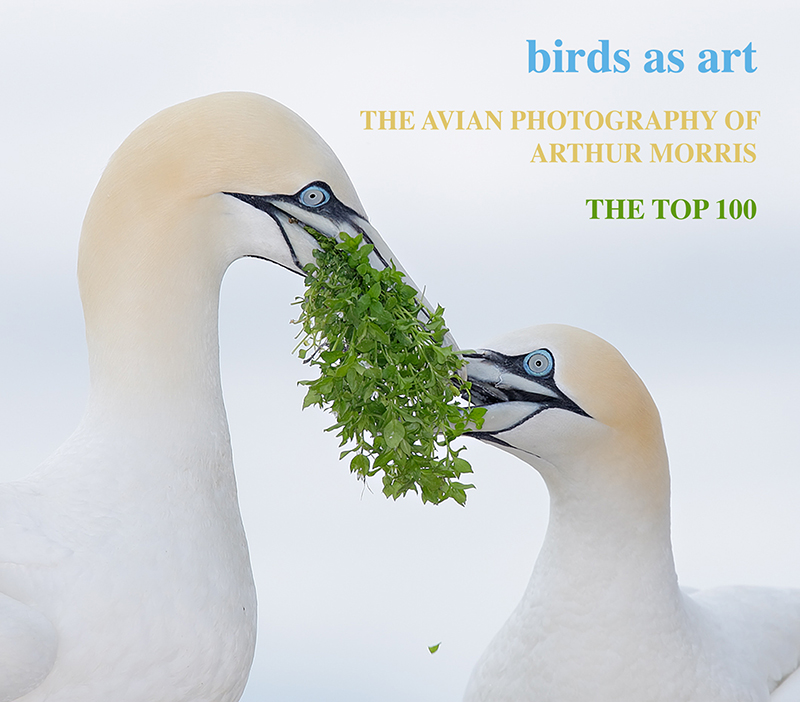
|
birds as art: The Avian Photography of Arthur Morris/The Top 100
The companion e-book to the solo exhibit at TheNat, San Diego, California
The new e-book on CD is available here.
|
birds as art: The Avian Photography of Arthur Morris/The Top 100
This e-book was created on a wing and a prayer in less than two weeks–see the “Harebrained Scheme” blog post here–includes the 67 spectacular images that hung in the Ordover Gallery at the San Diego Natural History Museum in a career-retrospective solo exhibition in 2017. In addition, there are an additional 33 images in the spectacular e-book that barely missed making the show.
This exhibition companion e-book makes it possible for everyone to “visit” TheNAT gallery retrospectively and retroactively, and, in addition, to enjoy seeing my then-top one hundred bird photographs under one roof. Each image includes a title, the species name, the location, relevant EXIF data, and an anecdotal caption.
birds as art: The Avian Photography of Arthur Morris/The Top 100: $23 for the professionally produced CD (includes shipping to US addresses only)
Please click here to purchase the CD. As above, your purchase price includes shipping to all US addresses. If you would like your CD signed on the inside cover with a black Sharpie, you will need to place your order by phone and request a signed copy: 863-692-0906. For our Canadian friends we are offering the CD for $28 with shipping to Canada via phone orders only: 863-692-0906. Those who purchase the CD are advised to copy the file to their computers and then archive the CD.
To purchase via convenient download for $20, click here.
Oldie But Goodie #3
Canon EF 600mm f/4L IS USM Lens (with extras)
Multiple IPT veteran Doug West is offering a Canon EF 600mm f/4L IS USM L lens in Good condition for a very low $1999.00. The front element is perfect. The lens is is mechanically perfect and thus still produces sharp images in competent hands. It is, however, obvious that the lens has been well-used. There are numerous scratches, paint chips, and blemishes on the lens and specially on the lens foot. Descriptive photos of the lens are available upon request. The sale includes the rear lens cap, the original front lens cover, a ReaTree LensCoat (a $75.00 value but without the strip that covers the tripod ring), a LensCoat Hoodie (a $24.95 value), a Wimberley P-50 lens plate (a $55.00 value), and insured ground shipping via major courier to lower 48 US addresses.
Please contact Doug via e-mail.
The 600mm f/4 lenses have been the state of the art super-telephotos for birds, nature, wildlife, and sports for many decades. Whenever it is feasible for me to get a 600mm f4 to a location, it is almost always my go-to weapon. They are fast and sharp and deadly bare or with either TC. With the latest 600mm f/4 lenses going for anywhere from $13,000 to $15,500, grabbing Doug’s oldie but goodie lens can get you into the big glass game cheaply! As it is priced to go out the door quickly so do not tarry if you are fit and eager to go long. Both of today’s featured images were created with the very same model lens that Doug is offering. artie
|
|
|
This all-new card includes images created on my JAN 2022 visit to San Diego. Click on the composite to enjoy a larger version.
|
The 2022/23 San Diego Brown Pelicans (and more!) IPTs
San Diego IPT #1. 3 1/2 DAYS: WED 21 DEC thru the morning session on Saturday 24 DEC 2022. $2099.00. Deposit: $699.00. Limit: 6 photographers/Openings: 5.
San Diego IPT #2. 4 1/2 DAYS: SAT 7 JAN thru the morning session on WED 11 JAN 2023: $2699.00. Deposit: $699.00. Limit: 6 photographers/Sold Out.
San Diego IPT #3: 4 1/2 DAYS: THURS 19 JAN thru the morning session on MON 23 JAN 2023: $2699.00. Deposit: $699.00. Limit: 6 photographers.
Please e-mail for information on personalized pre- and post-IPT sessions.
Join me in San Diego to photograph the spectacular breeding plumage Brown Pelicans with their fire-engine red and olive green bill pouches; Brandt’s (nesting) and Double-crested Cormorants; breeding plumage Wood and Ring-necked Ducks; other duck species possible including Lesser Scaup, Redhead, Northern Shoveler and Surf Scoter; a variety of gulls including Western, California, and the gorgeous Heermann’s, all in full breeding plumage; shorebirds including Marbled Godwit, Willet, Sanderling and Black-bellied Plover; many others are possible including Least, Western, and Spotted Sandpiper, Whimbrel, Black and Ruddy Turnstone, Semipalmated Plover, and Surfbird; Harbor Seals and California Sea Lions (both depending on the current regulations and restrictions). And as you can see by studying the IPT cards, there are some nice bird-scape and landscape opportunities as well. Not to mention a ton of excellent flight photography opportunities and instruction.
Please note: where permitted and on occasion, ducks and gulls may be attracted (or re-located) with offerings of grains or healthy bread.
|
|
|
San Diego offers a wealth of very attractive natural history subjects, including and especially the Pacific race of California Brown Pelican. With annual visits spanning more than four decades, I have lots of photographic experience there … Click on the composite to enjoy a larger version.
|
Learning Exposure, Whether You Like It Or Not
Whether you like it or not, we will be beating the subject of exposure like a dead horse. In every new situation, you will hear my thoughts on exposure along with my thoughts on both Nikon and Canon histograms and SONY Zebras. Whether you like it or not, you will learn to work in manual mode so that you can get the right exposure every time (as long as a bird gives you ten seconds with the light constant). Or two seconds with SONY zebras … And you will learn what to do when the light is changing constantly. What you learn about exposure will be one of the great takeaways on every IPT.
|
|
|
Though the pelicans will be the stars of the show on this IPT, there will be many other handsome and captivating subjects in wonderful settings. Click on the composite to enjoy a larger version.
|
It Ain’t Just Pelicans
With gorgeous subjects just sitting there waiting to have their pictures taken, photographing the pelicans on the cliffs is about as easy as nature photography gets. With the winds from the east almost every morning there is usually some excellent flight photography as well, often with 70-200mm lenses! And the pelicans are almost always doing something interesting: preening, scratching, bill pouch cleaning, or squabbling. And then there are those crazy head throws that are thought to be a form of intra-flock communication. You will be guided as to how to make the best of those opportunities. Depending on the weather, the local conditions, and the tides, there are a variety of other fabulous photo chances available in and around San Diego.
|

|
|
Did I mention that there are lots of great birds and natural history subjects in San Diego in winter? Click on the composite to enjoy a larger version.
|
The San Diego Details
These IPTs will include four or five 3-hour morning photo sessions, three or four 1 1/2-hour afternoon photo sessions, and three or four working brunches that will include image review and Photoshop sessions. On rare cloudy days, we may — at the leader’s discretion, stay out in the morning for a long session and skip that afternoon. To ensure early starts, breakfasts will be your responsibility. And so that we can get some sleep, dinners will be on your own as well. In the extremely unlikely event that Goldfish Point is closed due to local ordinance (or whimsy) — that has never happened in the past fifty years, I will of course do my very best to maximize our photographic opportunities.
|
|
|
San Diego offers a wealth of very attractive natural history subjects, including and especially the Pacific race of California Brown Pelican. With annual visits spanning more than four decades, I have lots of photographic experience there … Click on the composite to enjoy a larger version.
|
Deposit Info
A $699 deposit is required to hold your slot for one of the 2022/23 San Diego IPTs. You can send a check (made out to “BIRDS AS ART”) to us here: BIRDS AS ART, PO Box 7245, Indian Lake Estates, FL, 33855, or call Jim or Jennifer at the office with a credit card at 863-692-0906. Your balance, payable only by check, is due three months before the trip.
|

|
|
Variety is surely the spice of life in San Diego. Click on the composite to enjoy a larger version.
|
Getting Up Early and Staying Out Late
On all BIRDS AS ART IPTS including and especially the San Diego IPT, we get into the field early to take advantage of unique and often spectacular lighting conditions and we stay out late to maximize the chances of killer light and glorious sunset silhouette situations. We often arrive at the cliffs a full hour before anyone else shows up to check out the landscape and seascape opportunities.
Typos
With all blog posts, feel free to e-mail or to leave a comment regarding any typos or errors.
November 18th, 2022 What’s Up?
Still, too much work, too little play. I was feeling just a bit under-the-weather yesterday, so I skipped my swims and my walk. I did not make it down to the lake. I did, however, get lots of work done on the NANPA issue; the small group I am working with is just about ready to act.
Today is Friday 18 November 2022. I will continue to take it easy. I do need to get some serious work done on the San Diego B&H Event Space program. This blog post took about two hours to prepare and makes two hundred thirty-six days in a row with a new one. Wherever you are and whatever you are doing, I hope that you too have a great day.
Please remember to use the B&H and Amazon links that are found on most blog pages and to use the BIRDSASART discount code at checkout when purchasing your new gear from Bedfords to get 3% back on your credit card and enjoy free second-day air FedEx. Please, also, consider joining a BAA IPT. You will be amazed at how much you will learn!
You can find some great photo accessories (and necessities, like surf booties!) on Amazon by clicking on the Stuff tab on the orange/yellow menu bar above. On a related note, it would be extremely helpful if blog-folks who, like me, spend too much money on Amazon, would get in the habit of clicking on the Amazon logo link on the right side of each blog post when they shop online. As you might expect, doing so will not cost you a single penny, but would be appreciated tremendously by yours truly. And doing so works seamlessly with your Amazon Prime account.
Please remember that if an item — a Delkin flash card, or a tripod head — for example, that is available from B&H and/or Bedfords, is also available in the BAA Online Store, it would be great, and greatly appreciated, if you would opt to purchase from us. We will match any price. Please remember also to use my B&H affiliate links or to earn 3% cash back at Bedfords by using the BIRDSASART discount code at checkout for your major gear purchases. Doing either often earns you free guides and/or discounts. And always earns my great appreciation.
|
|
|
This image was created on 2 October 2022 down by the lake near my home. Standing at full height I used the no-longer available (except from BAA) Induro GIT 304L tripod/Levered-Clamp FlexShooter Pro-mounted Panning Ground Pod-supported Sony FE 600mm f/4 GM OSS lens with the Sony FE 1.4x Teleconverter, and The One, the Sony Alpha 1 Mirrorless Digital Camera.. ISO 800. The exposure was determined by Zebras with ISO on the rear wheel: 1/3200 second at f/5.6 (wide open) in Manual mode. RawDigger showed that the raw file brightness was dead-solid perfect (as below). AWB at 8:48:37am on sunny morning with a slight breeze from the SW.
Tracking: Zone/AF-C with Bird-Eye/Face Detection performed amazingly well.
Image #1: The original for the Black-bellied Whistling Duck landing away image
|
The Situation and the Original
There were about a dozen Greater Yellowlegs along with lots of ducks in a shallow, flooded-by-Ian pool on the edge of the North Field. Since I could not drive on the soaked field, I set up at 840mm on the tripod and approached the birds slowly. I didn’t get much on the shorebirds before they flew. Some of the ducks — black-bellied whistlers and mottleds, flew off, and several flew in. Trying to shoot more aggressively, I fired off several frames of the bird in Image #1 even though it was angling away from me as it landed. I got really lucky with frame _A1G5967 as the bird looked back at me below its raised right wing.
Above is the converted .TIF file. Before you scroll down to #1C, the optimized version, ask yourself, “Would I do any background clean-up? Would I crop this image? If yes, how?
|
|
|
Tracking: Zone/AF-C with Bird-Eye/Face Detection performed amazingly well. Click on the image to enjoy the high-res version.
Image #1A: The A7INFO screen capture for the Black-bellied Whistling Duck landing away image
|
Beyond Amazing
No matter what mirrorless camera you own and use, do not expect the AF performance that you see in #1A with every flight shot that you take. As I’ve said here before, even when A7INFO shows that the AF point was not on the bird’s eye, most of the images are either razor sharp or acceptably sharp on the eye. This may be because the system that records the AF information is not fast enough to keep up with the AF system itself. In any case, the AF performance here, with the bird 31.45 meters (103′ 2″) away, was way beyond the call of duty.
|
|
|
Click on the image to better see the green eye-AF boxes in action.
Sony Alpha 1 Flight Photography AF Points!
|
The SONY Alpha a1 Set-up Guide and Info Group: $150.00 (or Free)
The SONY Alpha a1 Set-up Guide and Info Group is going great guns as more and more folks chime in with thoughtful questions and experience-based answers. As the a1 is becoming more readily available, more and more folks are getting their hands on this amazing body. By June 1, 2022, the group was up to an astounding 124 lucky and blessed folks. (More than a few folks own two or more a1 bodies! Early on, we discussed the myriad AF options. I gave my opinion as to the best one for flight and general bird photography. The best news is that everyone in the group receives an e-mail that includes a .DAT file with my a1 settings on it, and explicit directions on how to load my settings onto your a1; talk about convenience! I am now offering a .DAT file compatible with firmware update 1.20. Your entry into the group includes a consolidated Sony a1 CAMSETA2 INFO & GUIDE. New a1 folks will now receive six e-mails instead of the previous 28! You will receive new e-mails as they are published. Simply put, this e-mail guide is an incredible resource for anyone with an a1.
All who purchased their Alpha 1 bodies via a BAA affiliate link — B&H or Bedfords — will receive a free Sony Alpha a1 Set-Up Guide and free entry into the Info Updates group after shooting me their receipts via e-mail. (Note: it may take me several days to confirm B&H orders.). Others can purchase their guide here in the BAA Online Store.
|
|
|
Click on the image to enjoy the high-res version.
Image #1B: The RawDigger screen capture for the Black-bellied Whistling Duck landing away image
|
Ho Hum, Another Perfect Exposure
What can I say? The combination of Zebras live in the viewfinder (with your camera set up properly) and post-capture study of the raw files in RawDigger makes it pretty much child’s play to come up with perfect exposure after perfect exposure. It would be impossible to overstate how much I have learned by studying RawDigger and how much better my exposures have become since I started with the program almost two years ago. With the G channel almost making the 16000 line, the raw file brightness for today’s featured image is dead-solid perfect. Note also the total of 89 OvExp pixels out of 51 million.
RawDigger — not for the faint of heart …
Nothing has ever helped me learn to create perfect exposures to the degree that RawDigger has. I think that many folks are reluctant to learn that most of their images are underexposed by one or more full stops and that highlight warnings in Photoshop, Lightroom, Capture One, and your in-camera histogram are bogus as they are based on the embedded JPEGs. Only your raw files tell the truth all the time. Heck, I resisted RawDigger for several years … Once you get over that feeling, RawDigger can become your very best exposure friend no matter what system you are using. On the recent IPTs and In-the-Field sessions, we have demonstrated that fact. Convincingly.
The RawDigger Adapted (pink) Histogram
In the RawDigger e-Guide, you will learn exactly how to set up the Adapted “pink” RawDigger Histogram and how to use it to quickly and easily evaluate the exposure or raw file brightness of images from all digital cameras currently in use. RawDigger was especially helpful to me as I have struggled with R5 exposures and learned my new camera body, the Sony Alpha a1.
|
|
RawDigger e-Guide with Two Videos
|
The RawDigger e-Guide with Two Videos
by Arthur Morris with Patrick Sparkman
The RawDigger e-Guide was created only for serious photographers who wish to get the absolute most out of their raw files.
Patrick and I began work on the guide in July 2020. At first, we struggled. We asked questions. We learned about Max-G values. We puzzled as to why the Max G values for different cameras were different. IPT veteran Bart Deamer asked lots of questions that we could not answer. We got help from RawDigger creator Iliah Borg. We learned. In December, Patrick came up with an Adapted Histogram that allows us to evaluate the exposures and raw file brightness for all images created with all digital camera bodies from the last two decades. What we learned each time prompted three complete beginning to end re-writes.
The point of the guide is to teach you to truly expose to the mega-Expose-to-the-Right so that you will minimize noise, maximize image quality, best utilize your camera’s dynamic range, and attain the highest possible level of shadow detail in your RAW files in every situation. In addition, your properly exposed RAW files will contain more tonal information and feature the smoothest possible transitions between tones. And your optimized images will feature rich, accurate color.
We teach you why the GREEN channel is almost always the first to over-expose. We save you money by advising you which version of RawDigger you need. We teach you how to interpret the Max G values for your Canon, Nikon, and SONY camera bodies. It is very likely that the Shock-your-World section will shock you. And lastly — thanks to the technical and practical brilliance of Patrick Sparkman — we teach you a simple way to evaluate your exposures and the raw file brightness quickly and easily the Adapted RawDigger histogram.
The flower video takes you through a session where artie edits a folder of images in Capture One while checking the exposures and Max-G values in RawDigger. The Adapted Histogram video examines a series of recent images with the pink histograms and covers lots of fine points including and especially how to deal with specular highlights. The directions for setting up the Adapted Histogram are in the text.
If we priced this guide based on how much effort we put into it, it would sell it for $999.00. But as this guide will be purchased only by a limited number of serious photographers, we have priced it at $51.00. You can order yours here in the BAA Online Store.
|
|
|
This image was created on 2 October 2022 down by the lake near my home. Standing at full height I used the no-longer available (except from BAA) Induro GIT 304L tripod/Levered-Clamp FlexShooter Pro-mounted Panning Ground Pod-supported Sony FE 600mm f/4 GM OSS lens with the Sony FE 1.4x Teleconverter, and The One, the Sony Alpha 1 Mirrorless Digital Camera.. ISO 800. The exposure was determined by Zebras with ISO on the rear wheel: 1/3200 second at f/5.6 (wide open) in Manual mode. RawDigger showed that the raw file brightness was dead-solid perfect (as below). AWB at 8:48:37am on sunny morning with a slight breeze from the SW.
Tracking: Zone/AF-C with Bird-Eye/Face Detection performed amazingly well. Click on the image to enjoy the high-res version.
Image #1C: The optimized version of the Black-bellied Whistling Duck landing away image
|
The Image Optimization
I did not like the tall, prominent grasses growing out of the pool. I used two different methods to remove them. Both began by selecting the offending grasses with the Patch Tool. Content-Aware Fill worked well with most of them, but when that approach failed, I simply dragged the patched areas to a smooth area and let go of the cursor. Both of these methods occasionally leave noticeable edges, so I applied a 65px Gaussian Blur to a layer, added an Inverse (Black, or Hide-All) mask, and — using a large, soft brush, painted in the blur where needed in 33% increments. To make sure that I did not accidentally have any spill-over blurring of the bird, I hit X to switch to a white brush, hit 0 to get to 100% Opacity, reduced the size of the brush using the left bracket key, and painted along the edges of the bird. The last step was a small proportional crop from the lower left corner to tighten up the composition.
Thumbs Up or Thumbs Down?
OK. The bird is flying away. This generally results in an insta-delete. That said, would you give this one a Thumbs Up or a Thumbs Down? Please leave a comment and let us know why you voted the way that you did.
Is Sony Mirrorless Gear, with Zebras for stills and science-fiction-like autofocus, unfair to flying birds?
I will say this, for folks using a properly set-up Sony a1, bird photography has never been easier.
|
|
The BIRDS AS ART Current Workflow e-Guide (Digital Basics II).
You can order your copy from the BAA Online Store here, by sending a PayPal for $40 here, or by calling Jim or Jennifer weekdays at 863-692-0906 with your credit card in hand. Be sure to specify Digital Basics II.
|
The BIRDS AS ART Current Workflow e-Guide (Digital Basics II)
The techniques mentioned above and tons more great Photoshop tips and techniques — along with my complete digital workflow, Digital Eye Doctor Techniques, and all my personalized Keyboard Shortcuts — are covered in detail in the BIRDS AS ART Current Workflow e-Guide (Digital Basics II), an instructional PDF that is sent via e-mail. Note: folks working on a PC and/or those who do not want to miss anything Photoshop may wish to purchase the original Digital Basics along with DB II while saving $15 by clicking here to buy the DB Bundle.
Folks who learn well by following along rather than by reading can check out the complete collection of MP 4 Photoshop Tutorial Videos by clicking here. Note: most of the videos are now priced at an amazingly low $5.00 each.
You can learn how and why I converted all of my Canon digital RAW files in DPP 4 in the DPP 4 RAW Conversion Guide here. More recently, I became proficient at converting my Nikon RAW (NEF) files in Adobe Camera Raw. About three years ago I began converting my Nikon and Sony RAW files in Capture One and did that for two years. You can learn more about Capture One in the Capture One Pro 12 Simplified MP4 Video here. The next step would be to get a copy of Arash Hazeghi’s “The Nikon Photographers’ Guide to Phase One Capture One Pro e-Guide” in the blog post here. Today, I convert my Sony raw files in Photoshop with Adobe Camera Raw.
You can learn advanced Quick Masking and advanced Layer Masking techniques in APTATS I & II. You can save $15 by purchasing the pair.
Typos
With all blog posts, feel free to e-mail or to leave a comment regarding any typos or errors.
November 17th, 2022
|
|
Photographing Pelicans in Southern California with Arthur Morris
|
A B&H Event Space Program
Photographing Pelicans in Southern California with Arthur Morris
On Tuesday Nov 22, 2022, I will be presenting another B&H Event Space program from 5:00pm – 6:00pm ET.
Arthur Morris, one of the world’s premier photographic educators, has been photographing the spectacular Brown Pelicans in San Diego, CA for more than three decades. The Pacific-race pelicans in La Jolla are much more colorful than their eastern relatives; they sport fire-engine red, olive-green bill pouches in winter. In addition to his favorite pelican images, Artie will share images of many of the other species that frequent Southern California each winter.
During this live-streamed presentation. Artie will share his thoughts on the best gear, on designing pleasing images, on capturing all types of pelican behaviors, on seeing and using the light, and on getting the right exposure in varying lighting conditions. He will share photos ranging from tight head portraits to small-in-the-frame bird-scapes. There will be lots of great flight photography tips as well.
Using Canon, Nikon, and Sony gear, photographing birds has been Artie’s passion for the past forty years.
Register for this free, online-only presentation here.
What’s Up?
Too much work, too little play. I swam 48 lengths in the early afternoon and walked and putted 3.1 miles on the golf course just before dusk. The rest of the day was work, work, and more work.
Today is Thursday 17 November 2022. I may try to get down to the lake for a bit in the morning. This blog post took about an hour to prepare and makes two hundred thirty-five days in a row with a new one. Wherever you are and whatever you are doing, I hope that you too have a great day.
Please remember to use the B&H and Amazon links that are found on most blog pages and to use the BIRDSASART discount code at checkout when purchasing your new gear from Bedfords to get 3% back on your credit card and enjoy free second-day air FedEx. Please, also, consider joining a BAA IPT. You will be amazed at how much you will learn!
You can find some great photo accessories (and necessities, like surf booties!) on Amazon by clicking on the Stuff tab on the orange/yellow menu bar above. On a related note, it would be extremely helpful if blog-folks who, like me, spend too much money on Amazon, would get in the habit of clicking on the Amazon logo link on the right side of each blog post when they shop online. As you might expect, doing so will not cost you a single penny, but would be appreciated tremendously by yours truly. And doing so works seamlessly with your Amazon Prime account.
Please remember that if an item — a Delkin flash card, or a tripod head — for example, that is available from B&H and/or Bedfords, is also available in the BAA Online Store, it would be great, and greatly appreciated, if you would opt to purchase from us. We will match any price. Please remember also to use my B&H affiliate links or to earn 3% cash back at Bedfords by using the BIRDSASART discount code at checkout for your major gear purchases. Doing either often earns you free guides and/or discounts. And always earns my great appreciation.
The Skinny on the Down Low
I was sitting on the edge of the upper shelf hoping to photograph some of the pelicans on the lower level without having to climb down. Unexpectedly, a gorgeous pelican molting into breeding plumage landed right in front of me on a rock just above the lower shelf. When I raised the lens to my eye, I had pelicans in the background. When I rested the lens on my bent left knee and — with my reading glasses on — worked off the tilted rear monitor, I still had pelicans in the background. I leaned forward as far as I could without falling off the rock and — with my reading glasses on — worked off the tilted rear monitor. Both feet were hanging down, my heels against the rock I was sitting on, and I braced both elbows on my knees. In addition to eliminating the distracting pelicans from the lower background, it effectively moved the ocean farther away from the subject thus yielding the gorgeous, out-of–focus Pacific-blue backgrounds that I love working with at La Jolla. While this is certainly not the most stable set-up ever, 1/1000 second was fast enough to yield sharp images.
This handsome bird is just about finished molting into full breeding plumage. In another week, the entire hind-neck with be a rich dark-brown color often with a bit of a reddish tint.
Success in bird photography is often a matter of inventing new techniques in the field, techniques that innovatively solve problems that pop up on an almost daily basis. See yesterday’s blog post for a recent example. Consider joining me on an Instructional Photo-Tour (IPT) and get to see how that works in person.
|
|
|
This all-new card includes images created on my JAN 2022 visit to San Diego. Click on the composite to enjoy a larger version.
|
The 2022/23 San Diego Brown Pelicans (and more!) IPTs
San Diego IPT #1. 3 1/2 DAYS: WED 21 DEC thru the morning session on Saturday 24 DEC 2022. $2099.00. Deposit: $699.00. Limit: 6 photographers/Openings: 5.
San Diego IPT #2. 4 1/2 DAYS: SAT 7 JAN thru the morning session on WED 11 JAN 2023: $2699.00. Deposit: $699.00. Limit: 6 photographers/Sold Out.
San Diego IPT #3: 4 1/2 DAYS: THURS 19 JAN thru the morning session on MON 23 JAN 2023: $2699.00. Deposit: $699.00. Limit: 6 photographers.
Please e-mail for information on personalized pre- and post-IPT sessions.
Join me in San Diego to photograph the spectacular breeding plumage Brown Pelicans with their fire-engine red and olive green bill pouches; Brandt’s (nesting) and Double-crested Cormorants; breeding plumage Wood and Ring-necked Ducks; other duck species possible including Lesser Scaup, Redhead, Northern Shoveler and Surf Scoter; a variety of gulls including Western, California, and the gorgeous Heermann’s, all in full breeding plumage; shorebirds including Marbled Godwit, Willet, Sanderling and Black-bellied Plover; many others are possible including Least, Western, and Spotted Sandpiper, Whimbrel, Black and Ruddy Turnstone, Semipalmated Plover, and Surfbird; Harbor Seals and California Sea Lions (both depending on the current regulations and restrictions). And as you can see by studying the IPT cards, there are some nice bird-scape and landscape opportunities as well. Not to mention a ton of excellent flight photography opportunities and instruction.
Please note: where permitted and on occasion, ducks and gulls may be attracted (or re-located) with offerings of grains or healthy bread.
|
|
|
San Diego offers a wealth of very attractive natural history subjects, including and especially the Pacific race of California Brown Pelican. With annual visits spanning more than four decades, I have lots of photographic experience there … Click on the composite to enjoy a larger version.
|
Learning Exposure, Whether You Like It Or Not
Whether you like it or not, we will be beating the subject of exposure like a dead horse. In every new situation, you will hear my thoughts on exposure along with my thoughts on both Nikon and Canon histograms and SONY Zebras. Whether you like it or not, you will learn to work in manual mode so that you can get the right exposure every time (as long as a bird gives you ten seconds with the light constant). Or two seconds with SONY zebras … And you will learn what to do when the light is changing constantly. What you learn about exposure will be one of the great takeaways on every IPT.
|
|
|
Though the pelicans will be the stars of the show on this IPT, there will be many other handsome and captivating subjects in wonderful settings. Click on the composite to enjoy a larger version.
|
It Ain’t Just Pelicans
With gorgeous subjects just sitting there waiting to have their pictures taken, photographing the pelicans on the cliffs is about as easy as nature photography gets. With the winds from the east almost every morning there is usually some excellent flight photography as well, often with 70-200mm lenses! And the pelicans are almost always doing something interesting: preening, scratching, bill pouch cleaning, or squabbling. And then there are those crazy head throws that are thought to be a form of intra-flock communication. You will be guided as to how to make the best of those opportunities. Depending on the weather, the local conditions, and the tides, there are a variety of other fabulous photo chances available in and around San Diego.
|

|
|
Did I mention that there are lots of great birds and natural history subjects in San Diego in winter? Click on the composite to enjoy a larger version.
|
The San Diego Details
These IPTs will include four or five 3-hour morning photo sessions, three or four 1 1/2-hour afternoon photo sessions, and three or four working brunches that will include image review and Photoshop sessions. On rare cloudy days, we may — at the leader’s discretion, stay out in the morning for a long session and skip that afternoon. To ensure early starts, breakfasts will be your responsibility. And so that we can get some sleep, dinners will be on your own as well. In the extremely unlikely event that Goldfish Point is closed due to local ordinance (or whimsy) — that has never happened in the past fifty years, I will of course do my very best to maximize our photographic opportunities.
|
|
|
San Diego offers a wealth of very attractive natural history subjects, including and especially the Pacific race of California Brown Pelican. With annual visits spanning more than four decades, I have lots of photographic experience there … Click on the composite to enjoy a larger version.
|
Deposit Info
A $699 deposit is required to hold your slot for one of the 2022/23 San Diego IPTs. You can send a check (made out to “BIRDS AS ART”) to us here: BIRDS AS ART, PO Box 7245, Indian Lake Estates, FL, 33855, or call Jim or Jennifer at the office with a credit card at 863-692-0906. Your balance, payable only by check, is due three months before the trip.
|

|
|
Variety is surely the spice of life in San Diego. Click on the composite to enjoy a larger version.
|
Getting Up Early and Staying Out Late
On all BIRDS AS ART IPTS including and especially the San Diego IPT, we get into the field early to take advantage of unique and often spectacular lighting conditions and we stay out late to maximize the chances of killer light and glorious sunset silhouette situations. We often arrive at the cliffs a full hour before anyone else shows up to check out the landscape and seascape opportunities.
Typos
With all blog posts, feel free to e-mail or to leave a comment regarding any typos or errors.
November 16th, 2022 What’s Up?
Again, not much. I swam a mile — 48 lengths in the morning and that was about it as I had to run into town to do some errands.
Today is Wednesday 16 November 2022. I got lots accomplished yesterday but still have tons more work to do on the urgent and ongoing problems at NANPA (North American Nature Photography Association). In addition, I began working on my next B&H Event Space program. Details on that tomorrow. This blog post took about 90 minutes to prepare and makes two hundred thirty-four days in a row with a new one. Wherever you are and whatever you are doing, I hope that you too have a great day.
Please remember to use the B&H and Amazon links that are found on most blog pages and to use the BIRDSASART discount code at checkout when purchasing your new gear from Bedfords to get 3% back on your credit card and enjoy free second-day air FedEx. Please, also, consider joining a BAA IPT. You will be amazed at how much you will learn!
You can find some great photo accessories (and necessities, like surf booties!) on Amazon by clicking on the Stuff tab on the orange/yellow menu bar above. On a related note, it would be extremely helpful if blog-folks who, like me, spend too much money on Amazon, would get in the habit of clicking on the Amazon logo link on the right side of each blog post when they shop online. As you might expect, doing so will not cost you a single penny, but would be appreciated tremendously by yours truly. And doing so works seamlessly with your Amazon Prime account.
Please remember that if an item — a Delkin flash card, or a tripod head — for example, that is available from B&H and/or Bedfords, is also available in the BAA Online Store, it would be great, and greatly appreciated, if you would opt to purchase from us. We will match any price. Please remember also to use my B&H affiliate links or to earn 3% cash back at Bedfords by using the BIRDSASART discount code at checkout for your major gear purchases. Doing either often earns you free guides and/or discounts. And always earns my great appreciation.
Brand-New and As-Good-As-Ever Bedfords BAA Discount Policy
Folks who have fallen in love with Bedfords can now use the BIRDSASART coupon code at checkout to enjoy a post-purchase, 3% off-statement credit (excluding taxes and shipping charges) on orders paid with a credit card. The 3% credit will be refunded to the card you used for your purchase. Be sure, also, to check the box for free shipping to enjoy free Second Day Air Fed-Ex. This offer does not apply to purchases of Classes, Gift Cards, or to any prior purchases.
Money Saving Reminder
Many have learned that if you need a hot photo item that is out of stock at B&H and would like to enjoy getting 3% back on your credit card along with free 2nd Day Air Fed-Ex Air shipping, your best bet is to click here, place an order with Bedfords, and enter the coupon code BIRDSASART at checkout. If an item is out of stock, contact Steve Elkins via e-mail or on his cell phone at (479) 381-2592 (Central time). Be sure to mention the BIRDSASART coupon code and check the box for Free Shipping. That will automatically upgrade to free 2nd Day Air Fed-Ex. Steve has been great at getting folks the hot items that are out of stock at B&H and everywhere else. The waitlists at the big stores can be a year or longer for the hard-to-get items. Steve will surely get you your gear long before that. For the past year, he has been helping BAA Blog folks get their hands on items like the SONY a 1, the SONY 200-600 G OSS lens, the Canon EOS R5, the Canon RF 100-500mm lens, and the Nikon 500mm PF. Steve is personable, helpful, and eager to please.
Important Note
As an Amazon Associate, I earn a small percentage when you purchase from Amazon after using any of the Amazon links on the blog (including the logo-link on the right side of each blog post page). My affiliate link works fine with Amazon Prime and using it will not cost you a single cent. Huge thanks, BTW 🙂


Gear Questions and Advice
Too many folks attending BAA IPTs and dozens of photographers whom I see in the field and on BPN, are — out of ignorance — using the wrong gear, especially when it comes to tripods and more especially, tripod heads. And the same is true in spades when ordering new camera bodies or lenses. My advice will often save you some serious money and may help you avoid making a seriously bad choice. Please know that I am always glad to answer your gear questions via e-mail. If you are desperate, you can try me on my cell at 863-221-2372. Please leave a message and shoot me a text if I do not pick up.
The Next Keeper
I created today’s featured image nearly three minutes after the heron had tossed the catfish in the air. I had turned the camera to vertical, but the first few frames were not very successful as the bird had stooped forward. I was, however, duly rewarded when the bird stood tall and tipped its head back.
I should have mentioned yesterday that I was able to lean against a tall post to steady the monopod. Tripods will always be more solid than monopods, but their lighter weight and portability are very attractive to the elderly (and to others as well).
The background clean-up for today’s image was less extensive than it was for yesterday’s.
|
|
iPhone photo by Jim Litzenberg
Image #2: The traditional over-the top grip for shooting verticals
|
The Traditional Over-the-top Grip for Shooting Verticals
If you are on a tripod and not using a vertical grip with the camera controls, the traditional approach to shooting verticals is to rotate your telephoto lens counterclockwise in the tripod collar. This places your hand above the camera as seen in Image #2 above. I quickly realized that when you are working off a monopod that the traditional approach increases the height of the rig. You might say that increases the length of the lever-arm and creates additional instability.
|
|
iPhone photo by Jim Litzenberg
Image #3: The non-traditional hand-below grip for shooting verticals
|
Building the Better Mouse Trap
Rather than deal with the instability that resulted from using the traditional over-the-top grip for shooting verticals, I experimented by rotating the lens clockwise in the tripod collar. This made the whole set-up shorter, reduced the length of the lever-arm, and made the monopod rig much steadier. Thinking back, I can recall using the same approach with a big lens on a tripod when another photographer was behind and slightly to my right. Rotating the lens clockwise will get your elbow out of their shot when the going is tight.
Note that in Images #2 and 3 that the monopod is resting against the inside of my left elbow. That to further increase stability.
Typos
With all blog posts, feel free to e-mail or to leave a comment regarding any typos or errors.
November 15th, 2022 What’s Up?
Again, not much. I swam a mile — 44 lengths in the morning, and then 44 more in the afternoon.
Many wonder why I spend so much time watching every NFL game on TV (courtesy of Direct TV’s NFL Package). The ending of the Buffalo Bill/Minnesota Vikings game was far beyond remarkable. The Vikings had trailed 27-10 in the third quarter. With two minutes to go and the Vikings trailing by only four, Justin Jefferson made one of the all-time great catches, stealing the ball from a Bills’ cornerback with one hand while crashing to the ground and controlling the ball. You can see that catch at the beginning of the video here. On the ensuing Minnesota drive, Justin Jefferson apparently won the game with a catch that was ruled a touchdown. But they ruled him down just short of the goal line.
It looked as if the Vikings would score to win the game, but the Bills stuffed a quarterback sneak from the 1/2-yard line. The Bills win! Or not? Bill’s QB Josh Allen fumbled the snap on the next play and a Minnesota player fell on it for the game-winning touchdown. Or not? After the kickoff, Kelly moved the Bills down the field in less than forty seconds for a game-tying field goal (benefitted by a bad call on a bobbled catch). In overtime, the Vikings drove the length of the field on a six-minute 16-second drive that stalled on the 15-yard line. They kicked the go-ahead field goal with 3:44 left in overtime. The Bills answered with a drive of their own and were in position on the 20-yard line to win the game with a touchdown or settle for a game-tying field goal. Watch the video to the end to see the stunning conclusion to the NFL game of the year.
Yesterday’s Post
Of yesterday’s featured images, I’d have to agree with Jim Saxon:
James Saxon/November 14, 2022 at 3:37pm
I don’t think I can pick a favorite considering that from the beginning to end they all tell a story about survival. I like the sequence and feel you need all images to tell the story. #3 is my favorite because of the amount of snake still visible which provides a sense of scale with the heron’s prey. Thanks for sharing the entire sequence.
Today is Tuesday 15 November 2022. I got lots accomplished yesterday but still have tons more work to do on the urgent and ongoing problems at NANPA (North American Nature Photography Association). This blog post took about 90 minutes to prepare and makes two hundred thirty-three days in a row with a new one. Wherever you are and whatever you are doing, I hope that you too have a great day.
Please remember to use the B&H and Amazon links that are found on most blog pages and to use the BIRDSASART discount code at checkout when purchasing your new gear from Bedfords to get 3% back on your credit card and enjoy free second-day air FedEx. Please, also, consider joining a BAA IPT. You will be amazed at how much you will learn!
You can find some great photo accessories (and necessities, like surf booties!) on Amazon by clicking on the Stuff tab on the orange/yellow menu bar above. On a related note, it would be extremely helpful if blog-folks who, like me, spend too much money on Amazon, would get in the habit of clicking on the Amazon logo link on the right side of each blog post when they shop online. As you might expect, doing so will not cost you a single penny, but would be appreciated tremendously by yours truly. And doing so works seamlessly with your Amazon Prime account.
Please remember that if an item — a Delkin flash card, or a tripod head — for example, that is available from B&H and/or Bedfords, is also available in the BAA Online Store, it would be great, and greatly appreciated, if you would opt to purchase from us. We will match any price. Please remember also to use my B&H affiliate links or to earn 3% cash back at Bedfords by using the BIRDSASART discount code at checkout for your major gear purchases. Doing either often earns you free guides and/or discounts. And always earns my great appreciation.
Some days are stones. Except when they are not!
Wednesday past was totally boring as compared to Tuesday past. I walked for almost three hours without much to show for my efforts. Then, at the four-trail intersection, I came across the great blue that fishes there regularly. And then the fun began.
Why the Rig Change?
On the previous day, I had killed with the lighter albeit slower by four clicks Sony 200-600mm lens on a lightweight tripod. Yet the next day, I switched tracks and carried the heavier 400mm f/2.8 GM lens with the 1.4X TC and the monopod. Why the change? On Wednesday, the first morning, the skies were partly cloudy with hints of blue. So, I knew that I would have a decent amount of light to work with. On that excellent morning I had one GBH with the armored catfish carcass, and one with the snake. In between, I added the 1.4X TC to work two different backlit Anhingas. But on Thursday, 9 November, the skies were solidly cloudy when I arrived. Therefore, going with the 400 f/2.8 and the 1.4X TC, I would have four clicks more light: f/4 as compared to f/6.3. That yields four clicks less ISO. Again, my instincts turned out to be perfect.
Armored Catfish
There are three invasive species of Armored Catfish in Florida. They are almost impossible to exterminate. They displace native species, can cause severe bank erosion, and harass and cause problems for the manatees.
Living and Learning from Mistakes
On 8 November, I went with 1/500 sec as my minimum shutter speed when working the GBH subduing the snake. That was not fast enough to freeze the action when the bird shook the snake violently. So, the next day, with a faster rig, I upped that to 1/1000 second when photographing the great blue trying to kill and swallow the catfish. The change in strategy paid off with one very special image (out or more than 200).
The Background Clean-Up
During the raw conversion I upped the Luminosity of the GREENs and the YELLOWs on the Color Mixer tab. That had the effects of softening the background. But I found some of the stuff in background around the prey item to be distracting. To clean those up, I used my usual cadre of clean-up tools and techniques. Those included the Clone Stamp Tool (used in conjunction with Divide and Conquer), the Patch Tool, the Spot Healing Brush, Content-Aware Fill, a series of small Quick Masks refined by the addition of a Regular Layer Mask, and Protect and Defend Cloning on a Layer. (The latter is found only in the original Digital Basics.)
Lastly, I applied a layer of Gaussian Blur to the whole image, added a Hide-All (Black, or Inverse layer mask), and painted in the effects at 33% increments as needed to smooth over my clean-up efforts.
While the optimized version maintains the natural history of the moment, it looks a heck of a lot better to me.
|
|
The BIRDS AS ART Current Workflow e-Guide (Digital Basics II).
You can order your copy from the BAA Online Store here, by sending a PayPal for $40 here, or by calling Jim or Jennifer weekdays at 863-692-0906 with your credit card in hand. Be sure to specify Digital Basics II.
|
The BIRDS AS ART Current Workflow e-Guide (Digital Basics II)
The techniques mentioned above and tons more great Photoshop tips and techniques — along with my complete digital workflow, Digital Eye Doctor Techniques, and all my personalized Keyboard Shortcuts — are covered in detail in the BIRDS AS ART Current Workflow e-Guide (Digital Basics II), an instructional PDF that is sent via e-mail. Note: folks working on a PC and/or those who do not want to miss anything Photoshop may wish to purchase the original Digital Basics along with DB II while saving $15 by clicking here to buy the DB Bundle.
Folks who learn well by following along rather than by reading can check out the complete collection of MP 4 Photoshop Tutorial Videos by clicking here. Note: most of the videos are now priced at an amazingly low $5.00 each.
You can learn how and why I converted all of my Canon digital RAW files in DPP 4 in the DPP 4 RAW Conversion Guide here. More recently, I became proficient at converting my Nikon RAW (NEF) files in Adobe Camera Raw. About three years ago I began converting my Nikon and Sony RAW files in Capture One and did that for two years. You can learn more about Capture One in the Capture One Pro 12 Simplified MP4 Video here. The next step would be to get a copy of Arash Hazeghi’s “The Nikon Photographers’ Guide to Phase One Capture One Pro e-Guide” in the blog post here. Today, I convert my Sony raw files in Photoshop with Adobe Camera Raw.
You can learn advanced Quick Masking and advanced Layer Masking techniques in APTATS I & II. You can save $15 by purchasing the pair.
Typos
With all blog posts, feel free to e-mail or to leave a comment regarding any typos or errors.
November 14th, 2022 What’s Up?
Not much. I swam 48 lengths (a bit more than 1/2-mile) in the morning, walked 2.5 miles on the golf course in the late afternoon, and watched NFL games on TIVO for the rest of the day. Go Blue! (The New York Giants football team had been hopeless and hapless for many years; they are now 7-2!)
Of yesterday’s featured images, I liked the young Reddish Egret in Wood Stork heaven best for the creativity involved. I have a zillion Wood Stork head portraits. Though I loved the detail and the soft light, different almost always wins out. For me, at least. Those who commented liked the stork head portrait best.
Today is Monday 14 November 2022. I have lots more work to do on the urgent and ongoing problems at NANPA (North American Nature Photography Association). This blog post took about two hours to prepare and makes two hundred thirty-two days in a row with a new one. Wherever you are and whatever you are doing, I hope that you too have a great day.
Please remember to use the B&H and Amazon links that are found on most blog pages and to use the BIRDSASART discount code at checkout when purchasing your new gear from Bedfords to get 3% back on your credit card and enjoy free second-day air FedEx. Please, also, consider joining a BAA IPT. You will be amazed at how much you will learn!
You can find some great photo accessories (and necessities, like surf booties!) on Amazon by clicking on the Stuff tab on the orange/yellow menu bar above. On a related note, it would be extremely helpful if blog-folks who, like me, spend too much money on Amazon, would get in the habit of clicking on the Amazon logo link on the right side of each blog post when they shop online. As you might expect, doing so will not cost you a single penny, but would be appreciated tremendously by yours truly. And doing so works seamlessly with your Amazon Prime account.
Please remember that if an item — a Delkin flash card, or a tripod head — for example, that is available from B&H and/or Bedfords, is also available in the BAA Online Store, it would be great, and greatly appreciated, if you would opt to purchase from us. We will match any price. Please remember also to use my B&H affiliate links or to earn 3% cash back at Bedfords by using the BIRDSASART discount code at checkout for your major gear purchases. Doing either often earns you free guides and/or discounts. And always earns my great appreciation.
Brand-New and As-Good-As-Ever Bedfords BAA Discount Policy
Folks who have fallen in love with Bedfords can now use the BIRDSASART coupon code at checkout to enjoy a post-purchase, 3% off-statement credit (excluding taxes and shipping charges) on orders paid with a credit card. The 3% credit will be refunded to the card you used for your purchase. Be sure, also, to check the box for free shipping to enjoy free Second Day Air Fed-Ex. This offer does not apply to purchases of Classes, Gift Cards, or to any prior purchases.
Money Saving Reminder
Many have learned that if you need a hot photo item that is out of stock at B&H and would like to enjoy getting 3% back on your credit card along with free 2nd Day Air Fed-Ex Air shipping, your best bet is to click here, place an order with Bedfords, and enter the coupon code BIRDSASART at checkout. If an item is out of stock, contact Steve Elkins via e-mail or on his cell phone at (479) 381-2592 (Central time). Be sure to mention the BIRDSASART coupon code and check the box for Free Shipping. That will automatically upgrade to free 2nd Day Air Fed-Ex. Steve has been great at getting folks the hot items that are out of stock at B&H and everywhere else. The waitlists at the big stores can be a year or longer for the hard-to-get items. Steve will surely get you your gear long before that. For the past year, he has been helping BAA Blog folks get their hands on items like the SONY a 1, the SONY 200-600 G OSS lens, the Canon EOS R5, the Canon RF 100-500mm lens, and the Nikon 500mm PF. Steve is personable, helpful, and eager to please.
Important Note
As an Amazon Associate, I earn a small percentage when you purchase from Amazon after using any of the Amazon links on the blog (including the logo-link on the right side of each blog post page). My affiliate link works fine with Amazon Prime and using it will not cost you a single cent. Huge thanks, BTW 🙂


Gear Questions and Advice
Too many folks attending BAA IPTs and dozens of photographers whom I see in the field and on BPN, are — out of ignorance — using the wrong gear, especially when it comes to tripods and more especially, tripod heads. And the same is true in spades when ordering new camera bodies or lenses. My advice will often save you some serious money and may help you avoid making a seriously bad choice. Please know that I am always glad to answer your gear questions via e-mail. If you are desperate, you can try me on my cell at 863-221-2372. Please leave a message and shoot me a text if I do not pick up.
|
|
|
This image was created on 8 November 2022 at Circle Bar B Preserve in Lakeland, FL. While crouching slightly, I used the no-longer available Induro GIT 204 tripod/Levered-clamp FlexShooter supported-Sony FE 200-600mm f/5.6-6.3 G OSS lens (at 594mm) and The One, the Sony Alpha 1 Mirrorless digital camera. ) The exposure was determined using Zebra technology with ISO on the Thumb Dial. ISO 2500: 1/500 sec. at f/6.3 (wide open) in Manual Mode. AWB at 7:48:43am on a cloudy morning. RawDigger showed the raw file brightness to be perfect.
Tracking: Zone/AF-C with Bird Face/Eye Detection performed perfectly. Be sure to click on the image to enjoy a high-res version.
Image #1: Great Blue Heron subduing snake
|
The Discovery
I was chatting with a photographer from Nalcrest, just across the lake from ILE. As I mentioned here often, the eyes of good photographers are always moving, always checking things out. I spotted a Great Blue Heron standing at the side of the path about 30 yards away. It had a struggling snake in its bill. We both approached. My problem was that I had the 1.4X TC mounted. Having to remove it and stow it cost me about thirty valuable seconds. I chose 1/500 sec. as my shutter speed, but as the heron was quite violently shaking its head as it was killing the snake, 1/500 sec. was not quite fast enough. Even worse, the bird was facing to its right, slightly away from me. Image #1, with the bird facing only slightly away, was the best of the lot.
|
|
|
This image was created on 8 November 2022 at Circle Bar B Preserve in Lakeland, FL. While sitting on the path, I used the knee-pod technique while handholding the Sony FE 200-600mm f/5.6-6.3 G OSS lens (at 594mm) and The One, the Sony Alpha 1 Mirrorless digital camera. ) The exposure was determined using Zebra technology with ISO on the Thumb Dial. ISO 2500: 1/500 sec. at f/6.3 (wide open) in Manual Mode. AWB at 7:50:38am on a cloudy morning. RawDigger showed the raw file brightness to be a bit better than perfect.
Tracking: Zone/AF-C with Bird Face/Eye Detection performed perfectly. Be sure to click on the image to enjoy a high-res version.
Image #2: Great Blue Heron holding dead snake
|
The Death of the Snake
After realizing the head angle problem, I moved to my left and almost instantly un-clamped the rig from the Levered-clamp FlexShooter . That is one of the many advantages of using any of the levered-clamp heads. That strategy worked out well, but the snake had been killed and was hanging straight down. With the background just a few feet from the subject, there were lots of distracting elements in all four images. I did just a bit of background clean-up on the brightest sticks and removed two dark brown areas from Images #1-3. But the backgrounds were still distracting.
|
|
|
This image was created on 8 November 2022 at Circle Bar B Preserve in Lakeland, FL. Still seated on the path, I used the Sony FE 200-600mm f/5.6-6.3 G OSS lens (at 594mm) and The One, the Sony Alpha 1 Mirrorless digital camera. ) The exposure was determined using Zebra technology with ISO on the Thumb Dial. ISO 2500: 1/500 sec. at f/6.3 (wide open) in Manual Mode. AWB at 7:50:55am on a cloudy morning. RawDigger showed the raw file brightness to be a bit better than perfect.
Tracking: Zone/AF-C with Bird Face/Eye Detection performed perfectly. Be sure to click on the image to enjoy a high-res version.
Image #3: Great Blue Heron swallowing snake
|
The Swallowing
It had taken several minutes for the GBH to begin swallowing the snake. As the bird was crouching, I was able to keep shooting horizontals.
|
|
|
This image was created on 8 November 2022 at Circle Bar B Preserve in Lakeland, FL. Still seated on the path, I used the Sony FE 200-600mm f/5.6-6.3 G OSS lens (at 594mm) and The One, the Sony Alpha 1 Mirrorless digital camera. ) The exposure was determined using Zebra technology with ISO on the Thumb Dial. ISO 2500: 1/500 sec. at f/6.3 (wide open) in Manual Mode. AWB at 7:51:26am on a cloudy morning. RawDigger showed the raw file brightness to be dead-solid perfect.
Tracking: Zone/AF-C with Bird Face/Eye Detection performed perfectly. Be sure to click on the image to enjoy a high-res version.
Image #4: Great Blue Heron almost done swallowing the snake
|
Almost Done
As the heron was just about finished with its meal, it stood taller, perhaps in an effort to get the snake down. So, it was only natural to switch to shooting verticals.
You can see the ball of brown crud that was removed from the first three images in the lower left of this frame.
While it is always great to see a Great Blue Heron with a large prey item, the setting last Tuesday was a difficult one. Thus, it was pretty much impossible to create anything outstanding. Remembering that I went with the 200-600 for its light weight and size for my three plus-mile walk, I am guessing that I might have been able to create something dramatic with a cleaner background had I been working at 1200mm with the 600 f/4 GM on the tripod …
That said, if you have a favorite among today’s four featured images, please leave a comment and let us know why you made your choice.
Typos
With all blog posts, feel free to e-mail or to leave a comment regarding any typos or errors.
November 13th, 2022 What’s Up?
I swam on Saturday morning and drove over to Lakeland in the afternoon under clear skies with a nice breeze from the west. There were about a zillion Anhingas at Lake Parker, but very few parking spots so I headed over to Lake Morton. There, I learned that it is much better in the morning than in the afternoons.
Please be so kind as to leave a comment letting us know which of today’s two featured images you like best and why you made your choice.
Today is Sunday 13 November. I may head back to Circle Bar B in the morning and hope for some clouds. This blog post took about an hour to prepare and makes two hundred thirty-one days in a row with a new one. Wherever you are and whatever you are doing, I hope that you have also have a great day.
Please remember to use the B&H and Amazon links that are found on most blog pages and to use the BIRDSASART discount code at checkout when purchasing your new gear from Bedfords to get 3% back on your credit card and enjoy free second-day air FedEx. Please, also, consider joining a BAA IPT. You will be amazed at how much you will learn!
You can find some great photo accessories (and necessities, like surf booties!) on Amazon by clicking on the Stuff tab on the orange/yellow menu bar above. On a related note, it would be extremely helpful if blog-folks who, like me, spend too much money on Amazon, would get in the habit of clicking on the Amazon logo link on the right side of each blog post when they shop online. As you might expect, doing so will not cost you a single penny, but would be appreciated tremendously by yours truly. And doing so works seamlessly with your Amazon Prime account.
Please remember that if an item — a Delkin flash card, or a tripod head — for example, that is available from B&H and/or Bedfords, is also available in the BAA Online Store, it would be great, and greatly appreciated, if you would opt to purchase from us. We will match any price. Please remember also to use my B&H affiliate links or to earn 3% cash back at Bedfords by using the BIRDSASART discount code at checkout for your major gear purchases. Doing either often earns you free guides and/or discounts. And always earns my great appreciation.
Brand-New and As-Good-As-Ever Bedfords BAA Discount Policy
Folks who have fallen in love with Bedfords can now use the BIRDSASART coupon code at checkout to enjoy a post-purchase, 3% off-statement credit (excluding taxes and shipping charges) on orders paid with a credit card. The 3% credit will be refunded to the card you used for your purchase. Be sure, also, to check the box for free shipping to enjoy free Second Day Air Fed-Ex. This offer does not apply to purchases of Classes, Gift Cards, or to any prior purchases.
Money Saving Reminder
Many have learned that if you need a hot photo item that is out of stock at B&H and would like to enjoy getting 3% back on your credit card along with free 2nd Day Air Fed-Ex Air shipping, your best bet is to click here, place an order with Bedfords, and enter the coupon code BIRDSASART at checkout. If an item is out of stock, contact Steve Elkins via e-mail or on his cell phone at (479) 381-2592 (Central time). Be sure to mention the BIRDSASART coupon code and check the box for Free Shipping. That will automatically upgrade to free 2nd Day Air Fed-Ex. Steve has been great at getting folks the hot items that are out of stock at B&H and everywhere else. The waitlists at the big stores can be a year or longer for the hard-to-get items. Steve will surely get you your gear long before that. For the past year, he has been helping BAA Blog folks get their hands on items like the SONY a 1, the SONY 200-600 G OSS lens, the Canon EOS R5, the Canon RF 100-500mm lens, and the Nikon 500mm PF. Steve is personable, helpful, and eager to please.
Important Note
As an Amazon Associate, I earn a small percentage when you purchase from Amazon after using any of the Amazon links on the blog (including the logo-link on the right side of each blog post page). My affiliate link works fine with Amazon Prime and using it will not cost you a single cent. Huge thanks, BTW 🙂


Gear Questions and Advice
Too many folks attending BAA IPTs and dozens of photographers whom I see in the field and on BPN, are — out of ignorance — using the wrong gear, especially when it comes to tripods and more especially, tripod heads. And the same is true in spades when ordering new camera bodies or lenses. My advice will often save you some serious money and may help you avoid making a seriously bad choice. Please know that I am always glad to answer your gear questions via e-mail. If you are desperate, you can try me on my cell at 863-221-2372. Please leave a message and shoot me a text if I do not pick up.
|
|
|
This image was created on 11 November 2022 at Sebastian Inlet, FL. While seated on dry sand (with an already very wet butt), I used knee-pod technique with the handheld Sony FE 200-600mm f/5.6-6.3 G OSS lens (at 353mm) and The One, the Sony Alpha 1 Mirrorless digital camera. ) The exposure was determined using Zebra technology with ISO on the Thumb Dial. ISO 1600. 1/500 second at f/6.3 (wide-open) in Manual Mode. AWB at 5:03:23pm with the sun behind a big cloud on the western horizon. RawDigger showed the exposure to be less than 1/3-stop too dark.
Tracking: Upper Center Zone/AF-C with Bird Face/Eye Detection performed perfectly. Be sure to click on the image to enjoy a high-res version.
Image #1: Wood Stork — adult head portrait in soft light
|
Loving the Soft Light on the Atlantic Ocean
The Wood Stork that had been at the base of the jetty walked ahead of me on the beach toward the path back to the pullout where I had parked. There were two guys fishing off the beach there. Some kids frolicked in the surf near them. The young Reddish Egret that had been at the jetty was standing among the humans, the bird without a care in the world. As I got closer, a second Wood Stork flew in. I sat on the beach and began photographing. The quality of the soft light as it came through the clouds was lovely, as were the varied ocean backgrounds. The success of today’s two images was due in part to exposing well to the right. Even the most sophisticated camera meter would under-expose both images here by close to two full stops.
|
|
|
This image was also created on 11 November 2022 at Sebastian Inlet, FL. While seated on dry sand (with an already very wet butt), I used knee-pod technique with the handheld Sony FE 200-600mm f/5.6-6.3 G OSS lens (at 547mm) and The One, the Sony Alpha 1 Mirrorless digital camera. ) The exposure was determined using Zebra technology with ISO on the Thumb Dial. ISO 1250. 1/400 second at f/6.3 (wide-open) in Manual Mode. AWB at 5:05:05pm with the sun behind a big cloud on the western horizon. RawDigger showed the exposure to be less than 1/3-stop too dark.
Tracking: Upper Center Zone/AF-C with Bird Face/Eye Detection performed perfectly. Be sure to click on the image to enjoy a high-res version.
Image #2: Reddish Egret in heaven
|
The In-heaven Motif
To create images with the in-heaven look, you need something close to you in the bottom of the frame to create the soft, out-of-focus foreground as you focus on the subject beyond and above and under it sharply. We first figured this motif out in the mid-1908s while photographing shorebirds on a beach where small ridges of sand provided the de-focused foregrounds. I have made a few decent images using the body of a closer bird to provide a soft, o-o-f foreground. So, when the Wood Stork stepped between me and the young reddish, I saw the opportunity. At first the reddish did not cooperate as it looked away from me out to sea. When the stork took two steps to the right, I schooched right to re-establish the juxtaposition. This time, the egret posed for me with a perfect head angle.
Don’t Be Scared
Note that I was fine with a minimum shutter speed of 1/400 or 1/500 second while handholding the Sony 200-600mm G lens. With the incredible image quality of files from today’s mirrorless camera bodies, there is no reason to be scared of the higher ISO settings. When you do encounter high ISO noise, Topaz DeNoise will eliminate it easily even for some ridiculously high ISO settings.
|
|
|
Click on the image to better see the green eye-AF boxes in action.
Sony Alpha 1 Flight Photography AF Points!
|
The SONY Alpha a1 Set-up Guide and Info Group: $150.00 (or Free)
The SONY Alpha a1 Set-up Guide and Info Group is going great guns as more and more folks chime in with thoughtful questions and experience-based answers. As the a1 is becoming more readily available, more and more folks are getting their hands on this amazing body. The group is now up to up to an astounding 131 lucky and blessed folks, and more than a few folks own two or more a1 bodies! Early on, we discussed the myriad AF options. I gave my opinion as to the best one for flight and general bird photography. The best news is that everyone in the group receives an e-mail that includes a .DAT file with my a1 settings on it, and explicit directions on how to load my settings onto your a1; talk about convenience! I am now offering a .DAT file compatible with firmware update 1.20. Your entry into the group includes a consolidated Sony a1 CAMSETA2 INFO & GUIDE. New a1 folks will now receive six e-mails instead of the previous 28! You will receive new e-mails as they are published. Simply put, this e-mail guide is an incredible resource for anyone with an a1.
All who purchased their Alpha 1 bodies via a BAA affiliate link — B&H or Bedfords — will receive a free Sony Alpha a1 Set-Up Guide and free entry into the Info Updates group after shooting me their receipts via e-mail. (Note: it may take me several days to confirm B&H orders.). Others can purchase their guide here in the BAA Online Store.
Typos
With all blog posts, feel free to e-mail or to leave a comment regarding any typos or errors.
November 12th, 2022 What’s Up?
After driving almost 90 minutes to Sebastian Inlet State Park, I arrived only to find it closed. Driving over the bridge, I was stunned to see not a single person on either jetty. There were, however, dozens of Osprey over the inlet. I learned that the park was without power after the recent storm and was 100% closed. You can check out the Florida State Park Storm Updates here. Anyhoo, I found a legal pullout, parked, walked a half-mile to the inlet ,and found that the promise of diving Ospreys was far greater than the reality. There were lots of pelicans fishing and diving, but the South Jetty was closed off with yellow do-not-enter tape and a couple of sawhorses. Bummer. I spent lots of time sitting on the beach photographing distant diving pelicans, running turnstones, running Sanderlings, Willet, and a young-of-the-year Reddish Egret. As the sun was setting besides the clouds to the west, I got back to the entry path where there were two silly tame Wood Storks and the aforementioned Reddish Egret. Working as I had all afternoon with the 200-600, I had a ton of creative fun in the soft light. Images soon.
Today is Saturday 12 November 2022. I may head to Lakeland this afternoon. This blog post took about 90 minutes to prepare and makes two hundred thirty days in a row with a new one. Wherever you are and whatever you are doing, I hope that you have fun too.
Please remember to use the B&H and Amazon links that are found on most blog pages and to use the BIRDSASART discount code at checkout when purchasing your new gear from Bedfords to get 3% back on your credit card and enjoy free second-day air FedEx. Please, also, consider joining a BAA IPT. You will be amazed at how much you will learn!
You can find some great photo accessories (and necessities, like surf booties!) on Amazon by clicking on the Stuff tab on the orange/yellow menu bar above. On a related note, it would be extremely helpful if blog-folks who, like me, spend too much money on Amazon, would get in the habit of clicking on the Amazon logo link on the right side of each blog post when they shop online. As you might expect, doing so will not cost you a single penny, but would be appreciated tremendously by yours truly. And doing so works seamlessly with your Amazon Prime account.
Please remember that if an item — a Delkin flash card, or a tripod head — for example, that is available from B&H and/or Bedfords, is also available in the BAA Online Store, it would be great, and greatly appreciated, if you would opt to purchase from us. We will match any price. Please remember also to use my B&H affiliate links or to earn 3% cash back at Bedfords by using the BIRDSASART discount code at checkout for your major gear purchases. Doing either often earns you free guides and/or discounts. And always earns my great appreciation.
Brand-New and As-Good-As-Ever Bedfords BAA Discount Policy
Folks who have fallen in love with Bedfords can now use the BIRDSASART coupon code at checkout to enjoy a post-purchase, 3% off-statement credit (excluding taxes and shipping charges) on orders paid with a credit card. The 3% credit will be refunded to the card you used for your purchase. Be sure, also, to check the box for free shipping to enjoy free Second Day Air Fed-Ex. This offer does not apply to purchases of Classes, Gift Cards, or to any prior purchases.
Money Saving Reminder
Many have learned that if you need a hot photo item that is out of stock at B&H and would like to enjoy getting 3% back on your credit card along with free 2nd Day Air Fed-Ex Air shipping, your best bet is to click here, place an order with Bedfords, and enter the coupon code BIRDSASART at checkout. If an item is out of stock, contact Steve Elkins via e-mail or on his cell phone at (479) 381-2592 (Central time). Be sure to mention the BIRDSASART coupon code and check the box for Free Shipping. That will automatically upgrade to free 2nd Day Air Fed-Ex. Steve has been great at getting folks the hot items that are out of stock at B&H and everywhere else. The waitlists at the big stores can be a year or longer for the hard-to-get items. Steve will surely get you your gear long before that. For the past year, he has been helping BAA Blog folks get their hands on items like the SONY a 1, the SONY 200-600 G OSS lens, the Canon EOS R5, the Canon RF 100-500mm lens, and the Nikon 500mm PF. Steve is personable, helpful, and eager to please.
Important Note
As an Amazon Associate, I earn a small percentage when you purchase from Amazon after using any of the Amazon links on the blog (including the logo-link on the right side of each blog post page). My affiliate link works fine with Amazon Prime and using it will not cost you a single cent. Huge thanks, BTW 🙂


Gear Questions and Advice
Too many folks attending BAA IPTs and dozens of photographers whom I see in the field and on BPN, are — out of ignorance — using the wrong gear, especially when it comes to tripods and more especially, tripod heads. And the same is true in spades when ordering new camera bodies or lenses. My advice will often save you some serious money and may help you avoid making a seriously bad choice. Please know that I am always glad to answer your gear questions via e-mail. If you are desperate, you can try me on my cell at 863-221-2372. Please leave a message and shoot me a text if I do not pick up.
Your Choice: Black & White or Gold?
The Situation
As was mentioned in the Some Days are Diamonds: Part I — Anhinga/Spanish Moss-scape blog post here, on partly foggy or partly cloudy mornings, there are lots of backlit/silhouette opportunities along the east-facing shore of Lake Hancock. On November 8, the sun was peeking in and out of a mostly cloudy sky, but was rarely visible. The closer to the location of the sun behind the clouds, the brighter the backdrop. There are many Anhinga perched in the trees east of the path, but most are either fairly distant or sitting on very cluttered perches. The bird in today’s featured image was relatively close to the path and sitting on a single horizontal branch with the nothing behind it but the bright sky.
200-600 Versatility
Adding the 1.4X TC to the 200-600 gives you a 280-840mm zoom lens that is f/9 at the long end. As seen in yesterday’s blog post, the 200-600 on the lightweight Induro tripod allowed me to make sharp images while working at intermediate to long focal lengths with relatively slow shutter speeds of 1/200 or 1/250 sec. For today’s featured image, I need to get a bit taller to get over some intervening vegetation between me and the bird. Since the GIT 204 is on the short side, I pulled the tripod legs in and was able to get about six inches taller, just enough to get over the bushes right in front of me. The bird croaked every few minutes. Bingo!
|
|
|
This image was created from the same raw file as the image above. Keep reading below to learn how that was done.
Image #1: Anhinga calling — gold version
|
What Folks Do Not Realize
Most photographers do not understand that when they are working backlit against seemingly white skies that there is lots of color that can be enhanced during the post processing. The raw file for Image #1, properly exposed well to the right, looked very much like the optimized version that opened this blog post. Simply setting the WHITE Point and the Black Point produced the contrasty, dramatic B&W look.
To create Image #2 from the same raw file, I simply raised the color temperature and played around with the YELLOWs and the ORANGEs on the Color Mixer tab by adjusting both the Saturation and Luminosity sliders. Whenever the sun is backlighting the sky there are lots of gold tones available in post-processing.
Your Call
Which version of today’s featured image do you like best, Image #1, the B&W, or Image #2, the gold silhouette. Please leave a comment and let us know why you made your choice.
|
|
The BAA Middle of Florida Photographic Site Guide
You can purchase your copy here in the BAA Online Store.
|
The BAA Middle of Florida Photographic Site Guide
126 pages, 87 photographs by Joe Przybyla and Arthur Morris.
The PDF for this e-Guide is an electronic download sent via e-mail.
Purchase your copy here in the BAA Online Store.
I had thought about doing a guide to some of the great but little-known photo hotspots around central Florida for about a decade, but those plans never came to fruition. I met Joe online in the Avian Forum at BirdPhotographer’s.Net about two years ago. Joe’s photography has improved tremendously over the past few years; he credits the BAA blog, my books and PDFs, and his participation on BPN. The one thing that I learned right from the get-go about Joe is that he is a hard and tenacious worker, always striving to improve his skills and to grow his knowledge base. As he knew of more than a few good spots in central Florida, I broached the idea of us doing a photographic site guide that covered many of the little-known photographic hotspots from Brandon to Lakeland to Joe Overstreet Road to Indian Lake Estates (my Florida home for the past 20 years or so). After more than many, many dozens of hours of effort, The BIRDS AS ART Middle of Florida Photographic Site Guide is now a reality. Thanks to Joe’s wife Dottie for her review of our writing. We all learned once again that writing is a process, a back-and-forth process. All thanks to the white pelicans of Lakeland. Here are the locations that are detailed in this e-Guide:
- Indian Lake Estates: Sandhills Cranes with chicks and colts, lots of vultures, and Ospreys up the kazoo!
- Gatorland, Kissimmee: Learn to make great images of wading birds in a cluttered rookery.
- The Brandon Rookery: Great for nesting Wood Storks, Great Egrets, and more.
- Circle Bar B Reserve, Lakeland: Here you will find a great variety of avian subjects in a great variety of habitats.
- Lake Morton, Lakeland: There are lots of silly tame birds here including and especially American White Pelican during the colder months.
- Lake Mirror, Lakeland: Tame Anhingas, Limpkins, and a zillion White Ibises at times.
- West Lake Parker, Lakeland: Here you will have a chance for two difficult birds, Snail Kite, and Purple Gallinule.
- Joe Overstreet Road, Kenansville: Crested Caracara, meadowlarks, Loggerhead Shrike, and much more on the fenceposts and barbed wire.
Each location includes a map, a detailed description of the best spots, best season, light and time of day instructions, the expected species, and an educational and inspirational gallery that is designed to open your eyes as to the possibilities.
You can purchase a copy here in the BAA Online Store.
Your Call
Which version of today’s featured image do you like best, Image #1, the full frame original, or Image #2, the tall, skinny crop? Leave a comment and let us know why you made your choice.
|
|
|
Click on the image to better see the green eye-AF boxes in action.
Sony Alpha 1 Flight Photography AF Points!
|
The SONY Alpha a1 Set-up Guide and Info Group: $150.00 (or Free)
The SONY Alpha a1 Set-up Guide and Info Group is going great guns as more and more folks chime in with thoughtful questions and experience-based answers. As the a1 is becoming more readily available, more and more folks are getting their hands on this amazing body. The group is now up to up to an astounding 131 lucky and blessed folks, and more than a few folks own two or more a1 bodies! Early on, we discussed the myriad AF options. I gave my opinion as to the best one for flight and general bird photography. The best news is that everyone in the group receives an e-mail that includes a .DAT file with my a1 settings on it, and explicit directions on how to load my settings onto your a1; talk about convenience! I am now offering a .DAT file compatible with firmware update 1.20. Your entry into the group includes a consolidated Sony a1 CAMSETA2 INFO & GUIDE. New a1 folks will now receive six e-mails instead of the previous 28! You will receive new e-mails as they are published. Simply put, this e-mail guide is an incredible resource for anyone with an a1.
All who purchased their Alpha 1 bodies via a BAA affiliate link — B&H or Bedfords — will receive a free Sony Alpha a1 Set-Up Guide and free entry into the Info Updates group after shooting me their receipts via e-mail. (Note: it may take me several days to confirm B&H orders.). Others can purchase their guide here in the BAA Online Store.
Typos
With all blog posts, feel free to e-mail or to leave a comment regarding any typos or errors.
November 11th, 2022 What’s Up?
On Thursday, the storm fizzled with only a drizzle in the morning. I swam 48 lengths in the morning and walked 2.8 miles on the golf course in the afternoon. If you missed the B&H Event Space program — Photographing Bald Eagles at Kachemak Bay, Homer, Alaska, you can see it online here.
If you have a favorite image below, please leave a comment and let us know what you liked about it.
Today is Friday 11 November 2022. It is clear with a southwest breeze. I am planning to try Sebastian Inlet for Ospreys this afternoon. This blog post took three hours to prepare and makes two hundred twenty-nine days in a row with a new one.
Please remember to use the B&H and Amazon links that are found on most blog pages and to use the BIRDSASART discount code at checkout when purchasing your new gear from Bedfords to get 3% back on your credit card and enjoy free second-day air FedEx. Please, also, consider joining a BAA IPT. You will be amazed at how much you will learn!
You can find some great photo accessories (and necessities, like surf booties!) on Amazon by clicking on the Stuff tab on the orange/yellow menu bar above. On a related note, it would be extremely helpful if blog-folks who, like me, spend too much money on Amazon, would get in the habit of clicking on the Amazon logo link on the right side of each blog post when they shop online. As you might expect, doing so will not cost you a single penny, but would be appreciated tremendously by yours truly. And doing so works seamlessly with your Amazon Prime account.
Please remember that if an item — a Delkin flash card, or a tripod head — for example, that is available from B&H and/or Bedfords, is also available in the BAA Online Store, it would be great, and greatly appreciated, if you would opt to purchase from us. We will match any price. Please remember also to use my B&H affiliate links or to earn 3% cash back at Bedfords by using the BIRDSASART discount code at checkout for your major gear purchases. Doing either often earns you free guides and/or discounts. And always earns my great appreciation.
Brand-New and As-Good-As-Ever Bedfords BAA Discount Policy
Folks who have fallen in love with Bedfords can now use the BIRDSASART coupon code at checkout to enjoy a post-purchase, 3% off-statement credit (excluding taxes and shipping charges) on orders paid with a credit card. The 3% credit will be refunded to the card you used for your purchase. Be sure, also, to check the box for free shipping to enjoy free Second Day Air Fed-Ex. This offer does not apply to purchases of Classes, Gift Cards, or to any prior purchases.
Money Saving Reminder
Many have learned that if you need a hot photo item that is out of stock at B&H and would like to enjoy getting 3% back on your credit card along with free 2nd Day Air Fed-Ex Air shipping, your best bet is to click here, place an order with Bedfords, and enter the coupon code BIRDSASART at checkout. If an item is out of stock, contact Steve Elkins via e-mail or on his cell phone at (479) 381-2592 (Central time). Be sure to mention the BIRDSASART coupon code and check the box for Free Shipping. That will automatically upgrade to free 2nd Day Air Fed-Ex. Steve has been great at getting folks the hot items that are out of stock at B&H and everywhere else. The waitlists at the big stores can be a year or longer for the hard-to-get items. Steve will surely get you your gear long before that. For the past year, he has been helping BAA Blog folks get their hands on items like the SONY a 1, the SONY 200-600 G OSS lens, the Canon EOS R5, the Canon RF 100-500mm lens, and the Nikon 500mm PF. Steve is personable, helpful, and eager to please.
Important Note
As an Amazon Associate, I earn a small percentage when you purchase from Amazon after using any of the Amazon links on the blog (including the logo-link on the right side of each blog post page). My affiliate link works fine with Amazon Prime and using it will not cost you a single cent. Huge thanks, BTW 🙂


Gear Questions and Advice
Too many folks attending BAA IPTs and dozens of photographers whom I see in the field and on BPN, are — out of ignorance — using the wrong gear, especially when it comes to tripods and more especially, tripod heads. And the same is true in spades when ordering new camera bodies or lenses. My advice will often save you some serious money and may help you avoid making a seriously bad choice. Please know that I am always glad to answer your gear questions via e-mail. If you are desperate, you can try me on my cell at 863-221-2372. Please leave a message and shoot me a text if I do not pick up.
Some Days are Diamonds: Part I — Spanish Moss-scape
Tuesday at Circle Bar B was quite excellent. Wednesday? Not so much. Because it was dark and totally cloudy, I walked 3.5 miles with the 400mm f/2.8 on the monopod. Carrying the big lens as shown in the monopod video is actually easier than carrying the lighter 200-600 and the light tripod. In any case, there were very few birds on Wednesday. Some days are stone. I did, however, have one very good chance near the end of my 3.5-mile walk — a handsome adult Great Blue Heron posed with an armored catfish and eventually swallowed it.
|
|
|
This image was created on 8 November 2022 at Circle Bar B Preserve in Lakeland, FL. I used the no-longer available Induro GIT 204 tripod/Levered-clamp FlexShooter supported-Sony FE 200-600mm f/5.6-6.3 G OSS lens (at 430mm) and The One, the Sony Alpha 1 Mirrorless digital camera. ) The exposure was determined using Zebra technology with Exposure Compensation (EC) on the Thumb Dial. Multi-metering -.07 stops. AUTO ISO set ISO 1600: 1/200 sec. at f/6.3 (wide open) in Shutter Priority mode. AWB at 7:07:50am on a cloudy morning. RawDigger showed the exposure to be 1/6-stop short of perfect.
Tracking: Zone/AF-C with Bird Face/Eye Detection performed perfectly. Be sure to click on the image to enjoy a high-res version.
Image #1: Great Blue Heron holding dried-out catfish carcass
|
The Start of the Story
I was about to walk by the Great Blue Heron on the bank across the creek when it began stabbing at something on the ground. Curious, I stopped. The bird picked up a dried-out, long-dead Armored Catfish that was a stiff as a board and was covered with twigs and bits of that looked like dried-out Spanish Moss. I thought, “Is this bird planning on eating this fish?”
Why Shutter Priority Mode?
Again, I had been hoping to create some pleasing blurs of birds in flight against the white skies. Thus, I found it easier to dial in some negative EC until there were faint Zebras on the white than to make the many changes needed to get back to Manual mode.
|
|
|
This image was created on 8 November 2022 at Circle Bar B Preserve in Lakeland, FL. I used the no-longer available Induro GIT 204 tripod/Levered-clamp FlexShooter supported-Sony FE 200-600mm f/5.6-6.3 G OSS lens (at 559mm) and The One, the Sony Alpha 1 Mirrorless digital camera. ) The exposure was determined using Zebra technology with ISO on the Thumb Dial. ISO 1250: 1/200 sec. at f/6.3 (wide open) in Manual Mode. AWB at 7:15:09am on a cloudy morning. RawDigger showed the exposure to be 1/6-stop short of perfect.
Tracking: Zone/AF-C with Bird Face/Eye Detection performed perfectly. Be sure to click on the image to enjoy a high-res version.
Image #2: Great Blue Heron bringing the dried-out catfish carcass down to the creek
|
The Plan
After dropping and picking up and holding and shaking the dried-out catfish for a while, the bird held the catfish carcass in its bill, walked down to the creek, and dunked it in the shallow tea-colored water to soften it up. The whole process was repeated several times. Another photographer joined me and quickly said, “That bird will never swallow that dried-up fish!” I disagreed.
|
|
|
This image was created on 8 November 2022 at Circle Bar B Preserve in Lakeland, FL. I used the no-longer available Induro GIT 204 tripod/Levered-clamp FlexShooter supported-Sony FE 200-600mm f/5.6-6.3 G OSS lens (at 559mm) and The One, the Sony Alpha 1 Mirrorless digital camera. ) The exposure was determined using Zebra technology with ISO on the Thumb Dial. ISO 1250: 1/200 sec. at f/6.3 (wide open) in Manual Mode. AWB at 7:15:25am on a cloudy morning. RawDigger showed the exposure to be 1/6-stop short of perfect.
Tracking: Zone/AF-C with Bird Face/Eye Detection performed perfectly. Be sure to click on the image to enjoy a high-res version.
Image #3: Great Blue Heron holding the cleaned-up catfish carcass
|
Making Progress
More than ten minutes after it first began stabbing at the long dead catfish, the great blue had succeeded in cleaning and softening up the fish.
|
|
|
This image was created on 8 November 2022 at Circle Bar B Preserve in Lakeland, FL. I used the no-longer available Induro GIT 204 tripod/Levered-clamp FlexShooter supported-Sony FE 200-600mm f/5.6-6.3 G OSS lens (at 362mm) and The One, the Sony Alpha 1 Mirrorless digital camera. ) The exposure was determined using Zebra technology with ISO on the Thumb Dial. ISO 1600: 1/250 sec. at f/6.3 (wide open) in Manual Mode. AWB at 7:18:49am on a cloudy morning. RawDigger showed the exposure to be 1/6-stop short of perfect.
Tracking: Zone/AF-C with Bird Face/Eye Detection performed perfectly. Be sure to click on the image to enjoy a high-res version.
Image #4: Great Blue Heron beginning to swallow the catfish carcass
|
Almost
After this first attempt at swallowing the reconditioned catfish, the bird dropped the fish to the ground. Two minutes later the GBH picked the fish up again and began swallowing it.
|
|
|
This image was created on 8 November 2022 at Circle Bar B Preserve in Lakeland, FL. I used the no-longer available Induro GIT 204 tripod/Levered-clamp FlexShooter supported-Sony FE 200-600mm f/5.6-6.3 G OSS lens (at 444mm) and The One, the Sony Alpha 1 Mirrorless digital camera. ) The exposure was determined using Zebra technology with ISO on the Thumb Dial. ISO 1600: 1/250 sec. at f/6.3 (wide open) in Manual Mode. AWB at 7:21:21am on a cloudy morning. RawDigger showed the exposure to be 1/6-stop short of perfect.
Tracking: Zone/AF-C with Bird Face/Eye Detection performed perfectly. Be sure to click on the image to enjoy a high-res version.
Image #5: Great Blue Heron beginning to swallow the catfish carcass
|
Finally, with a Squirrel!
More than 16 minutes after the Great Blue Heron began messing with the stiff, dead catfish, it managed to get it down the hatch. When I saw the squirrel walking through the frame, I made a dozen or so images.
|
|
The BAA Middle of Florida Photographic Site Guide
You can purchase your copy here in the BAA Online Store.
|
The BAA Middle of Florida Photographic Site Guide
126 pages, 87 photographs by Joe Przybyla and Arthur Morris.
The PDF for this e-Guide is an electronic download sent via e-mail.
Purchase your copy here in the BAA Online Store.
I had thought about doing a guide to some of the great but little-known photo hotspots around central Florida for about a decade, but those plans never came to fruition. I met Joe online in the Avian Forum at BirdPhotographer’s.Net about two years ago. Joe’s photography has improved tremendously over the past few years; he credits the BAA blog, my books and PDFs, and his participation on BPN. The one thing that I learned right from the get-go about Joe is that he is a hard and tenacious worker, always striving to improve his skills and to grow his knowledge base. As he knew of more than a few good spots in central Florida, I broached the idea of us doing a photographic site guide that covered many of the little-known photographic hotspots from Brandon to Lakeland to Joe Overstreet Road to Indian Lake Estates (my Florida home for the past 20 years or so). After more than many, many dozens of hours of effort, The BIRDS AS ART Middle of Florida Photographic Site Guide is now a reality. Thanks to Joe’s wife Dottie for her review of our writing. We all learned once again that writing is a process, a back-and-forth process. All thanks to the white pelicans of Lakeland. Here are the locations that are detailed in this e-Guide:
- Indian Lake Estates: Sandhills Cranes with chicks and colts, lots of vultures, and Ospreys up the kazoo!
- Gatorland, Kissimmee: Learn to make great images of wading birds in a cluttered rookery.
- The Brandon Rookery: Great for nesting Wood Storks, Great Egrets, and more.
- Circle Bar B Reserve, Lakeland: Here you will find a great variety of avian subjects in a great variety of habitats.
- Lake Morton, Lakeland: There are lots of silly tame birds here including and especially American White Pelican during the colder months.
- Lake Mirror, Lakeland: Tame Anhingas, Limpkins, and a zillion White Ibises at times.
- West Lake Parker, Lakeland: Here you will have a chance for two difficult birds, Snail Kite, and Purple Gallinule.
- Joe Overstreet Road, Kenansville: Crested Caracara, meadowlarks, Loggerhead Shrike, and much more on the fenceposts and barbed wire.
Each location includes a map, a detailed description of the best spots, best season, light and time of day instructions, the expected species, and an educational and inspirational gallery that is designed to open your eyes as to the possibilities.
You can purchase a copy here in the BAA Online Store.
Your Call
Which version of today’s featured image do you like best, Image #1, the full frame original, or Image #2, the tall, skinny crop? Leave a comment and let us know why you made your choice.
|
|
|
Click on the image to better see the green eye-AF boxes in action.
Sony Alpha 1 Flight Photography AF Points!
|
The SONY Alpha a1 Set-up Guide and Info Group: $150.00 (or Free)
The SONY Alpha a1 Set-up Guide and Info Group is going great guns as more and more folks chime in with thoughtful questions and experience-based answers. As the a1 is becoming more readily available, more and more folks are getting their hands on this amazing body. The group is now up to up to an astounding 131 lucky and blessed folks, and more than a few folks own two or more a1 bodies! Early on, we discussed the myriad AF options. I gave my opinion as to the best one for flight and general bird photography. The best news is that everyone in the group receives an e-mail that includes a .DAT file with my a1 settings on it, and explicit directions on how to load my settings onto your a1; talk about convenience! I am now offering a .DAT file compatible with firmware update 1.20. Your entry into the group includes a consolidated Sony a1 CAMSETA2 INFO & GUIDE. New a1 folks will now receive six e-mails instead of the previous 28! You will receive new e-mails as they are published. Simply put, this e-mail guide is an incredible resource for anyone with an a1.
All who purchased their Alpha 1 bodies via a BAA affiliate link — B&H or Bedfords — will receive a free Sony Alpha a1 Set-Up Guide and free entry into the Info Updates group after shooting me their receipts via e-mail. (Note: it may take me several days to confirm B&H orders.). Others can purchase their guide here in the BAA Online Store.
Typos
With all blog posts, feel free to e-mail or to leave a comment regarding any typos or errors.
November 10th, 2022 Canon EOS R6 Mirrorless Camera Body
BAA Record-low Price!
Victor Banerjee is offering a Canon EOS R6 mirrorless camera body in near-mint condition for a BAA record-low $1898.00. The sale includes the original box, the front body cover, the original battery and charger, the strap, the manual, and and insured ground shipping via major courier to lower-48 US addresses only.
Please contact Victor via e-mail.
The R6 is virtually identical to the R5 but for the 20 MP raw files and the smaller price tag. The Menu is easy to navigate.The Face Detection plus Tracking technology (though not perfect) is superb. The Custom shooting modes (C1-C3) allow the user to save many items including and especially Customize Buttons, Customize Dials, and Shutter Mode settings. That makes the Custom shooting modes a huge plus for users who do not need to waste time fiddling around with various settings. One of three different Mount Adapters EF-EOS R enable folks to use their Canon EF lenses seamlessly with all of the great R6 features maintained. AF performance with the adapters and EF lenses is superb. Purchase Victor’s body and enjoy a $20.00 discount on the R5/R6 Camera User’s Guide. artie
What’s Up?
I visited the Circle Bar B Preserve in Lakeland again on Wednesday morning. As noted below, there was not much going on. After my nap, I spent the rest of the afternoon getting ready for my B&H Event Space presentation. Everything ran smoothly and there were lots of good questions. If you missed the program — Photographing Bald Eagles at Kachemak Bay, Homer, Alaska, you can view it here.
Today is Thursday 10 November 2022. It is cool and windy here in central Florida as predicted. This blog post took 90 minutes to prepare and makes two hundred twenty-eight days in a row with a new one.
Please remember to use the B&H and Amazon links that are found on most blog pages and to use the BIRDSASART discount code at checkout when purchasing your new gear from Bedfords to get 3% back on your credit card and enjoy free second-day air FedEx. Please, also, consider joining a BAA IPT. You will be amazed at how much you will learn!
You can find some great photo accessories (and necessities, like surf booties!) on Amazon by clicking on the Stuff tab on the orange/yellow menu bar above. On a related note, it would be extremely helpful if blog-folks who, like me, spend too much money on Amazon, would get in the habit of clicking on the Amazon logo link on the right side of each blog post when they shop online. As you might expect, doing so will not cost you a single penny, but would be appreciated tremendously by yours truly. And doing so works seamlessly with your Amazon Prime account.
Please remember that if an item — a Delkin flash card, or a tripod head — for example, that is available from B&H and/or Bedfords, is also available in the BAA Online Store, it would be great, and greatly appreciated, if you would opt to purchase from us. We will match any price. Please remember also to use my B&H affiliate links or to earn 3% cash back at Bedfords by using the BIRDSASART discount code at checkout for your major gear purchases. Doing either often earns you free guides and/or discounts. And always earns my great appreciation.
Some Days are Diamonds: Part I — Spanish Moss-scape
Tuesday at Circle Bar B was quite excellent. Wednesday? Not so much. Because it was dark and totally cloudy, I walked 3.5 miles with the 400mm f/2.8 on the monopod. Carrying the big lens as shown in the monopod video is actually easier than carrying the lighter 200-600 and the light tripod. In any case, there were very few birds on Wednesday. Some days are stone. I did, however, have one very good chance near the end of my 3.5-mile walk — a handsome adult Great Blue Heron posed with an armored catfish and eventually swallowed it.
The Situation
I love mixed clouds with some sun for my favorite morning walk along the east-facing shore of Lake Hancock. On clear mornings, the sun is simply too strong for photography, but when the sun is somewhat muted by light clouds of fog, there are lots of dramatic back-lit possibilities.
Why the 1.4X TC?
I created 167 images of this bird. I began with the zoom lens alone. The first images were similar to today’s featured image. Then I added the 1.4X TC and zoomed in. I made two series of images of the bird alone filling more than half the frame, those at 791 and 840mm. I did not like any of them. Then, with the TC still in place, I zoomed out and went back to creating wider images, images that again included lots of the hanging Spanish Moss.
Spanish Moss
Hanging from tree limbs, especially live oaks and cypresses, Spanish moss (Tillandsia usneoides) is a familiar part of Florida’s environment. Despite its name, Spanish moss is not a moss, but a bromeliad, a perennial herb in the pineapple family. Most bromeliads, including Spanish moss, are epiphytes. It is gray when dry and light green when wet. Spanish moss used to be harvested for stuffing material in automobile seats, furniture, mattresses, and even home insulation. Today it is sometimes used for stuffing or packing material, but it is more widely used for floral arrangements and mulch.
I found an interesting article entitled Eleven facts you need to know about Spanish Moss on the Explore Beaufort SC website here. None of the research that I did for this article mentioned that Ospreys use Spanish Moss to line their nests.
|
|
|
This is a tall skinny vertical crop of Image #1, above.
Image #2: Anhinga Spanish Moss-scape image
|
Your Call
Which version of today’s featured image do you like best, Image #1, the full frame original, or Image #2, the tall, skinny crop? Leave a comment and let us know why you made your choice.
|
|
|
Click on the image to better see the green eye-AF boxes in action.
Sony Alpha 1 Flight Photography AF Points!
|
The SONY Alpha a1 Set-up Guide and Info Group: $150.00 (or Free)
The SONY Alpha a1 Set-up Guide and Info Group is going great guns as more and more folks chime in with thoughtful questions and experience-based answers. As the a1 is becoming more readily available, more and more folks are getting their hands on this amazing body. The group is now up to up to an astounding 131 lucky and blessed folks, and more than a few folks own two or more a1 bodies! Early on, we discussed the myriad AF options. I gave my opinion as to the best one for flight and general bird photography. The best news is that everyone in the group receives an e-mail that includes a .DAT file with my a1 settings on it, and explicit directions on how to load my settings onto your a1; talk about convenience! I am now offering a .DAT file compatible with firmware update 1.20. Your entry into the group includes a consolidated Sony a1 CAMSETA2 INFO & GUIDE. New a1 folks will now receive six e-mails instead of the previous 28! You will receive new e-mails as they are published. Simply put, this e-mail guide is an incredible resource for anyone with an a1.
All who purchased their Alpha 1 bodies via a BAA affiliate link — B&H or Bedfords — will receive a free Sony Alpha a1 Set-Up Guide and free entry into the Info Updates group after shooting me their receipts via e-mail. (Note: it may take me several days to confirm B&H orders.). Others can purchase their guide here in the BAA Online Store.
Typos
With all blog posts, feel free to e-mail or to leave a comment regarding any typos or errors.
November 9th, 2022
|
|
Photographing Bald Eagles (and more) at Kachemak Bay, Homer, Alaska
|
A B&H Event Space Program
Photographing Bald Eagles (and more) at Kachemak Bay, Homer, Alaska
Today, Wednesday Nov 9, 2022, I will be presenting a B&H Event Space program from 5:00pm – 6:00pm ET.
I have been photographing bald eagles (and lots more) in Homer, Alaska for more than two decades with Canon, Nikon, and Sony gear. Photographing birds has been my passion for the past four decades. I will share my favorite images from more than 20 visits to Homer along with my thoughts on the best gear, on designing pleasing images, on seeing and using the light, and on getting the right exposure for these challenging black and white subjects. I will also share photos ranging from tight head portraits to small-in-the-frame bird-scapes, and, in addition, there will be lots of great flight photography tips.
Learn more or register for this free, online-only presentation here.
The Homer IPTs
If you are considering attending one of these great trips, please contact me via e-mail and I will do my very best to make it happen.
|
|
All images from Homer or Kachemak Bay, AK
|
2023 Homer/Kachemak Bay Bald Eagle IPTs
IPT #1: MON 20 FEB 2023 through the full day on FRI 24 FEB 2023. Five full days/20 hours on the boat: $5500.00. Limit 5 photographers/Openings: 2.
IPT #2: SAT 25 FEB 2023 through the full day on THURS 2 MAR 2023. Six full days/24 hours on the boat: $6600.00. Limit 5 photographers/Openings: 3.
IPT #3: FRI 3 MAR 2023 through the full day on TUES 7 MAR 2023. Five full days/20 hours on the boat: $5500.00. Limit 5 photographers. Openings: 2.
Save $1,500.00 by doing back-to-back trips. Save $2500 by doing all three trips.
These trips feature non-stop flight photography as well as many opportunities to create both environmental and point-blank portraits of one of North America’s most sought-after avian subjects: Bald Eagle (Haliaeetus leucocephalus). Other reliable subjects will include Sea Otter, Glaucous-winged and Short-billed (formerly Mew) Gulls.
In addition, we should see Common Murre, Black Guillemot, Pelagic Cormorant, two or three species of loons, and a smattering of ducks including two species of merganser, all three scoters, Common and Barrow’s Goldeneyes, Bufflehead, Harlequin, and Long-tailed Ducks. Close-range photographic chances for these species will require a ton of good luck. Some of these species, especially when in flocks, can, however, often be used effectively when creating bird-scapes.
If we need to be out early, we will be the first boat out. If conditions are great, we will stay out. And when there is a chance for sunset silhouettes, we will stay out and be in the right spot.
We will be traveling through gorgeous wilderness country; landscape and scenic opportunities abound.
Also featured is a professional leader, often referred to as the world’s most knowledgeable bird photography trip leader, who is conversant in Canon, Nikon, and Sony.
|
|
All images from Kachemak Bay in 2022!
|
What You Will Learn
You will learn practical and creative solutions to everyday photographic problems. You will learn to see the shot, to create dynamic images by fine-tuning your compositions, to best utilize your camera’s AF system, and how to analyze the wind, the sky conditions, and the direction and quality of the light. This is one of the very few trips Homer trips available where you will not be simply put on the birds and told to have fun. You will learn to be a better photographer. But only if that is what you want.
You will learn to get the right exposure when it is sunny, when it cloudy-bright, when it is cloudy, when it is cloudy-dark, or when it is foggy. Not to mention getting the right exposure when creating silhouettes.
You will learn to make pleasing blurs working in manual mode and to create silhouettes working in Shutter Priority mode.
Most importantly you will learn to pick your best flight images from tens of thousands of images.
You will enjoy working with the two best and most creative boat captains on their sturdy, photography-spacious, seaworthy, open-deck crafts.
The second and third IPTs are the only Bald Eagle workshops that feature an incredibly helpful first mate.
Only five photographers (not the usual six), plus the leader.
Small group Photoshop, Image Review, and Image Critiquing sessions.
|
|
All images from Homer or Kachemak Bay, AK
|
What’s Included
One four-hour or two two-hour(+/-) boat trips every day (weather permitting), all boat fees and boat-related expenses (excluding tips), ground transportation to and from the dock and back to the hotel each day, in-the-field instruction and guidance, pre-trip gear advice, small group post-processing and image review sessions, and a thank you dinner for all well-behaved participants. Airport pickup if possible)
What’s Not Included
Your airfare to and from Homer, AK (via Anchorage), the cost of your room at Land’s End Resort, all personal items, all meals and beverages, and tips for the boat captain and/or the first mate.
Please Note
On great days, the group may wish to photograph for more than four hours. If the total time on the boat exceeds 20 hours for the five-day trips, or 24 hours for the second trip, the group will share the additional expense at a rate of $225/hour.
Some folks may wish to rent their own vehicle to take advantage of local photographic opportunities around Homer.
Deposit Information
A $3000 non-refundable deposit/trip is required. You may pay your deposit with credit card or by personal check (made out to BIRDS AS ART) and sent via US mail only to Arthur Morris. PO Box 7245. Indian Lake Estates, FL 33855. Your balance, due 90 days before the date of departure, is payable only by check as above.
In Closing
I have been going to Homer off and on for close to two decades. Every trip has been nothing short of fantastic. Many folks go in mid-March. The earlier you go, the better the chances for snow. The only way to assure that you are on the best of the three trips is to sign up for all three. Can you keep up with me? If you have any questions, or are good to go for one, two, or all three trips, please let me know via e-mail or give me a call on my cell phone at 863-221-2372.
What’s Up?
I had a great morning at Circle B Bar Preserve in Lakeland on Tuesday. The party cloudy weather was perfect for the walk that I chose. I opted to go with the 200-600 and the small, lightweight (no longer available) Induro GIT 204L topped by a Levered-clamp FlexShooter Mini. It turned out to be the perfect combo with the sun peeking in and out. Images and the full story here soon,
My photo walk was three miles, I swam 66 lengths after brunch. And walked the back-nine before sunset for another 2.3 miles. Needless to say, it was a great blood sugar day. Today is Wednesday 9 November 2022. I had so much fun yesterday that I am heading back to Circle B Bar Preserve this morning. This blog post took 90 minutes to prepare and makes two hundred twenty-seven days in a row with a new one.
Please remember to use the B&H and Amazon links that are found on most blog pages and to use the BIRDSASART discount code at checkout when purchasing your new gear from Bedfords to get 3% back on your credit card and enjoy free second-day air FedEx. Please, also, consider joining a BAA IPT. You will be amazed at how much you will learn!
You can find some great photo accessories (and necessities, like surf booties!) on Amazon by clicking on the Stuff tab on the orange/yellow menu bar above. On a related note, it would be extremely helpful if blog-folks who, like me, spend too much money on Amazon, would get in the habit of clicking on the Amazon logo link on the right side of each blog post when they shop online. As you might expect, doing so will not cost you a single penny, but would be appreciated tremendously by yours truly. And doing so works seamlessly with your Amazon Prime account.
Please remember that if an item — a Delkin flash card, or a tripod head — for example, that is available from B&H and/or Bedfords, is also available in the BAA Online Store, it would be great, and greatly appreciated, if you would opt to purchase from us. We will match any price. Please remember also to use my B&H affiliate links or to earn 3% cash back at Bedfords by using the BIRDSASART discount code at checkout for your major gear purchases. Doing either often earns you free guides and/or discounts. And always earns my great appreciation.
Brand-New and As-Good-As-Ever Bedfords BAA Discount Policy
Folks who have fallen in love with Bedfords can now use the BIRDSASART coupon code at checkout to enjoy a post-purchase, 3% off-statement credit (excluding taxes and shipping charges) on orders paid with a credit card. The 3% credit will be refunded to the card you used for your purchase. Be sure, also, to check the box for free shipping to enjoy free Second Day Air Fed-Ex. This offer does not apply to purchases of Classes, Gift Cards, or to any prior purchases.
Money Saving Reminder
Many have learned that if you need a hot photo item that is out of stock at B&H and would like to enjoy getting 3% back on your credit card along with free 2nd Day Air Fed-Ex Air shipping, your best bet is to click here, place an order with Bedfords, and enter the coupon code BIRDSASART at checkout. If an item is out of stock, contact Steve Elkins via e-mail or on his cell phone at (479) 381-2592 (Central time). Be sure to mention the BIRDSASART coupon code and check the box for Free Shipping. That will automatically upgrade to free 2nd Day Air Fed-Ex. Steve has been great at getting folks the hot items that are out of stock at B&H and everywhere else. The waitlists at the big stores can be a year or longer for the hard-to-get items. Steve will surely get you your gear long before that. For the past year, he has been helping BAA Blog folks get their hands on items like the SONY a 1, the SONY 200-600 G OSS lens, the Canon EOS R5, the Canon RF 100-500mm lens, and the Nikon 500mm PF. Steve is personable, helpful, and eager to please.
Important Note
As an Amazon Associate, I earn a small percentage when you purchase from Amazon after using any of the Amazon links on the blog (including the logo-link on the right side of each blog post page). My affiliate link works fine with Amazon Prime and using it will not cost you a single cent. Huge thanks, BTW 🙂


Gear Questions and Advice
Too many folks attending BAA IPTs and dozens of photographers whom I see in the field and on BPN, are — out of ignorance — using the wrong gear, especially when it comes to tripods and more especially, tripod heads. And the same is true in spades when ordering new camera bodies or lenses. My advice will often save you some serious money and may help you avoid making a seriously bad choice. Please know that I am always glad to answer your gear questions via e-mail. If you are desperate, you can try me on my cell at 863-221-2372. Please leave a message and shoot me a text if I do not pick up.
|
|
|
This image was created on 26 February 2022 on a Homer/Kachemak Bay IPT. Seated on gravel beach, I used handheld Sony FE 200-600mm f/5.6-6.3 G OSS lens (at 600m) and The One, the Sony Alpha 1 Mirrorless digital camera. The exposure was determined using Zebra technology with ISO on the Thumb Dial. ISO 2000. 1/1000 second at f/8 (stopped down 2/3-stop) in Manual Mode. AWB at 3:17:50pm on a cloudy afternoon. RawDigger showed the raw file brightness to be 1/3-stop to dark. That knowledge allows me to properly set the Exposure slider as the first step in the raw conversion.
Tracking: Spot S AF-C with Bird Face/Eye detection enabled performed perfectly. Be sure to click on the image to enjoy a high-res version.
Image #1: Bald Eagle — adult on beach with far wing raised.
|
Heard to Believes
Hard to Believe I
It is hard to believe that I had not optimized today’s very fine featured image until yesterday.
Hard to Believe II
It is hard to believe that several clients from the 2020 and the 2022 Homer Eagle IPTs have told me that they still have thousands of images to go through from their trips.
Hard to Believe III
It is hard to believe how versatile the Sony 200-600 gm is
Hard to Believe IV
It is hard to believe how effective Topaz DeNoise is on Sony A1 high ISO AWR files.
Of Note:
I went from f/6.3 to f/8 for a bit more depth of field at point-blank range.
My choice of 1/1000 second as a minimum handholding shutter speed for possible action was perfect as it created a sharp on the eye image as the eagle lunged forward.
|
|
The BAA Middle of Florida Photographic Site Guide
You can purchase your copy here in the BAA Online Store.
|
The BAA Middle of Florida Photographic Site Guide
126 pages, 87 photographs by Joe Przybyla and Arthur Morris.
The PDF for this e-Guide is an electronic download sent via e-mail.
Purchase your copy here in the BAA Online Store.
I had thought about doing a guide to some of the great but little-known photo hotspots around central Florida for about a decade, but those plans never came to fruition. I met Joe online in the Avian Forum at BirdPhotographer’s.Net about two years ago. Joe’s photography has improved tremendously over the past few years; he credits the BAA blog, my books and PDFs, and his participation on BPN. The one thing that I learned right from the get-go about Joe is that he is a hard and tenacious worker, always striving to improve his skills and to grow his knowledge base. As he knew of more than a few good spots in central Florida, I broached the idea of us doing a photographic site guide that covered many of the little-known photographic hotspots from Brandon to Lakeland to Joe Overstreet Road to Indian Lake Estates (my Florida home for the past 20 years or so). After more than many, many dozens of hours of effort, The BIRDS AS ART Middle of Florida Photographic Site Guide is now a reality. Thanks to Joe’s wife Dottie for her review of our writing. We all learned once again that writing is a process, a back and forth process. All thanks to the white pelicans of Lakeland. Here are the locations that are detailed in this e-Guide:
- Indian Lake Estates: Sandhills Cranes with chicks and colts, lots of vultures, and Ospreys up the kazoo!
- Gatorland, Kissimmee: Learn to make great images of wading birds in a cluttered rookery.
- The Brandon Rookery: Great for nesting Wood Storks, Great Egrets, and more.
- Circle Bar B Reserve, Lakeland: Here you will find a great variety of avian subjects in a great variety of habitats.
- Lake Morton, Lakeland: There are lots of silly tame birds here including and especially American White Pelican during the colder months.
- Lake Mirror, Lakeland: Tame Anhingas, Limpkins, and a zillion White Ibises at times.
- West Lake Parker, Lakeland: Here you will have a chance for two difficult birds, Snail Kite, and Purple Gallinule.
- Joe Overstreet Road, Kenansville: Crested Caracara, meadowlarks, Loggerhead Shrike, and much more on the fenceposts and barbed wire.
Each location includes a map, a detailed description of the best spots, best season, light and time of day instructions, the expected species, and an educational and inspirational gallery that is designed to open your eyes as to the possibilities.
You can purchase a copy here in the BAA Online Store.
Typos
With all blog posts, feel free to e-mail or to leave a comment regarding any typos or errors.
November 8th, 2022 Please Help Stop a Deadly Killer
Please schedule an annual check-up with your physician. If you do not have a physician, find one by asking neighbors and friends.
If your doctor does not include an a1c test with your blood work, insist that he or she adds it. If they refuse, find a new doctor.
Bob Ries (say “reese”) signed up for two full days, on the third DeSoto IPT. He is 52. It was a pleasure working with him. Right off the bat, he shared his story with me. He had quit seeing a doctor for quite some time because he was feeling fine. At age 51, he began having problems with his left eye. In about a week, he lost all vision in that eye. As it turns out, and as many of you have guessed by now, Bob was an undiagnosed Type II diabetic. His a1c was over 12. He saw a doctor and in short order had his blood sugar controlled easily with diet, exercise, and a daily pill.
For the past two years I have been enjoying ice cream once or twice a week. Along with some cookies and a baked potato or two. My a1c had crept up slowly after from ten years at 5.0 (when I was on insulin) to 6.7. Meeting and working with Bob has inspired me to deal more responsibly with my blood sugar.
Coincidentally, I saw my ophthalmologist on Monday for my 9-month checkup. Macula? Perfect. My comprehensive dilated eye exam showed no retinopathy. And last but not least, the pressure in both eyes was normal with no sign of glaucoma. I have been lucky. Now I plan on being good.
If you have been remiss, give your doctor a buzz. And learn your a1c.
What’s Up?
Another tropical storm is headed toward the East Coast of Florida and is likely to become a hurricane. It was cool and breezy at ILE today. I swam twice and took a late walk on the golf course. I got lots of work done on my Event Space program. And am finalizing the letter to concerned NANPA members.
Today is Tuesday 8 November 2022. I am thinking of heading over to Circle B Bar Preserve in Lakeland in the morning. Wherever you are, and whatever you are doing, I hope that you too have a great day. This blog post took about an. hour to prepare and makes two hundred twenty-six days in a row with a new one.
Please remember to use the B&H and Amazon links that are found on most blog pages and to use the BIRDSASART discount code at checkout when purchasing your new gear from Bedfords to get 3% back on your credit card and enjoy free second-day air FedEx. Please, also, consider joining a BAA IPT. You will be amazed at how much you will learn!
You can find some great photo accessories (and necessities, like surf booties!) on Amazon by clicking on the Stuff tab on the orange/yellow menu bar above. On a related note, it would be extremely helpful if blog-folks who, like me, spend too much money on Amazon, would get in the habit of clicking on the Amazon logo link on the right side of each blog post when they shop online. As you might expect, doing so will not cost you a single penny, but would be appreciated tremendously by yours truly. And doing so works seamlessly with your Amazon Prime account.
Please remember that if an item — a Delkin flash card, or a tripod head — for example, that is available from B&H and/or Bedfords, is also available in the BAA Online Store, it would be great, and greatly appreciated, if you would opt to purchase from us. We will match any price. Please remember also to use my B&H affiliate links or to earn 3% cash back at Bedfords by using the BIRDSASART discount code at checkout for your major gear purchases. Doing either often earns you free guides and/or discounts. And always earns my great appreciation.
Brand-New and As-Good-As-Ever Bedfords BAA Discount Policy
Folks who have fallen in love with Bedfords can now use the BIRDSASART coupon code at checkout to enjoy a post-purchase, 3% off-statement credit (excluding taxes and shipping charges) on orders paid with a credit card. The 3% credit will be refunded to the card you used for your purchase. Be sure, also, to check the box for free shipping to enjoy free Second Day Air Fed-Ex. This offer does not apply to purchases of Classes, Gift Cards, or to any prior purchases.
Money Saving Reminder
Many have learned that if you need a hot photo item that is out of stock at B&H and would like to enjoy getting 3% back on your credit card along with free 2nd Day Air Fed-Ex Air shipping, your best bet is to click here, place an order with Bedfords, and enter the coupon code BIRDSASART at checkout. If an item is out of stock, contact Steve Elkins via e-mail or on his cell phone at (479) 381-2592 (Central time). Be sure to mention the BIRDSASART coupon code and check the box for Free Shipping. That will automatically upgrade to free 2nd Day Air Fed-Ex. Steve has been great at getting folks the hot items that are out of stock at B&H and everywhere else. The waitlists at the big stores can be a year or longer for the hard-to-get items. Steve will surely get you your gear long before that. For the past year, he has been helping BAA Blog folks get their hands on items like the SONY a 1, the SONY 200-600 G OSS lens, the Canon EOS R5, the Canon RF 100-500mm lens, and the Nikon 500mm PF. Steve is personable, helpful, and eager to please.
Important Note
As an Amazon Associate, I earn a small percentage when you purchase from Amazon after using any of the Amazon links on the blog (including the logo-link on the right side of each blog post page). My affiliate link works fine with Amazon Prime and using it will not cost you a single cent. Huge thanks, BTW 🙂


Gear Questions and Advice
Too many folks attending BAA IPTs and dozens of photographers whom I see in the field and on BPN, are — out of ignorance — using the wrong gear, especially when it comes to tripods and more especially, tripod heads. And the same is true in spades when ordering new camera bodies or lenses. My advice will often save you some serious money and may help you avoid making a seriously bad choice. Please know that I am always glad to answer your gear questions via e-mail. If you are desperate, you can try me on my cell at 863-221-2372. Please leave a message and shoot me a text if I do not pick up.
Catching Up, in Reverse
Lots of Fishing But Not Much Catching
In yesterday’s “Lots of Fishing But Not Much Catching” blog post here, my favorite image was #3, the T-shot. One commenter summed up my thoughts exactly:
Milinda Nonis
November 8, 2022 at 1:52 am
I will go with No:3. Like the symmetry, the exposure, and the clouds.
|
|
|
This image was also created on 3 November 2022, the wonderful fourth morning of the third DeSoto IPT. Again, while seated in six inches of water, I used the foot-pod technique (with some trepidation) with the handheld Sony FE 400mm f/2.8 GM OSS lens
the Sony FE 1.4x Teleconverter, and The One, the Sony Alpha 1 Mirrorless Digital Camera). The exposure was determined via Zebra technology with ISO on the Thumb Dial. ISO 400. 1/2500 sec. at f/4 (wide open) in Manual mode. When evaluated in RawDigger, the raw file exposure was determined to be perfect. AWB at 8:37:22am on a sunny morning.
Tracking: Spot S/AF-C with Bird Face/Eye detection enabled performed perfectly. Be sure to click on the image to enjoy a high-res version.
Image #8: American White Pelican — small-in-the-frame swimming with its reflection
|
Blog Post to Inspire Your Compositional Creativity
In the very popular Blog Post to Inspire Your Compositional Creativity here, my very favorite image was #8, above. My runner-up was #7. I really get juiced by the ultra-low perspective images. Both #8 and #7 were made using the foot-pod technique with the wavelets lapping against the lens hood of my 400mm f/2.8 GM lens.
Adam
November 5, 2022 at 1:43 pm
Image 8 is my favorite for the composition and use of negative space. Fantastic image and perspective in all respects.
Craig Elson
November 6, 2022 at 12:19 pm
#2 and #8 for me as well Artie, and I will take #8 for top billing. The low angle, the layering, the compression of space, the exaggerated reflection of the bill and the composition all come together to create a brilliant image.
David Pugsley
November 5, 2022 at 7:53 pm
My favorites are 2 and 8. If I had to pick one I’d take 8. I believe your favorite bird in 7 is the one doing the head throw to the left.
The Jackpot Question Answers
Several folks correctly assumed that I did not like the merge of the wings of two pelicans on our right in Image #4. Somewhat ironically, several folks really liked Image #2. That was the second image in the really-bugged-me category. Why? When the bird was in the perfect position with regards to the vegetation, the pelican’s head was (and still is) turned about one degree away. I had fired a burst of about eight images at the right moment and the head angle was the same in each one. 🙁
The Out-of-Focus Vegetation
While several folks did not like the out-of-focus vegetation in Images #1 and #2, others picked #2 as one of the two best. #1, with the pink/purple/blue water, was my third pick.
|
|
|
This, the same image flopped, image was created on the computer.
Image #2: Willet in flight banking to land/flopped
|
Beating the Dead Horse. Is Flopped Better?
In the “Beating the Dead Horse. Is Flopped Better?” here, you were given a choice between a Willet banking from our right to left and the same image flopped with the bird flying from our left to right. I have always been a member of the it-doesn’t-matter/birds-don’t-read club, but the funny thing is, I liked Image #2, above, better.
David Pugsley
November 4, 2022 at 12:31 pm · Reply · Edit
I prefer #2. Likely for the simple reason that we read left to right. It just makes more sense to my conditioned brain.
I’ve Been Thinking
I’ve been thinking about rotating the image above about 15-20 degrees counter-clockwise. What do you think about having the bird more vertical in the frame?
Typos
With all blog posts, feel free to e-mail or to leave a comment regarding any typos or errors.
|
|

